‘Humanize each other’: ‘Our Monologues’ brings value of community to stage

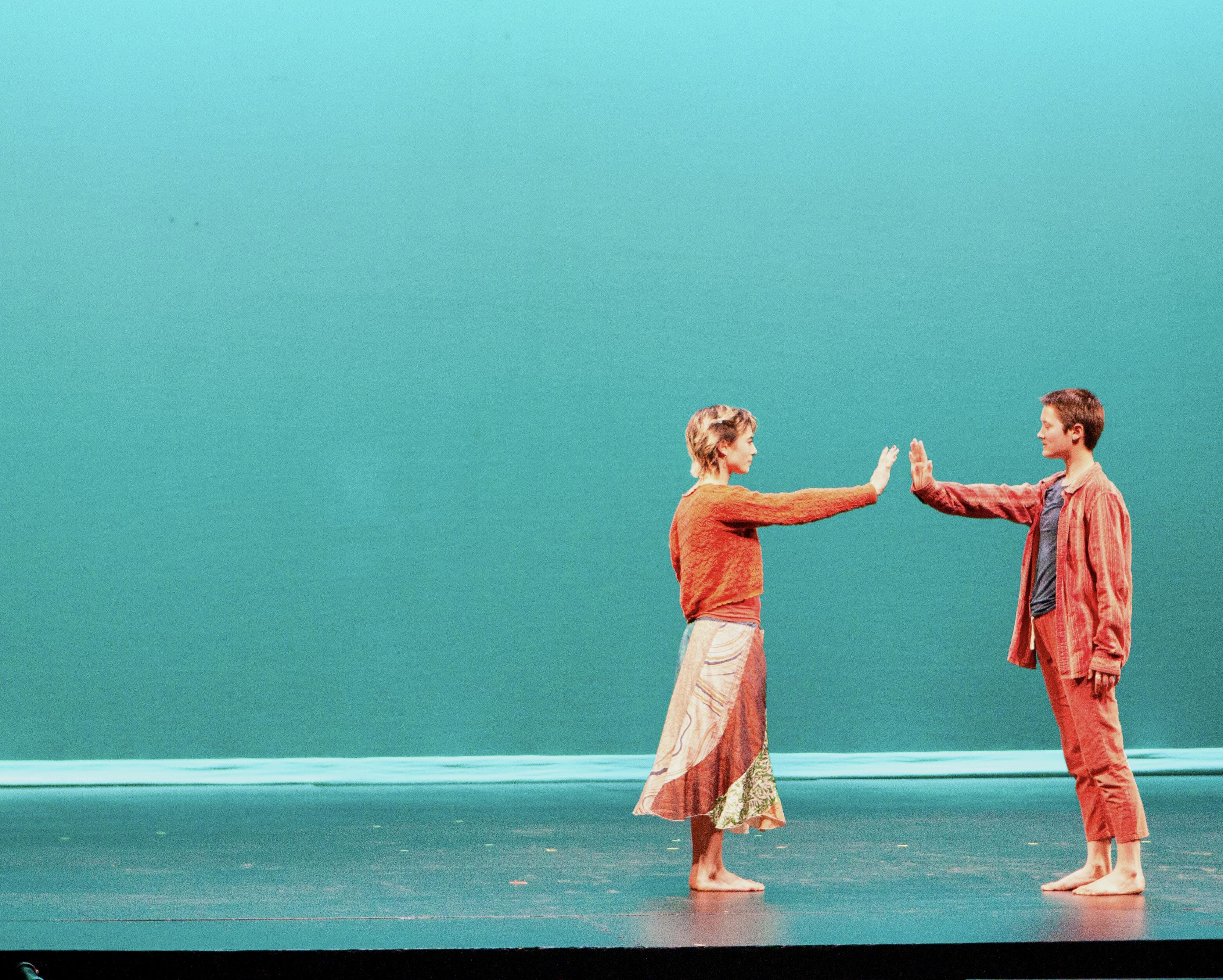 BY MADELYN PHILHOWER staff writer
BY MADELYN PHILHOWER staff writer
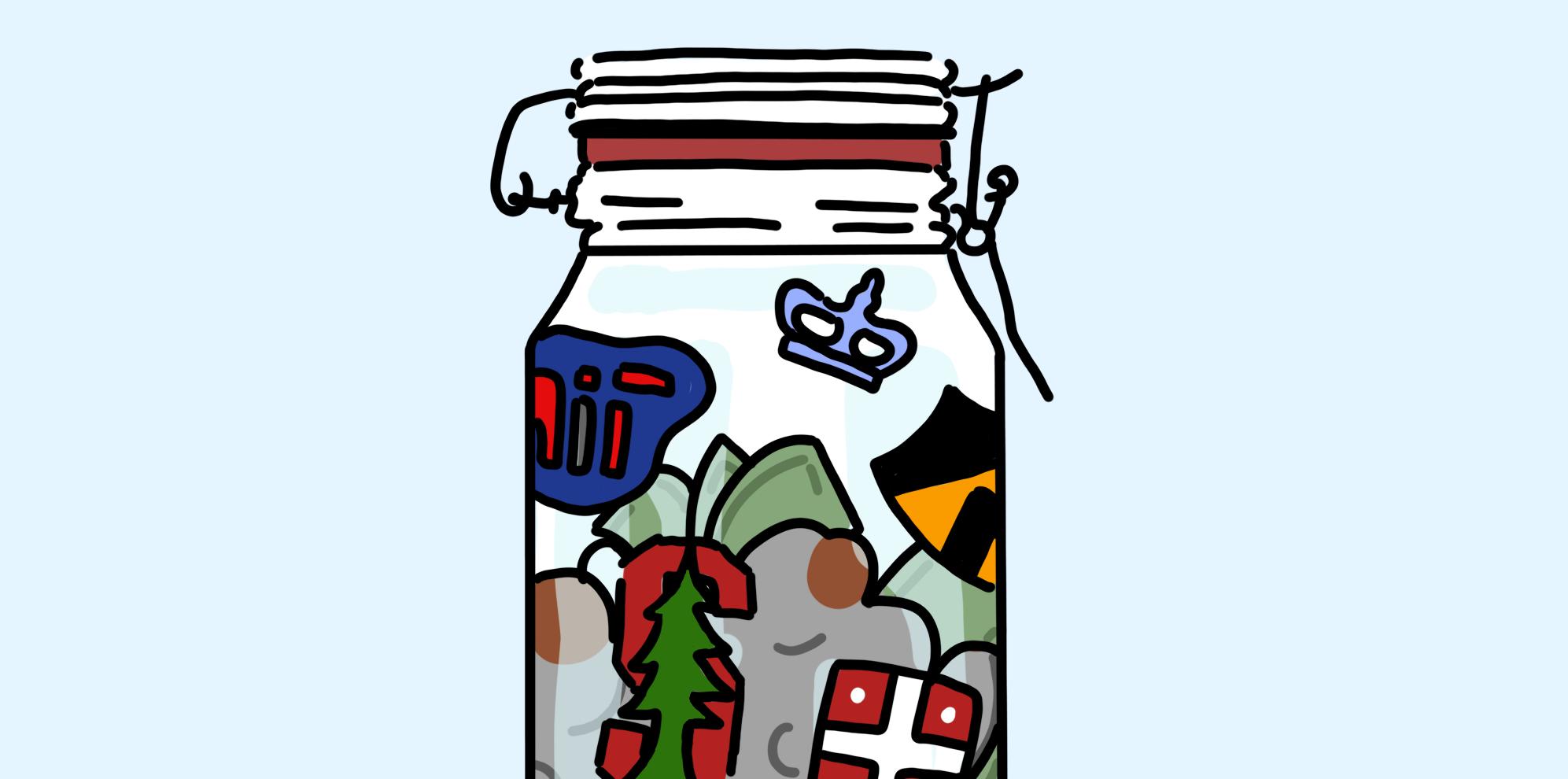
18 silhouettes stood onstage at Berkeley High School’s Little Theater, applause thundering across the room as the opening night of “Our Monologues” came to a close. During the show’s two-hour run time, cast members performed monologues, dances, and songs, exploring a vast array of topics within the BHS community.
Directed by seniors
Mimia Ousilas and Juniper Dorado, this year’s “Our
Monologues” dives into issues of race, identity, relationships, and sexuality through the perspectives of BHS students. Dorado explained how as an entirely student-run operation, a diversity of stories is an important aspect of “Our Monologues.”
“The variety of topics that ‘Our Monologues’ touches on helps (us) humanize each other because we’re learning about all of these different aspects rather than just focusing on one,” Dorado said. Without a variety of subject matter, “we wouldn’t see PAGE 13
Staff remembers Reemajah Pollard
BY AVA RAMSDALE staff writer
“He was very intelligent and he was independent. He persevered through some of the most difficult challenges that a kid can face, so his accomplishments are remarkable and should be celebrated,” said Jessie Luxford, reflecting on Reemajah Pollard’s life.
Berkeley High School alumnus and former University of California, Berkeley student, Pollard was loved by many and his passing is felt within the Berkeley community.
Luxford, a teacher for the Bridge Program at BHS, met Pollard his sophomore year, and recalled him as a determined student who was funny and always helpful to others. She said that his ability to get along with anybody made him stand out, and he consistently
made the classroom more exciting.
“He gave me a lot, as a father, as a person who was his mentor, and his counselor,” former BHS college counselor David An said, who was a mentor to Pollard throughout his time at BHS. According to An, Pollard was not only an inspiration to his peers, but to his mentors and teachers as well, who loved to see him smile and laugh.
Prior to becoming his college counselor, An and Pollard developed a relationship when they were introduced by Pollard’s longtime friend. Pollard would often stop by the College and Career Center (CCC) to check-in with An, and An was glad to be able to support Pollard on his college journey as well as through his personal life.
According to An, Pollard opened up to him about some of the PAGE 10
ADEA HANSEN-WHISTLER FEATURES
Black students face private school isolation
BY CHARLIE TAMAGNO staff writer

4.7 million students in the U.S. were enrolled in private schools in fall of 2019. In comparison, nearly 50 million students attended public schools. Of this population of private school students, just 9 percent identified as Black, according to the National
Center for Education Statistics. The experience of students of color at private schools in the Bay Area is a unique one. Families usually choose to send their students to private school in order to put a stronger focus on their academic experience, but these schools tend to be overwhelmingly white. It can be isolating, especially in smaller schools with just one
Senior night recap: Boys, girls soccer, girls basketball
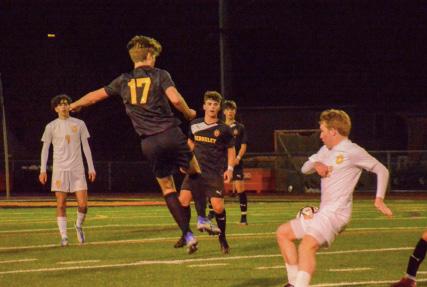
or two students of color.
Alex Scott is a current freshman at American University who recently graduated from Bentley School, an Oakland private school, where they were one of only a few Black students. They attended private schools their entire life, which they considered an incredibly beneficial academic experience, but rough in
terms of finding people with a similar life experience. They explained that attending predominantly white schools, especially those with a mostly upper-class student population, caused damage to their self-esteem. Scott became self-conscious in school. “I’d be one of the only Black people in class,” Scott said. “I always felt like the odd one out in my PAGE 11
Feminist concepts battle misrepresentation, stigma
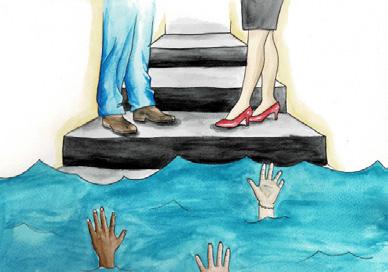
ENTERTAINMENT
EMILIA FREILICH
www.berkeleyhighjacket.com • friday, MARCH 3, 2023 PUBLISHED BY AND FOR THE STUDENTS OF BERKELEY HIGH SCHOOL since 1912 BERKELEY HIGH no. 13
FEATURES
Feminists’ defiant pride is misconstrued to be harmful instead of normalizing common feminine experiences. PAGE 5 The Jacket is accepting art and writing submissions for our Women’s History Month special issue! More info on PAGE 8
Submit to our Women’s History Month special issue!
February 2, 9
10. PAGE 16
Boys soccer, girls soccer, girls basketball wrapped up at home seasons with Senior Nights on
and
CA Dept. of Education reports dashboard on student achievement
BY MAYA DANG staff writer
On December 15, the California Department of Education released the 2022 California School Dashboard, according to a Berkeley Unified School District press release. The dashboard showcased the performance levels of suspension rates, English Learner progress, graduation rates, and levels of academic performances such as math and English.
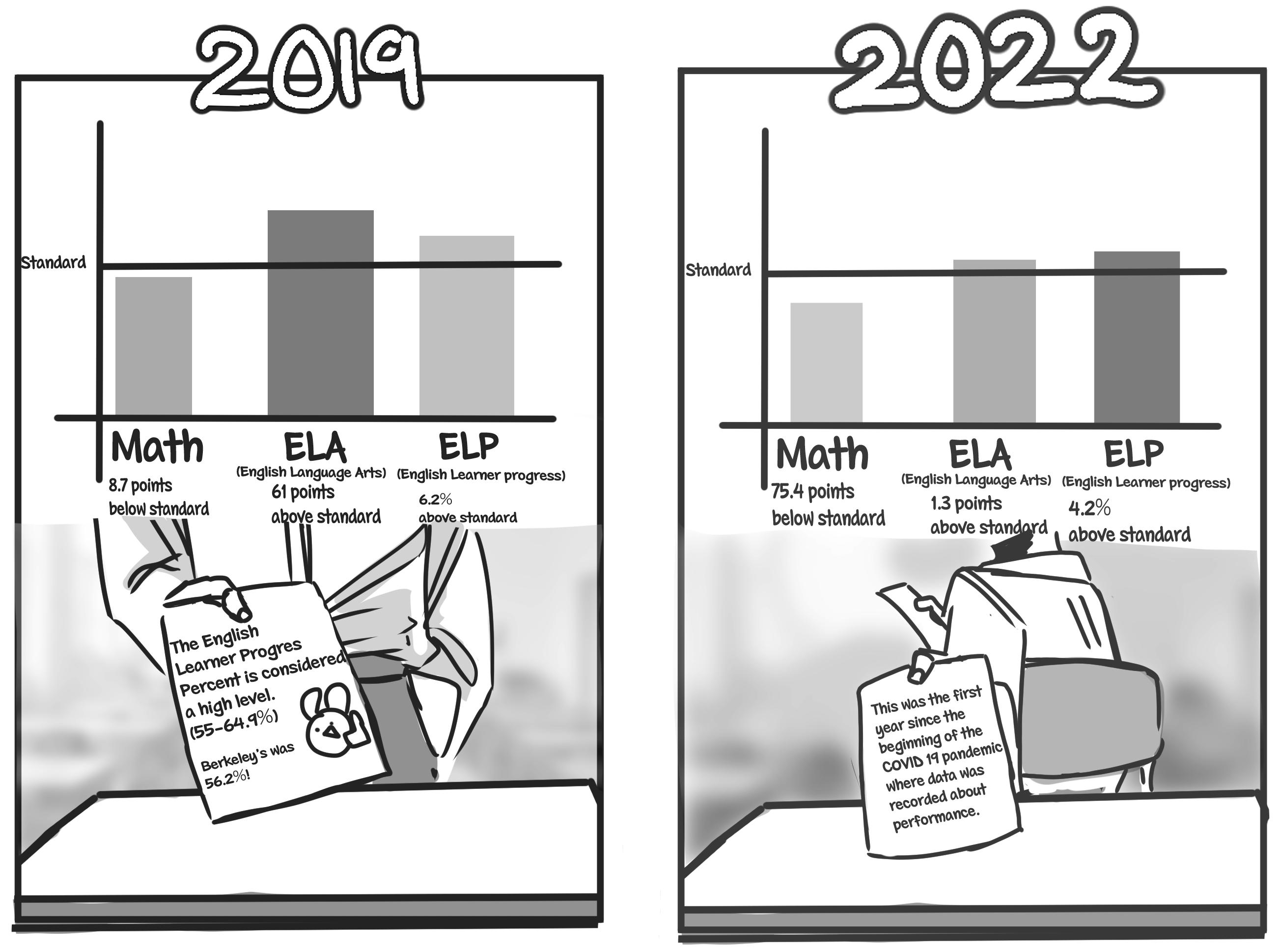
compare data from different years to display trends.
The 2021-22 dashboard is the first to be released since 2019, due to the COVID-19 pandemic, and will present a baseline for future years.
Looking to the future, the data gathered from the 2021-22 school year is one tool that the
“This data highlights the strengths of BHS, such as the fact that the highest graduation rates by race and ethnicity is for students who identify as two or more races, and also areas where improvement is needed.”
dashboard communicates data to the public that our district has reported, such as graduation rates and suspension data,” Berkeley High School Principal Juan Raygoza said. “I’m glad that the dashboard exists because it shows transparency, and we have work to do, and that there’s a lot of things that we should be proud of.”
Raygoza noted that the dashboard is not finished, and currently, much data showing the progress BHS has made is not available.
As reported by the press release, the 2022 dashboard is “status-only,” which means that the dashboard does not
district will use to understand the impact on conditions of learning, as well as progress on academics, attendance, and other performance measures.
“The student achievement
by race and ethnicity is for students who identify as two or more races, and also areas where improvement is needed,” Rok said.
Areas where improvement is needed, according to Rok, include English, math, and progress for English Learners (EL).
be difficult to draw any useful conclusions about students’ progress towards English proficiency without looking at the different populations of English Learners and different domains of the ELPAC.”
Rok also said that BHS
served by different programs at BHS. Their experiences with the ELPAC test vary widely.”
BHS Vice Principal Kiernan Rok described several findings of the collected data. “This data highlights the strengths of BHS, such as the fact that the highest graduation rates
“The English Language Proficiency Assessments for California (ELPAC) is also a statemandated English Proficiency Assessment that tests four domains of language: speaking, listening, reading, and writing. Students receive an overall score based on their results in each domain,” said Anna Maine, Multilingual Program (MLP) co-lead and EL teacher/coordinator. “It would
Berkeley High School overall academic performance
“We need to track students early on and make sure students are passing all of their classes and continue to have opportunities for students to make up credit.”
Juan Raygoza, BHS principal
has several racial inequalities, explaining how the overall success rates for students at BHS follow a predictable pattern, with white and Asian students generally performing better than Latinx and Black students.
Raygoza echoed this statement, saying that BHS isn’t adequately serving Black and Brown students in English and Math. He described how the administration and staff want to increase attendance for all students, especially students of color.
They also want to ensure that more students are University of California eligible, recruit more students for Career Technical Education programs, and continue to support specific groups of students in English and math.
“While I do not believe EL progress can be measured solely by ELPAC scores, I do believe there is much to be done to improve academic outcomes for all English Learners,” Maine said. “All services — including mental health and academic support — for all English Learners must be expanded and supported by the district.”
The BHS School Site Council has created a subcommittee dedicated to improving student achievement. According to chairperson Debbie Taylor, the council’s goal is to understand what data other high schools (and their districts) collect and analyze.
The School Site Council hopes to request and review Berkeley Research, Evaluation, and Assessment’s analysis of student achievement data, course enrollment, and demographic data to improve student outcomes.
According to Rok, the school can give better support to students and increase graduation rates in numerous different ways.
“We can focus on making our classrooms safe and welcoming spaces for all students with rigorous and engaging curriculum and learning experiences. We can continue to invest in our teachers by providing support and quality professional development. And we can continue to provide a high level of wrap-around services such as tutoring, academic support, and mental health counseling to make sure every student has the support they need to achieve success,” Rok said.
JESSIE LEE
Data from the California Department of Education dashboard on student achievement.
BY
However, Maine also described the limitations of the dashboard’s data on ELPAC. “I don’t think (the dashboard) represents BHS students’ abilities. ...The data also does not differentiate between EL Newcomers and Long Term English Learners and EL students with Individualized Education Programs. These three groups are quite different, and they are
PATRONS & SPONSORS
Raygoza agreed with this sentiment. He added that Berkeley High School needs to not only record graduation rates, but in addition track students throughout their earlier years of high school to make a greater difference.
“We need early intervention,” Raygoza said. “Graduation happens after four years, but we need to track students early on and make sure students are passing all of their classes and continue to have opportunities for students to make up credit. (The school needs to) engage and empower students to feel successful and be successful.”
full year subscription, are $250 and up. If you would like to subscribe or contribute any amount, please send a check to the BerkeleyHighJacket,Business Manager, 1980 Allston Way, Berkeley, CA, 94704. Checks can be made out to the Berkeley High Jacket. For more information, contact Business Managers Ada Rauber and Lola Brownlow at bhsjacketbusiness@gmail.com
Chuck
FRIDAY, MARCH 3, 2023 2 Kaiyajordan@students.berkeley.net news editors: Kaiya Jordan &
BERKELEY HIGH JACKET NEWS
Kira Rao-Poolla
SPONSORS The
Jacketneeds
your help! As a completely student-run, self-funded newspaper, we rely heavily on financial aid from patron subscription and business advertisements in our newspaper. Our prices are $60 for a one semester subscription, and $85 for a full year. Full sponsorships, which include a
Smith, Aidong Ni and Arrol Gellner, Laurel Leichter, Steve Jackson, Elliot Shrag, Julian Currier, Pearl Gauthier, Ahmet Gyger, Kathrine Chynoweth, Kate and Scott McGlashan, Natasha Reichle, Robert Stepsis, Claudia Polsky
Kiernan Rok, BHS vice principal
DESIGN
REBECCA BIRENBAUM
Admin works to update School Safety Plan
BY FINOLA JACKSON staff writer
The California Education code mandates that all public schools annually submit an updated and reviewed Comprehensive School Safety Plan (CSSP) to the state by March 1. Shaheen Mohammad, Dean of Students, led this years’ effort to update the Berkeley High School Safety Plan.
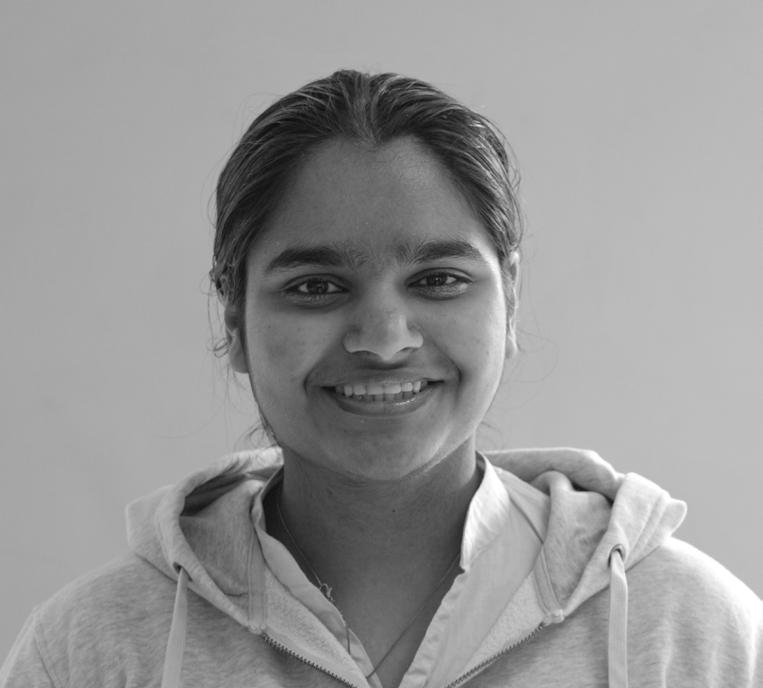
The BHS School Safety Plan currently includes protocols for situations ranging from earthquakes to on-campus sexual assault to armed intruders. This 83 page document, available on the Berkeley Unified School District website, also provides direction on student discipline and mental health aid to students after emergencies.
Additionally, the CSSP contains plans for unlikely disasters, which include hostage situations, terrorist attacks, fallen aircraft, and explosions. Page 15 of the CSSP proclaims room H104 as the schools’ designated morgue area.
Teachers access expansive information about school safety protocols through emails from administration, according to Hillary Fong, a U9 Ethnic Studies teacher.
Teachers receive training in the form of interactive videos. Teachers are given 5-6 different videos covering things like active shooter scenarios, bloodborne pathogen transmittal, and mandated reporting. They have questions embedded and a quiz at the end where the taker must score at least 80 percent correct to pass.
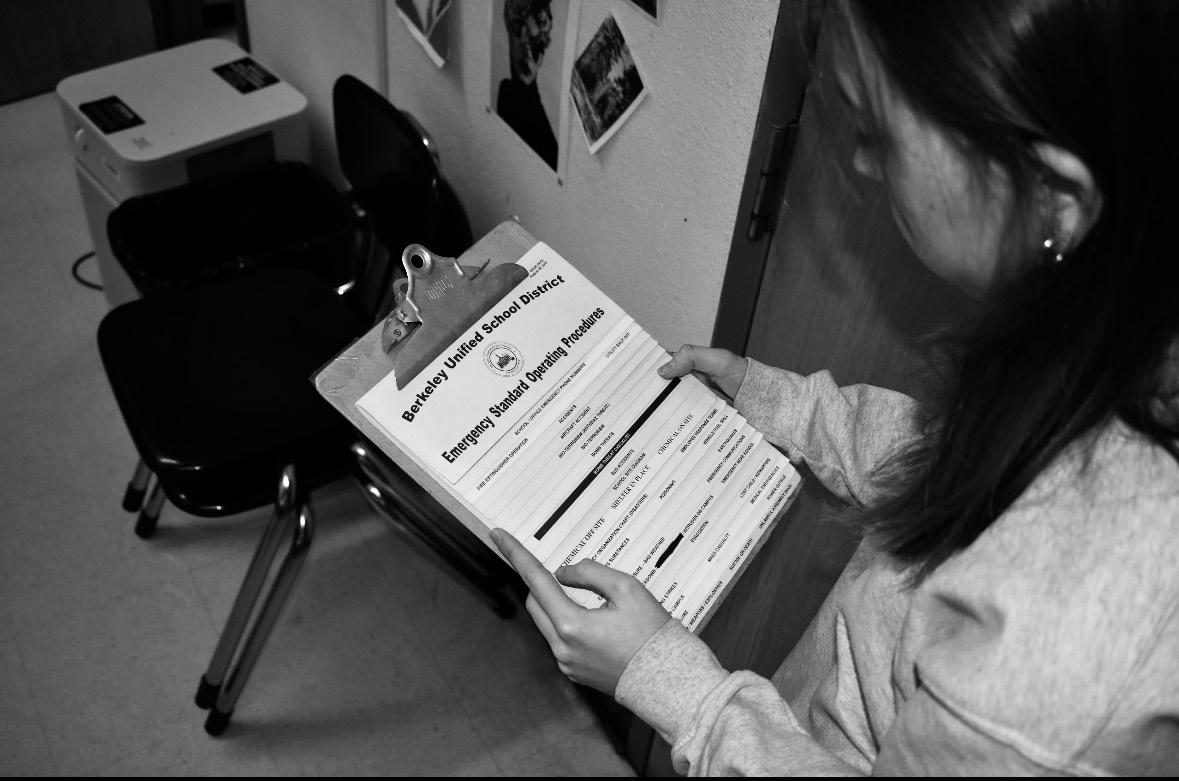
Teachers had in person training on those subjects in the past, and have discussions about them in regular meetings from time to time.
Teachers are also trained in practical application of the School Safety plan.
“We’ve practiced barricading the doors, and evacuating in the event of an earthquake,” Fong said.
Additionally, each classroom holds a small booklet of emergency procedures, essentially a condensed school safety plan.
BHS students partake in active shooter drills and emergency earthquake evacuations. In the case of a violent intruder incident, students watch educational videos on ALICE protocol, an acronym for Alert, Lockdown, Inform, Counter, and Evacuate. Students practice evacuating for fire drills and earthquake drills.
“(In the event of an earthquake), People have in
the back of their heads, you need to drop down and hold your neck, because it’s also something that’s been taught throughout school,” said BHS sophomore Nia Adeborna.
Student teachers, however, have sparse emergency training, according to student teacher Timothy Finnigan.
“You’re just sort of thrown into the fray, and with the expectation that you’re going to abide by your host teacher’s expertise with those things,” Finnigan said.
According to Fong, being prepared and improvising are both important, dependent on the situation.
“It’s good to know some general things,” Fong said. “So just find people and figure out how to take role (call). But at the same time, I feel like sometimes major disasters kind of mess up the whole plan. So you have to
improvise.”
Finnigan said training can be useful if students are able to hear directions, but that students also benefit from trusting their instincts.
“It’s great to have a plan,” Finnigan said. “It’s great to have systems in place, places to go, places to be, but also have trust in yourself as an individual and to respond in a way to your own instincts for survival. Some BHS students acknowledge the necessity for regularly updating the school safety plan, given the prevalence of school shootings in the United States.
“We’re there knowing that (school gun violence) is a reality,” Adeborna said. “Especially when there are loud noises, you’re like, (gun violence) could happen, because it has happened at other schools.
BHS Community Theater set to open in May
show) on that monitor and know, it’s time for me to go.”
Despite many new features, the house of the theater will remain untouched, still containing many of the original details from the theater’s initial design in 1938.
Blatt added that the Community Theater has a rich history; famous artists such as Jimi Hendrix, David Bowie, Led Zeppelin, Elton John, and many others have performed on its stage.
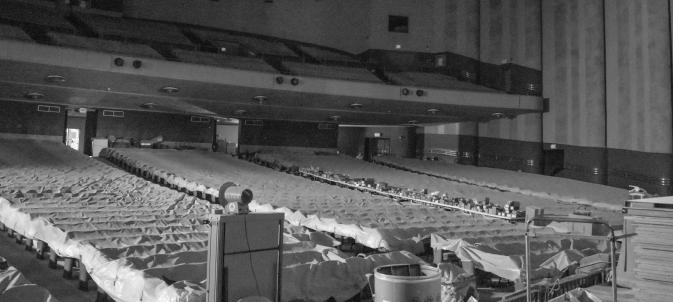
involves things like seismic retrofitting, to make it safer for earthquakes,” Blatt said.
those with disabilities.
On January 3, the A Building reopened, but construction on the Community Theater has continued since. The theater first went under construction in the summer of 2020. The process was initially expected to be completed by the summer of 2022, though the school now predicts construction will end sometime in May of this year, according to BHS Vice Principal Harrison Blatt.
The total budget for the theater and the A Building sums up to approximately $60 million according to BUSD spending reports.
“It’s a pretty comprehensive project that
“There’s also some pretty extensive work done to the backstage area, like dressing rooms, green rooms, and storage.”
He added that the stage has been scaled down to accommodate the new backstage area, but the 3500 seats will not be altered.
The space will also be made more accessible to people with disabilities, with additions such as ramps and accessible bathrooms.
“Now, it’s much more open and welcoming to all people, which I think is really really important and fits with the values of the school and the community,” Blatt said. Reaching the restrooms was previously much more difficult for
Jordan Winer, a drama and AC English teacher, spoke about the function of the flatscreens that were recently added to the A Building classrooms.
Classrooms in the A Building will serve as green rooms, a space for performers to get ready and wait before, during, and after performances in the theater. Additionally, a new sound and video system is being installed throughout the A Building and Community Theater, which will enable people in the green rooms and the lobby to observe what occurs in the theater.
“If we’re doing a show in the theater we should be able to turn this on and actually hear it,” Winer said. “Or even cooler than that, is we could be watching (a
“The goal is to bring it back to that level of prestige within the community and really put on some professional performances that are supported by the students,” Blatt said.
Other plans for the use of the theater include student musical and theatrical performances, graduation events, and other student productions. While classes are held in the A Building, they will have access to the Community Theater and Little Theater, Blatt said.
Blatt discussed his hopes on the impact of the renovation on the community.
“I think it’ll really inspire a lot of students, families, staff members, to come to Berkeley High and do really amazing things in the performing arts,” he said.
After months of searching, I finally got a new job last month. But, as President Biden gave his State of the Union address on February 7, it became apparent that I was one of thousands to have had a career shift. The new year of 2023 came with a spirit of opportunity for thousands of Americans, as job reports showed 517,000 new jobs created in the market as of January. Unemployment is at a record low of 3.4 percent (CNBC). Biden also mentioned in his speech the growth of new business applications — approximately 10 million new business applications between 2021 and 2022. If everything is going so well, then are there even any issues in the job market? What was that whole fiasco about tech company layoffs? Aren’t we heading into a recession?
Early in 2023, you may have come across news about the white collar layoffs: this largely means layoffs in the tech industry. Companies like Google, Goldman Sachs, Washington Post, Meta, and many more have been cutting down on employees. Coming across a headline like this is an obvious cause for concern because one increasingly questions the possibility of the economy heading into a recession. This is particularly concerning for the Bay Area, as we are home to many big-name corporations that were said to be laying off workers. So, what is the job situation in the Bay Area?
Bay Area unemployment rates are still remarkably low. Economists evaluated the layoffs situation and eventually stated that the fear and news of layoffs has been overblown. The number of people employed post-pandemic still stands way above the prepandemic number. In the larger scheme of the job market, people are employed and new jobs continue to be created. However, the fear of a recession crosses many minds due to a variety of other economic worries.
One of these worries is inflation, which is far harder to combat while the job market stays strong. With low unemployment rates come higher consumer spending. People earn money and spend money. So, despite The Fed raising interest rates to lower economic activity and investment rates, relatively high consumer spending sustains inflation. However, higher interest rates have a direct impact on businesses. Inability to break even due to increased costs of operations and lack of adaptability can cause businesses to shut down. More importantly, high interest rates make it hard to take out a loan, which can toughen circumstances for many businesses.
Knowing this, I was puzzled as to how it’s possible for there to be 10 million new business applications simultaneously with high interest rates. Also, how is there such a high rate of employment if times are tough for businesses? My educated guess is that we are in a lag period. A time period in between an incident and its impact. The strong consumer spending is keeping businesses afloat. It is also true that while inflation makes things harder for businesses, it is not to the extent of business shut-downs. Also, the concern of interest rate does not impact pre-existing, well established businesses as much as it may the new businesses. Since we are in a lag period, we must wait and see how many out of those 10 million new business applications actually persist through and how interest rates might impact the unemployment rate.
NEWS 3 FRIDAY, MARCH 3, 2023 BAY BRIEF GURSIMAR KAUR
MADI NATHAN
BY VIOLET MILLER-BRADY staff writer
MADI NATHAN
BHS student views document on emergency procedures.
Community Theater construction continues into March, with seats covered in tarps.
Bridge program provides support for post-high school options
BY AARON STEVENS staff writer
Originally piloted in the summer of 2010, the Berkeley High Bridge Program has provided support for students, often first generation to college or students from socioeconomically disadvantaged backgrounds, while preparing them for college and helping them build academic skills, as stated on Berkeley Unified School District’s Bridge website.
Not only does the program work to keep students on track from their freshman to their senior year, but it also provides many resources related to the college exploration and application process.
The Bridge program plays an important role in making sure that its students have enough information to make informed decisions about their post-high school options.
Additionally, according to Luxford, in past years the program has also toured colleges such as Stanford University, Santa Clara University, and UC Santa Cruz.
daily afternoon meetings, weekend study sessions, and regular tutorials throughout their four years at Berkeley High School, Bridge students invest between 150 and 250 additional academic hours per year in their education.” Currently, Bridge serves four cohorts, totaling approximately 120 students per year.
The Bridge program plays an important role in making sure that its students have enough information to make informed decisions about their post-high school options.
The Bridge program’s college tours were interrupted by COVID-19.
Touring nearby colleges is a major part of the program and, according to Meredith Irby, a Bridge teacher and one of Berkeley High’s librarians, is essential.
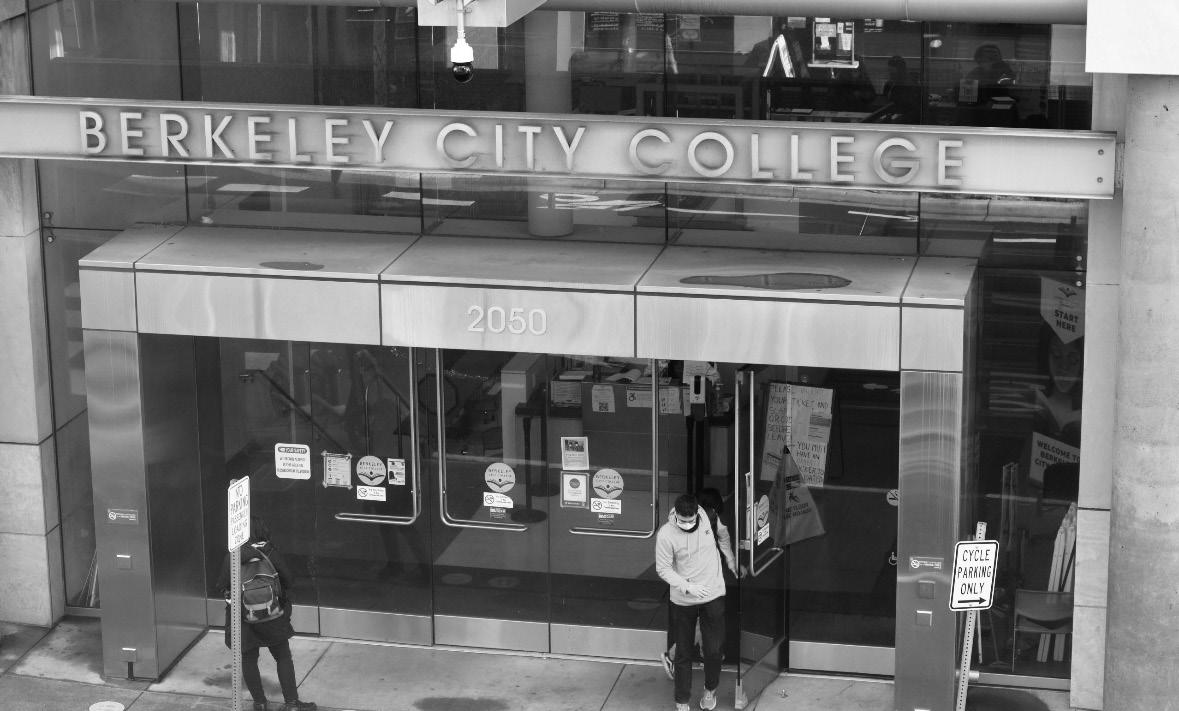
“I think the college visits are really important and really impactful. We went to UC Davis and Sacramento State last year, and just getting a sense of the campus and if they can see themselves there,” Irby said.
“When we weren’t in school, we weren’t able to go. And now we’re playing catch up for all the cohorts that weren’t able to go,” Luxford said.
Bridge is described in the 2018 Western Association of Schools and Colleges Report as a voluntary program for students who have the desire to attend college, specifically underserved students.
The report states, “Beginning with the summer session prior to 9th-grade year and continuing with
According to Bridge Coordinator Jessie Luxford, while the program started as a threeand-a-half-week summer program for high schoolbound eighth graders, over the years, it has been transformed into the current fouryear program. Each cohort of Bridge students is assigned a teacher whose goals center around providing social and academic support throughout their high school years.
“I think that Bridge is really effective at helping students make sure they’re on track with their classes, and kind of being that extra support when they’re falling behind, and making sure that students are connecting with their teachers, working on their self-advocacy skills,” said Meredith Irby, a Bridge teacher and also serves as one of Berkeley
High’s librarians. Staffing shortages have also impacted the Bridge program.
Despite this, the program has continued thanks to Luxford’s dedicated leadership and the continuing efforts of staff.
a class, only certified teachers can take on the role of cohort leader. As shared by Luxford, the Bridge program is currently trying to become an official
“It’s been one of the hardest and most rewarding things I’ve ever done. I feel like I’ll know them after they graduate, and that’s really special.
The benefits of the program have not gone unnoticed by the district, as according to the BUSD 2022 budget, the program received enough financial support for each cohort teacher to be fully funded for their role.
I’m really grateful for that experience.”
“There’s been enough interest every year. And now what we’re trying to do is open it up for the counselors to lead the cohorts,” added Luxford. Since the Bridge program is technically considered
Meredith Irby, BHS librarian and Bridge teacher
program, which would allow counselors to have the position, hopefully eliminating the issue of staff shortages.
“It’s been one of the hardest and most rewarding things I’ve ever done,” Irby said. “I feel like I’ll know them after they graduate, and that’s really special. I’m really grateful for that experience.”
BHS seniors reflect on the impact of pandemic on school spirit
Lelchuk said the staff was “Pushing back on it … more than in the past year. I think like my freshman year, we fully had an assembly during Rally Day and, like, all the school was there, and we all were cheering and they had the seniors come out, but this year there was nothing.”
BY SABINE ROSEN staff writer
The last part of freshman year and the entirety of sophomore year can be a crucial bonding time for classes. Due to the pandemic, 2023 seniors missed these parts of the high school experience. On the other hand, the 2019 class of seniors was the last Berkeley High School class to graduate without classes being moved online. COVID-19 left significant impacts on student spirit, yet many senior classes are beginning to develop spirit once again.
Even though our 2023
class of seniors didn’t have as much of a chance to bond due to school being online, Aja Lelchuk, a senior in Berkeley International High School (BIHS), still thinks their class is fairly close.
“I feel like last year everybody came back to school and was really ready to socialize and kind of felt like we needed to make up for the time loss,” Lelchuk said.
Even though 2023 seniors missed out on socializing, many made up for it during junior year.
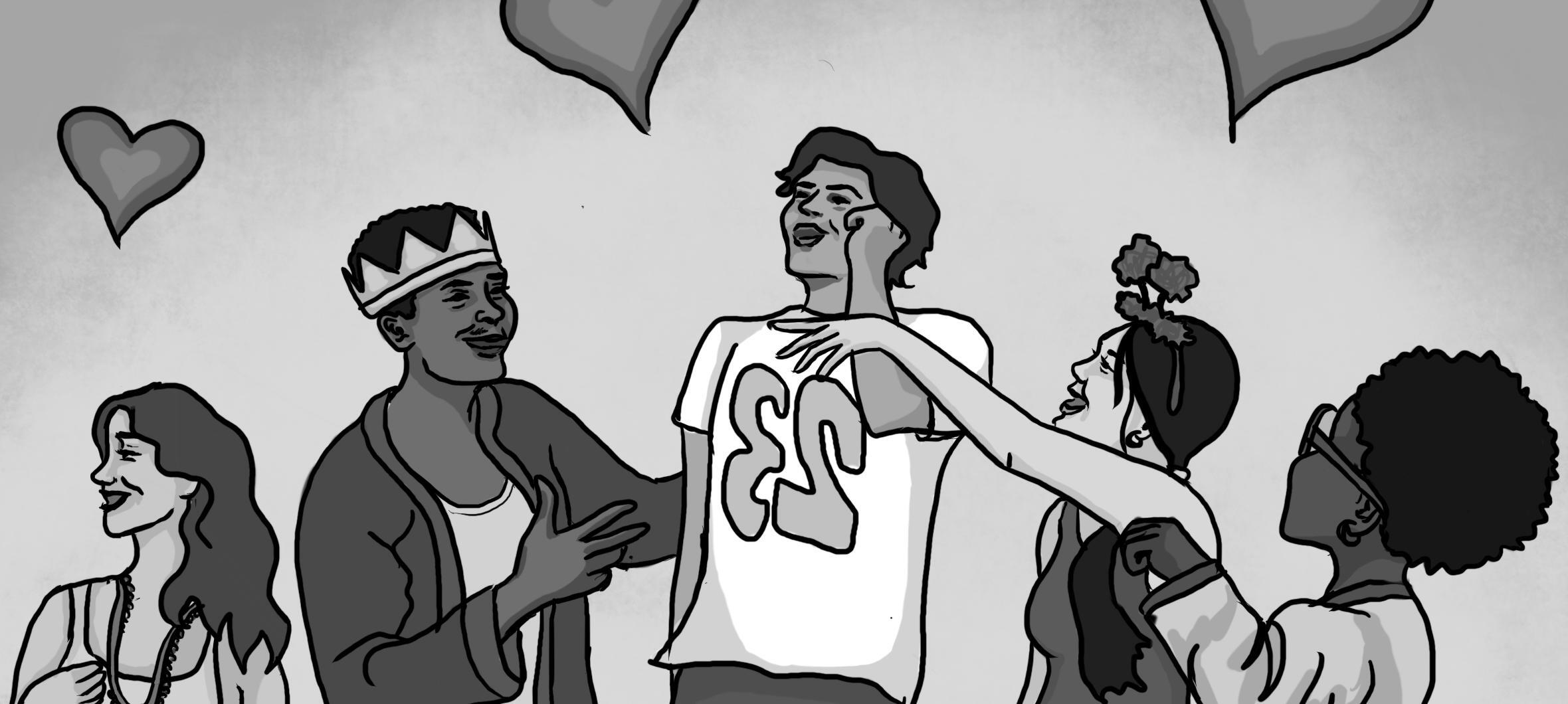
“I can’t see us being closer than we are now, but I think that it would have been a more gradual shift. I’m not sure if it would have really
changed the connections or like the strength of the bonds within (our classes),” Lelchuk said.
On the other hand, Rachel Obbard, a senior in Arts and Humanities Academy (AHA), thinks that the senior class would have bonded more if they had had freshman and sophomore year fully in person. She thinks right now she only knows her small school classmates really well and the extra time would have helped her to connect with more people.
A class of 2019 senior, Luca Spycher also talked about how well he knew the people in his grade.
“I would say I felt kind
of close to the people in my class … But I mean, there were still people popping up in my classes senior year who had gone to Berkeley High for years, and I’m like, ‘I’ve never seen you before,’” he said.
While some feel that the seniors this year during Rally Day didn’t have much spirit as usual, the staff played a role in that change. BHS administration tightened restrictions on what was allowed during Rally Day this year.
As for all other senior events like Senior Sunrise and Senior Spell Out, Obbard isn’t quite sure why they have lower turnout as before. She said maybe it’s because, “It’s not as much of a big thing within our grade as it used to be.” On the senior spirit events, she added, “I didn’t want to go since no one that I knew well was doing it, but I would have liked to go if
school spirit. While some students feel that Rally Day isn’t how it used to be, the love and commitment to Rally Day for many has stayed present. Riley Kirkman’davin, a class of 2019 alum said, “It was chaotic and fun…. I mean for like all of passing period you would hear f--- ‘20 in the halls.”
The class of 2019 also pulled off a senior prank. After school one day, students filled up one of the metal planter boxes that surround the trees near the A Building with tons of water. They proceeded to buy goldfish and add them to the planter boxes leaving tiny fish swimming on campus. “The administration didn’t know what to do with them, so we just had on-campus goldfish for a while,” Kirkman’davin said.
“There were still people popping up in my classes senior year who had gone to Berkeley High for years, and I’m like, ‘I’ve never seen you before,’”
Luca Spycher, 2019 BHS alumnus
they were.” This year many students adjusted to school in-person, leaving potential for future years to build up
For the class of 2023, Lelchuk said,“I think it’s been, like, hella stressful … I don’t think we’ve gotten to that point in the year yet. I think the second semester might feel more like senior year.”
NEWS ASHLEY DIAZ
FRIDAY, MARCH 3, 2023 4
GWENDOLIN WEBER-STOVER
The BHS Bridge program educates on post-high school options, including Berkeley City College.
The issue with misconstruing feminism
BY SIMONE FAULKNER staff writer
Womens' autonomy, sexual liberation, and a supposed “kill all men” mentality are ideas often used to villainize feminism. The word feminism is commonly misconstrued to mean women’s independence from men, and even women’s superiority. According to a global study conducted by Ipsos, one-third of men worldwide believe that feminism does more harm than good and attacks traditional masculinity, which isn’t the goal of the movement at all.
At its root, feminism is not independence nor superiority, it’s the advocacy for women’s rights, aimed at reaching equality of the sexes. Feminists’ defiant pride in aspects of womanhood that are deemed socially unacceptable is misconstrued to be harmful, instead of an attempt to normalize common feminine experiences.
A significant amount of aspects of womanhood have been stigmatized. Often men, but sometimes other women, negatively comment on other women’s body
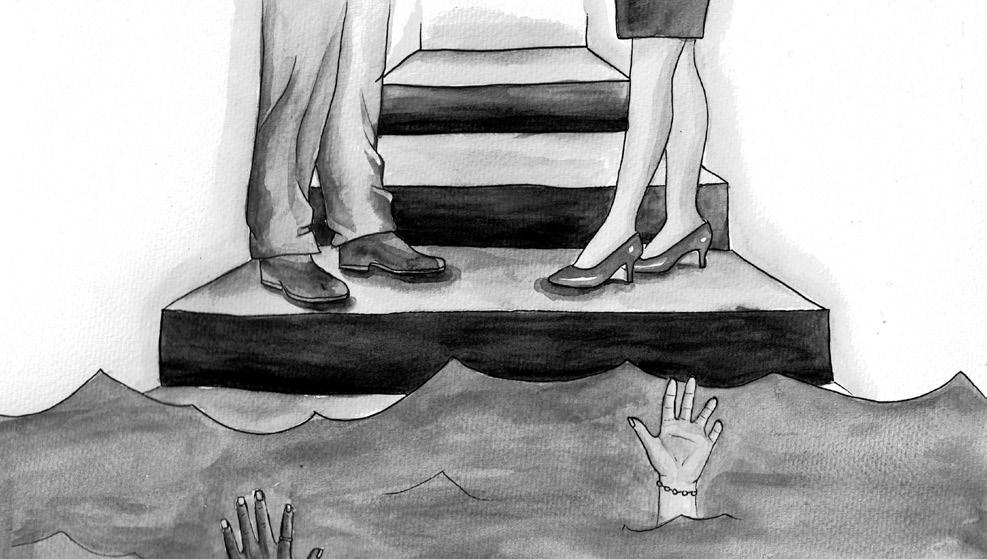
hair, periods, employment, emotions, parenting, clothing, and the vast amount of different choices that women make. This is seen as 20 percent of men globally believe that women are the inferior gender, according to Ipsos. Women who are comfortable with their body hair, talking about their periods, freely breastfeeding, and more, are often demonized for making these choices, and women who prefer to be hairless, who choose to not have children, or to stay employed when they have children, can be demonized too for not fitting the “male gaze” and acting selfishly. There is no way to win.
Men and women alike pervert the idea of feminism, only to highlight a specific type of person — the perfect woman. But feminism is supposed to be inclusive, right?
This is when feminism, a broad term, is abridged. White feminism emerges, a submovement that only focuses on one type of person. White feminism, as well as straight feminism, cisgender feminism, ablebodied feminism, etc., only presents certain faces of the movement while ignoring parts of history it doesn’t
wish to consider. White feminism does fight for women’s equality with men, but only focuses on equality for white women and fails to address the other forms of oppression, aside from gender, that other women face on account of other marginalized intersectional identities. Women of color, LGBTQ+ women, and non-able-bodied women fight for gender equality with the added possession of these identities and the discrimination that accompanies them as a result. The exclusionary nature of feminism has existed since before the original women’s rights movement and the suffragettes; women who do not fit the constructed standard of womanhood are excluded from a seemingly inclusive movement.
Though it is a tool for hate for some, feminism is a movement meant to uplift women and fight for their equality. This should be the main focus.
Berkeley High School’s curriculum often features women’s literature, history, and feminist theory that contributes to the movement and complements students’ on-campus action for inclusive feminism. Groups like the Women’s Student Union, Body Positivity Club, and Feminist Book Club, among others, work to uplift women and include all who want to participate. Students of color, men, LGBTQ+ students, and non-able-bodied students hold a place in these student clubs which helps spread the understanding of what feminism really is: an inclusive equality movement.
WHAT AM I?
YANCY MICEL ALEGRE-PACHECO
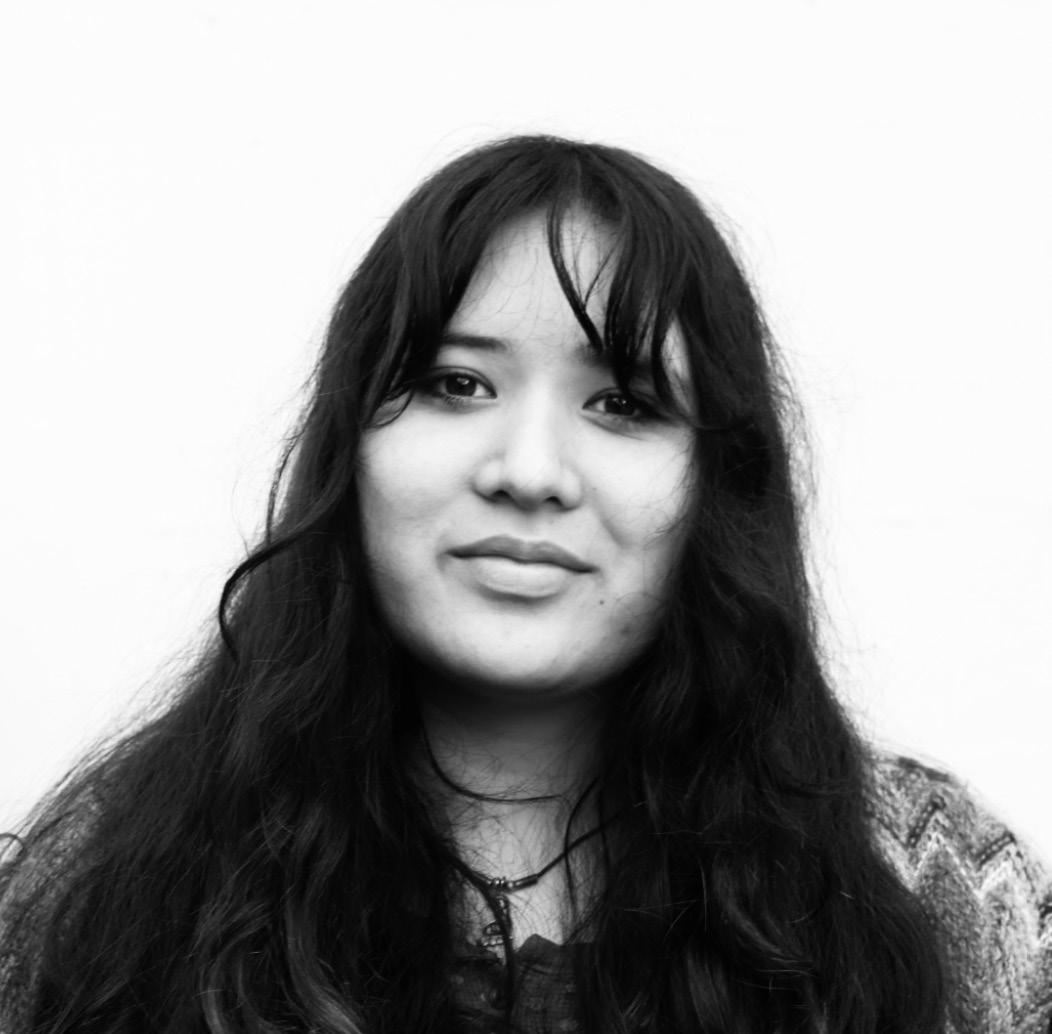
I am American. At least, that’s my nationality. The stigma surrounding the word “American” makes me struggle to identify myself with it. When I am asked this question similar to “Where are you from?” or “What are you?” I always say I'm from the U.S. just to see their face contort. But when I am asked about my ethnicity I always say that I am Honduran and Filipina or Hispanic and Asian.
When I say this, I myself flinch, because deep down I feel this is not true. I feel I'm not enough of either to consider being put in the same sentence as them.
LEILAH DOOSTAN
March’s endless grind: How to manage it
BY JULIA BRIMMER staff writer
Nothing happens in March. Though home to Women’s History Month, St. Patricks Day, and the National Latin exam, the thing that makes March secretly unique is the fact that there are zero non-weekend days off throughout the month, leaving Berkeley High School students endlessly wandering the halls for fiveday weeks and yearning for the weekends.
While the introduction to March as an endless grind of work without play may seem like an exaggeration, it really does capture how many
people, not just students, view their time off work and school.
Burnout is real. “In my 27 years as a chemistry teacher, I have definitely experienced periods of burnout,” Aaron Glimme, a BHS chemistry teacher, said. Paul Bishop, a student at BHS, noted that he typically feels burnt out when ends up constantly frustrated from doing repetitive tasks. This shows how monotony can often lead to burnout and stress, making breaks from school seem like the best way to break that monotony.
Though breaks can appear beneficial in getting students and workers refreshed for the future, studies have shown that
those benefits do not always stick around long-term. The American Psychological Association found through surveying that around 25 percent of working adults believed that the influx of energy and reduced stress that comes with vacation disappears the second they return to work. 40 percent of these adults said that those benefits only last a few days.
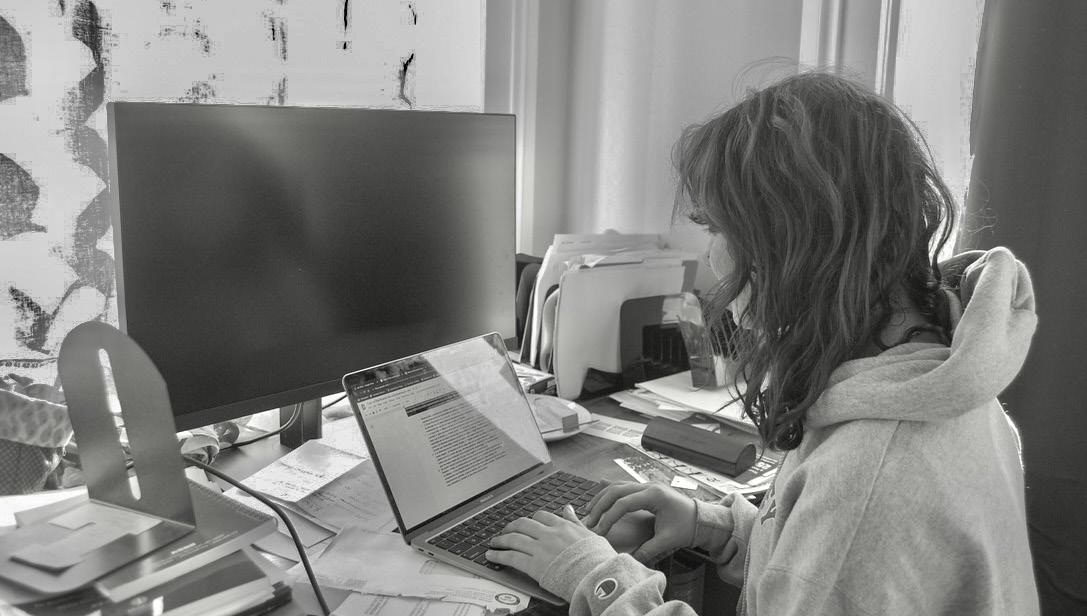
Bishop understands this phenomenon. “I usually look forward to school because Mondays help ease students in generally … but a lot of the time many pieces of homework I didn't remember will come back to me and then I’ll start stressing about that.”
So, what are BHS students and staff supposed to do when they’re feeling burnt out, but breaks aren’t there to help them?
First, finding ways to switch up your day-today lives can be beneficial. Glimme found that partaking in science internships outside of his job at school definitely helped him cope with burnout that
comes with being a BHS teacher. “I generally like to break up my day into things I enjoy to do and school work,” Bishop said, discussing ways he manages stress.
In addition, music has been found to relieve stress. In an overview of a study published in 2020, researchers concluded that listening to music can release endorphins and improve our sense of wellbeing, distract listeners, reducing physical and emotional stress levels, and reduce stress-related symptoms. “Listening to music definitely helps. I can kind of just zone out for a song or two, and if I'm listening to music while doing work it might help me find the drive to continue doing that thing,” Bishop said on the effects music has on his stress levels.
While March can seem daunting, there is still hope for students as long as they are able to improve how they cope with stress as a whole. Working together, students can get through this March madness.
However, at this point, I have somewhat come to accept the idea of being “American.” Though the culture of the U.S. is not apparent, just like a blood stain on a white shirt, any person of color sticks out. When you think of an “American,” you think of burgers, hot dogs and the Fourth of July, but we are so much more than that. We are the capitalist scum, we are the righteous protesters on Wall Street, we are shooters, we are shot at, we are the suburbs, we are the ghetto. The history of the people versus the government is a long and strong one in our country. Most of the conflicts were to fight for something that was taken away or to gain something that was never had. The start of the U.S. independence was caused by people who were done with being under unfair government control, yet in many ways, continued to be the thing they ran from. But from the roots of the U.S., we were always the ones who fought. We were born to be free.
I say this to explain that although the U.S. is far more than just burgers, hot dogs and the Fourth of July, I still am not associated with the Christian housewife that gossips about Mary Lou Anne’s son at book club, not as if I could ever be any other Midwestern stereotype. Since I am not American enough to belong, I'm not Latina enough to belong, and I'm not Filipina enough to belong, I don't belong. I’ve explained that I am not great at fulfilling the American prophecies so you’d expect me to be something else. I am not. I am whitewashed, to say the least. I grew up listening to classic American rock and all that. I never learned to move at parties; unlike Shakira, my hips share plenty of lies. Yet, as I’ve explored in other columns, I am constantly experiencing the push and pull of the cultures and environments that surround me and will continue to surround me. This is because the categories that societal norms have created don’t have a box for me. I’m too dark to be looked at as an American. There are few people that have had similar experiences as me. At this point, it’s hard to have anyone to express frustration to, as not many will get the feeling of being entirely left out of your identity.
You can't be something that you’re not, and I wish it was far easier to just be yourself in the land of the free. I’ve learned to not let others tell me if I’m up to their standards.
mayamookherjeeamodt@students.berkeley.net opinion editors: ella creane & ellora mookherjee amodt BERKELEY HIGH JACKET OPINION 5 FRIDAY, MARCH 3, 2023
LILA HALLWARD Student studies on laptop, surrounded by work.
Women must value interpersonal relationships
Perhaps the most devastating oppressive strategy used against people subject to maltreatment is uprooting camaraderie within them. As women, straightforward connections with each other have been complicated by the patriarchy, weaving a toxicity into the formulaic thought patterns of which we extend human compassion. As a generation, we must welcome and encourage female companionship and protect the homosocial relationships that lay a foundation for achieving gender equality.
Historically, relationships and marriage were a way for women to attain power and security. Nowadays, while women’s rights have changed drastically for the better, this outdated image of “needing a man” has unfortunately prevailed through media. Movies, books, and television that display romantic relationships dominating over all else have crept into the subconscious thoughts of everyday interaction.
Editor-in-Chief
Managing Editors
Layout Chief
Layout Editors
Outreach Director
News Editors
Opinion Editors
Features Editors
Entertainment Editors
A pressure to attain what’s so heavily propagated as the gateway to happiness is hard to ignore. We must teach young people that romance cannot stand above platonic companionship. That fulfillment comes from a plethora of healthy relationships, romantic and otherwise, and that all types of connection hold equal value.
Another aspect of media that leads to strain in female companionship is female characters portrayed through the male gaze. Female characters frequently extort personas that focus more on oversexualization and association to men over individuality and intelligence. Young girls attempt to emulate this image as they grow older, leading them down a path of shallow discontent. Only in recent years have these characters in movies and television taken on new and nontraditional roles, focused more on discovering themselves versus romance. We must continue to push the needle forward by encouraging these types of characters to define the female condition in media, and to demonstrate to young girls the traits they should seek and admire in themselves and other women.
Entertainment news platforms are also a key component of the mistreatment of women in media, often relying on redundant stereotypes of being “catty”, or unable to get along with each other. These perpetuations make women seem incapable of functioning on their own without men to keep regulation. As young people become immersed in popular culture and are constantly exposed to this type of content, it becomes easy to get wrapped up in a warped gauge of reality. It’s important
BERKELEY HIGH
Mimia Ousilas
Lianna Leung
Naomi Rosen
Rebecca Birenbaum
Anja NevaehBallEscario
Zoe Fung
Stephanie Jersey
Kaiya Jordan
Kira Rao-Poola
Ella Creane
Ellora AmodtMookherjee-
Amelia Wiley Moreira
Lauren Huang
Marina Howard
Ruby Freedman
Norah Lee
Podcast Executive Producers
Investigative Editor
Copy Chiefs
Copy Editors
Photo Editors
Illustration Editors
Business Chiefs
Business Managers
Web Editor
Sports Editors Web Team
Luisa Bertolli
Writers
Sofia MiriamRodriguezReichenberg
Erin Bartholomew
Sarinah Reichle
Talia Brand
Sophie TomassoHorvathAbramson-
Ward
Aynaz Faruqui
Joshua Swift-Rawal
Daisy Howerton
Fiona IsabellaFirepine Tasso
Gabriella Busansky
J Horsley
Ada Rauber
Lola Brownlow
Drew Henderson
Katelyn Liao
Sidney Walsh
Eliot Hertenstein
Bodie Feinberg
Maya Cobb
to emphasize that this content strategically feeds into false narratives designed to damage female relationships and keep the oppressed reliant on the oppressor.
Seeking male validation not only deteriorates the value of women’s opinions, but prioritizes men unnecessarily. Girls might understandably feel compelled to change their actions and behavior in order to receive the social acceptance they’ve been conditioned to desire. However, we cannot afford to sacrifice the value of ourselves and people like us for the sake of this kind of toxic approval. Women must ensure the worth of fellow women’s thoughts and feelings by caring less about male validation and more about those who care about them.
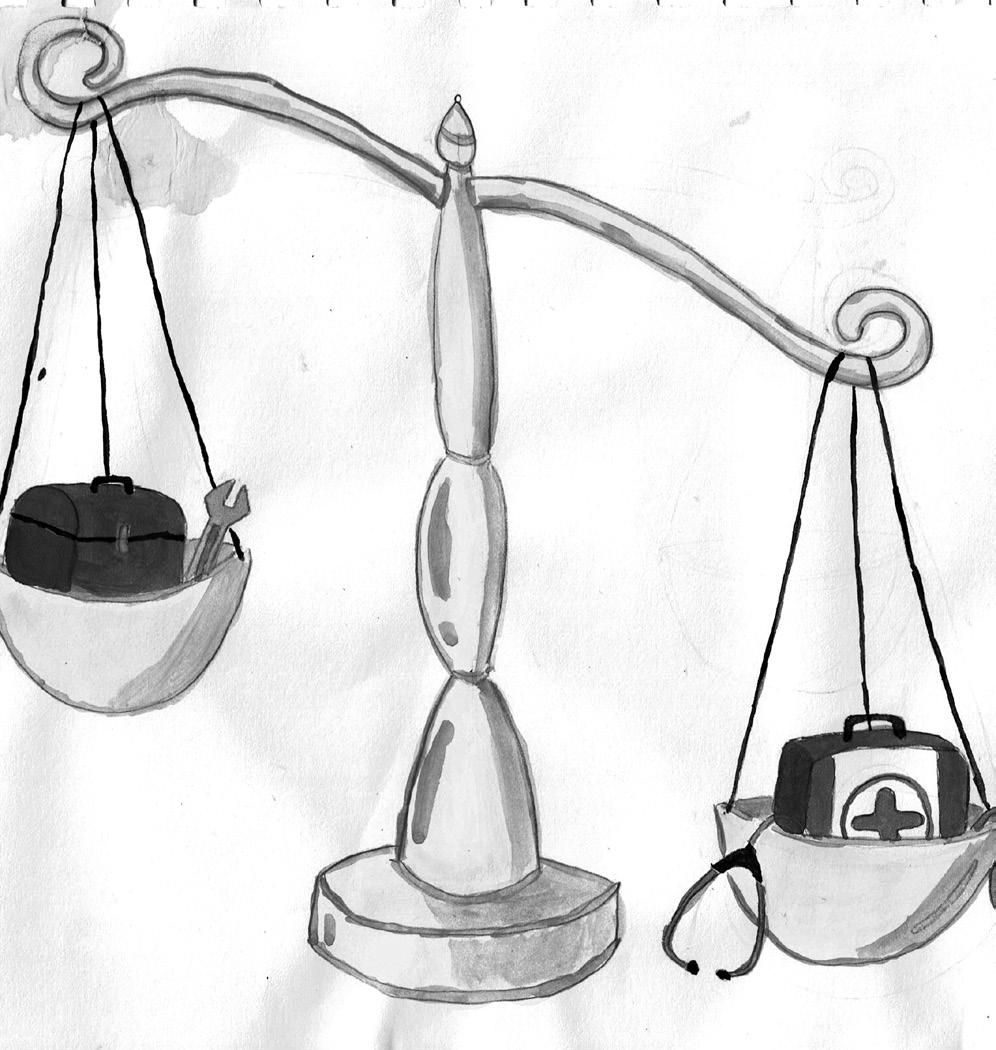
As women at BHS, we must consider the context of which our environment was created, and learn to recognize the sources from which our behavioral urges stem. If we develop the skills to effectively diagnose the patriarchal aspects of our everyday lives, we’ll be able to better understand ourselves and our intentions when it comes to socialization. This will lead to more time and effort spent nurturing companionship with other women that has previously been neglected as a result of patriarchal media influence.
Women appreciating the bonds and friendships that they hold with other women is one of the most powerful methods of resistance, as it is what will begin to rebuild the unity we need in order to combat sexism. Only together will we be able to persevere in the fight for gender equality among all.
- Ellora Mookherjee-Amodt, opinion editor
Glorification of select career paths limits student happiness
BY SHANZA SYED staff writer
Picture a lawyer passionately defending a client who was falsely accused of a crime, a firefighter bravely battling the flames of a California wildfire, or a calm, cool, and collected doctor saving a patient's life.
around them want.
Faculty Adviser
Peter Rodrigues
Ysabel Chu, Aaron Stevens, Amelia Reed, Elena Tamagno, Colina Harvey, Julia Brimmer , Lucy Griffith, Maya Dang, Metztli Olague Guerrero, Simon Policy, Zachary Yoo, Ariana Yerovam, Aelia Gyger, Ava Ramsdale , Avha Meisels, Elta Tracy, Finola Jackson, Hannah Groth-Reidy, Jasper Lovvorn-Black, Josephine Morasky, Maddie Philhower, Mateo Tsai, Mirabai Parnall, Ohad Aviran-Finkelstein, Pearl Gauthier, Philippa Zlatev, Sage Feldman, Saskia Freedberg, Shanza Syed, Simone Faulkner, Serenna Redwood, Zada Sanger, Violet Miller-Brady, Sophie Dreskin, Sabine Rosen, Oscar Wallenstein, Luli Galinson, Leo Silverberg, Kali Proud, Eloise Thomas, Clara Tjen, Tasnim Ait Djebara, Muhammad Delgado, Amar Walker, Aditya Sridharan, Zazie Duchene, Willow Priforce, Mariarosa Cerritos Lara, Bodhi Siedler
Photographers
Glenn Mah, Jahan Ingraham, Kaitlin Blazej Moore, Larsen Porter, Lola Hallward, Madiba Nathan, Naveen Sanka, Sanam Rozycki-Shah, Ashley Diaz Noyola, Ava Mussi, Clara Cecilia Elm Nettesheim, Emilia Freilich, Julian Currier, Malin Morell, Malina Meissner, Mei Saphir, Nolan Whitehill, Penelope Gilligan, Sasha Balasubramanian, Yasmeen Bawany, Sophia Bevis-Lipton, Sebastian Fletcher, Morgan Ostrer, Lev Teiblum, Georgia Paulos, Henry Grant, Divya Bendavid
Illustrators
Alexandra Morgan, Robert Gellner, Annelise Schouten, Lucy Rickart-Webb, Winnie Huang, Elliot Schrag, Lucia Radillo, Adea Hansen-Wistler, Leilah Doostan, Lindsey Rayon-Pixtun, Ruby Leaverton, Claudia Bloom, Eliot Perdue, Jo Purcell, Jessie Lee, Jay Trauner, Olivia Hibser, Isa Shimomura, Iris Le Liboux, Gwendolin Weber-Stover, Eden Middleswart
Editorial Policy
The Berkeley High Jacket is a designated public forum for student expression without prior review by school officials in which students make all final content decisions.
The by-lined opinions expressed in the Editorial/Opinion and Entertainment sections and columns are those of the writer and do not necessarily reflect the opinion of the Jacket. Non-by-lined editorials represent the opinion of the Jacket and must be approved by a two-thirds vote of the Editorial Board. Any opinions or views expressed in advertisements do not necessarily reflect those of the Jacket. We encourage students, staff, and the community to submit letters to the Editor for publication. All submissions must be signed; anonymous letters may only be printed with a two-thirds vote of the Editorial Board. Not all submissions will be printed and may be edited to conform to Jacket policy or to meet space restrictions.
1980 Allston Way, Berkeley, CA | (510) 644-6121 | www.berkeleyhighjacket.com
There’s no doubt that each of these professions are deeply necessary and valuable to society, but it’s important to note that every career brings something new and invaluable to the table. Unfortunately, from a young age, children are implicitly and explicitly taught that certain career paths are "better" than others, leading to a narrowminded view of the jobs that are being offered to them.
In elementary school, College and Career Day is a common practice. On this day, schools invite professionals to talk about what their careers entail. But often, most of the careers that are represented are doctors, lawyers, and police officers. So from a young age, kids are more informed about these types of careers.
If people around them are talking highly of more well-known careers, students naturally feel a greater pressure to choose one of these professions, to gain the approval of others.
In fact, 52.1 percent of Generation Z’s parents have strongly tried to influence their children’s careers, according to Joblist. This often comes at the detriment of student happiness, as the career that they’ve chosen may not be a reflection of what they want, but rather a reflection of what those
Being unhappy with a job from 9 a.m. to 5 p.m., Monday through Friday, takes a large mental health toll. Gen Z has been called the "unhappiest generation yet" by multiple publications, such as The Telegraph. While choosing the wrong career doesn’t account for all of Gen Z’s mental health troubles, it can definitely play a big role.
Berkeley High School, along with other high schools, offers Career and Technical Education (CTE) courses to work to remedy the situation. Three-quarters of all school districts offer some form of CTE class, according to the U.S. Department of Education. CTE classes not only allow students to explore different fields of work, but it provides them with an opportunity to enter a career without a four-year degree — if that’s what they want.
However, there’s no denying that money is a big concern for the next
generation. As the price of buying homes, or even just groceries, increases due to inflation rising to a current rate of 6.41 percent, a greater pressure to take these highpaying jobs is created.
Rather than pursuing what interests and fulfills them, surviving takes precedence. 55 percent of parents push a career path toward a child based on the high income of that job, according to Joblist.
However, according to the National Library of Medicine, “there is very little evidence of any relationship between income and daily experiences of happiness — and any relationship that does exist would suggest higher income could be associated with less happiness.”
At the end of the day, happiness should be what people strive for. Deciding a career is a decision that one must take without the influence and pressure of others. What makes one person happy doesn’t necessarily make another person happy.
OPINION EDITORIAL FRIDAY, MARCH 3, 2023 6
LUCIA RADILLO
‘Queerbaiting’ accusations cause harm to queer communities
BY KALI PROUD staff writer
The new trend of calling out queerbaiting has become a lot more toxic than calling out cultural appropriation. The intentions of those who use each term are widely different, and the two just aren’t comparable.
Constructing a sense of identity can be difficult to grapple with as one person. Having communities of people with similar experiences pertaining to ethnicity, gender, beliefs, or sexuality can be crucial to the entire process. Cultural appropriation and queerbaiting both get called out for endangering such communities, but in reality, the similarities between them isn’t a long list.
Cultural appropriation is a term from the 1980s used to describe when cultural elements of a minority group get used by a majority group inappropriately. Examples of cultural appropriation include a majority group
oversimplifying or profiting off of cultural elements of a minority group.
Mina Hardwick, one of the co-presidents of the Multicultural Student Association, explains that it can be difficult to draw a line between cultural appropriation and cultural appreciation.
“I feel like cultural appreciation is actually making sure to be respectful of other cultures and talking with people from that culture,” Hardwick said.
Since it’s such a difficult issue to navigate, calling out cultural appropriation is meant to be a way to educate others.
“Intentions don’t make (cultural appropriation) okay, but I think there’s also a big problem with just assuming everyone has bad intentions. It’s more important to explain why it’s wrong,” Hardwick said.
On the other hand, queerbaiting is a relatively new term that was originally used to define when media creators purposefully hint
at queer representation without ever actually delivering. It’s a marketing ploy used to draw in a queer audience without losing the larger homophobic audience. Recently though, the term has evolved to refer to real life people as well.
On social media, queerbaiting has been used to describe users that may fit into queer stereotypes without being publicly out or even queer to begin with. One celebrity who faced accusations of queerbaiting is 18-year-old actor Kit Connor, who plays a bisexual character in the teen drama Heartstopper. Fans used Twitter to accuse Connor of queerbaiting, causing the young actor to leave the app completely. He returned briefly to tweet a response to fans, saying, “i’m bi. congrats on forcing an 18 year old to out himself.”
This new use of the term is incredibly harmful to the people accused of queerbaiting, as it demands some kind of proof of identity. The entire idea now
revolves around a belief that queer people are meant to look and act a certain way, thus feeding into homophobic stereotypes. Putting someone’s sexuality under such intense scrutiny is immensely invasive, and it can make them feel as if they owe their community something, whether that community is their fans or other queer people. It completely invalidates a person’s own experiences and self understanding.
When used to describe
media, the term can be an empowering way to identify homophobic media creators, but when used to describe a person, the term itself becomes inherently homophobic.
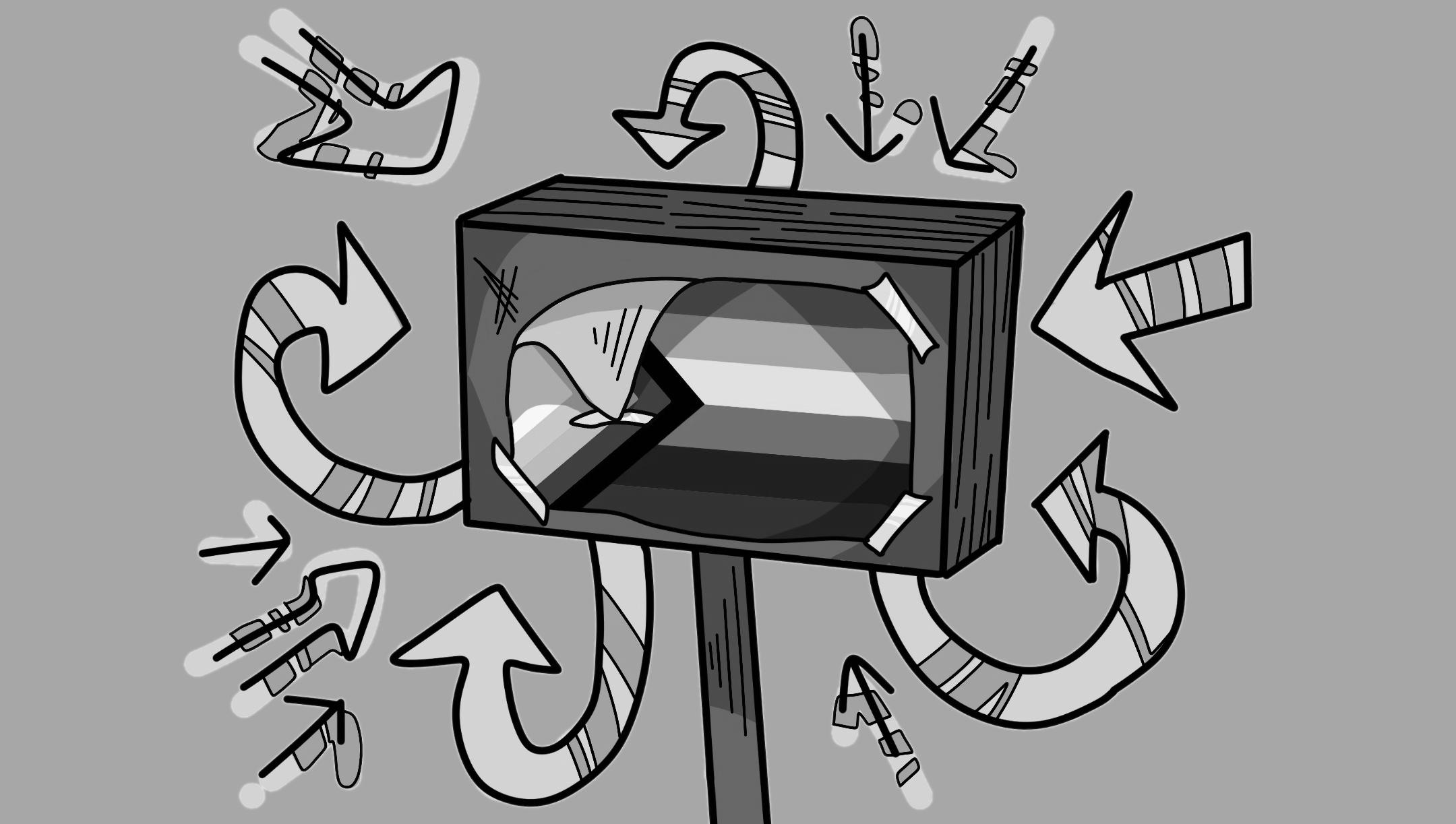
Building communities will always be essential to the long process of self discovery, but we need to be careful that we’re actually strengthening those communities. Queerbaiting’s second meaning has made the term a weapon that only boxes
the LGBTQIA+ community into a set of expectations. Self-expression can’t thrive in an environment that declares queer people must look and act a certain way. With a school as large as Berkeley High School, and with social media having as far a reach as it does, accurately representing communities is especially important. However, this also means that accusations of queerbaiting can have even more detrimental effects.
BHS should require community service hours for the benefit of all
BY SOPHIE DRESKIN staff writer
ISA SHIMOMURA
Media overexposes teenagers to violence, causing mental strain
BY SERENNA REDWOOD staff writer
Violence in media is deeply prevalent and is often pushed on people from a very young age. In middle school, students may begin to read and watch sci-fi books or movies with heavy violence. Soon enough, teens get to the age watching movies like “Pulp Fiction,” packed full of people knocking each other’s brains out of their noses. This normalization of violence in movies, TV shows and books has a negative impact on teens’ mental health and the way they relate to others and the world as they grow up.
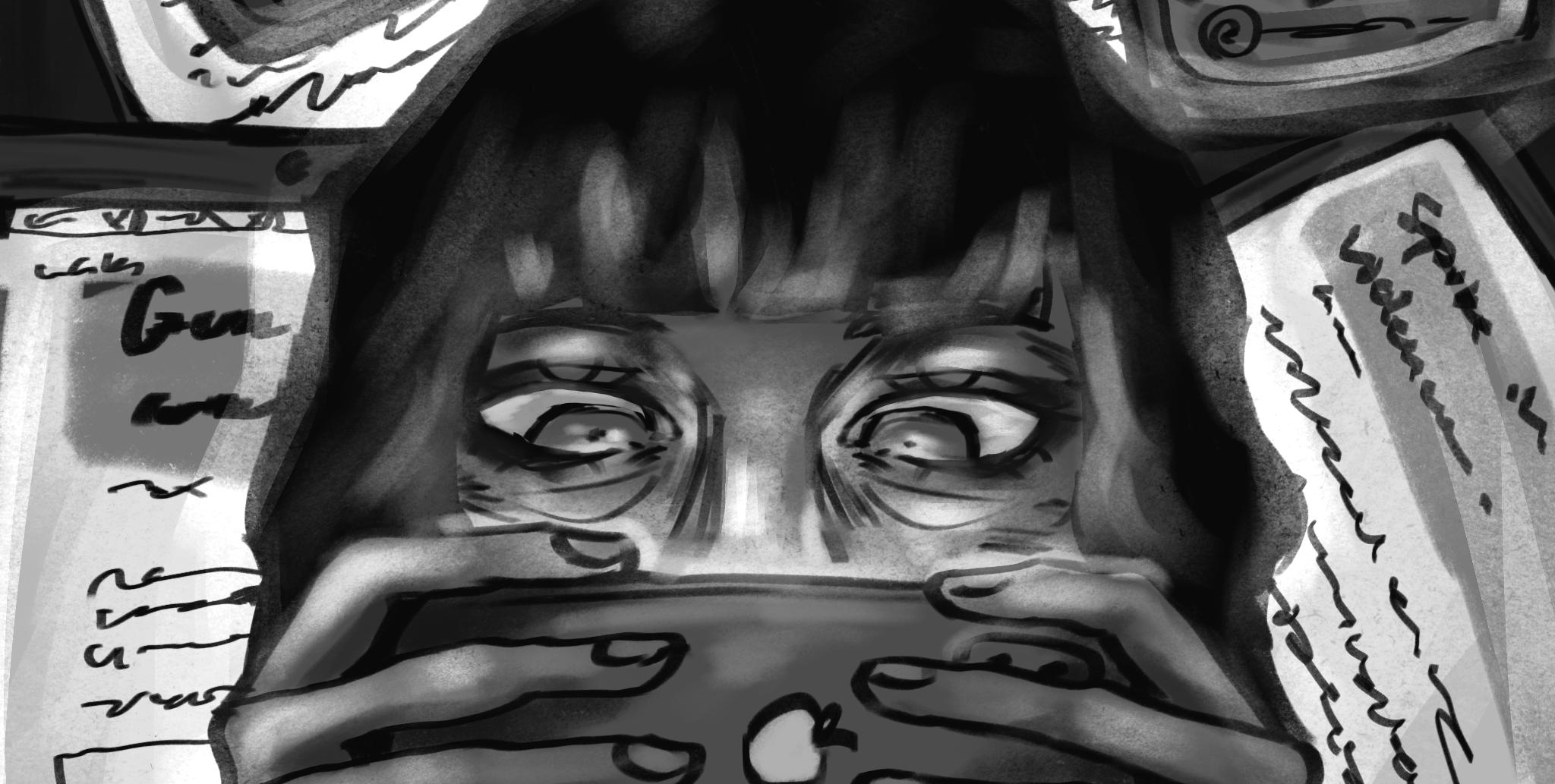
To some degree, violence in the media is reflecting the real world and it is beneficial for those who do not have to experience such violence to understand what others have gone through. However, that only goes to a certain
extent. Sci-fi and fantasy films do not reflect reality and most realistic films that are heavy on violence have no correlation to real events. Fighting through hoards of people with swords or guns is not something a Bay Area teenager is ever going to encounter; even though many wish it would be, and that is where the issue lies.
The violence shown in media is always extremely glorified; the hero kills hundreds of people in the span of an hour and half and is congratulated. They saved the day, possibly the world, and almost every time, they had to kill a ridiculous amount of people to do so. As long as it’s ‘bad guys’ they are killing it’s viewed as fine.
Rena Witkin, a Berkeley High School senior said, “Personally I am really sensitive to violence, it always feels big to me to see things like that. But I feel like broadly it kind of desensitizes people because
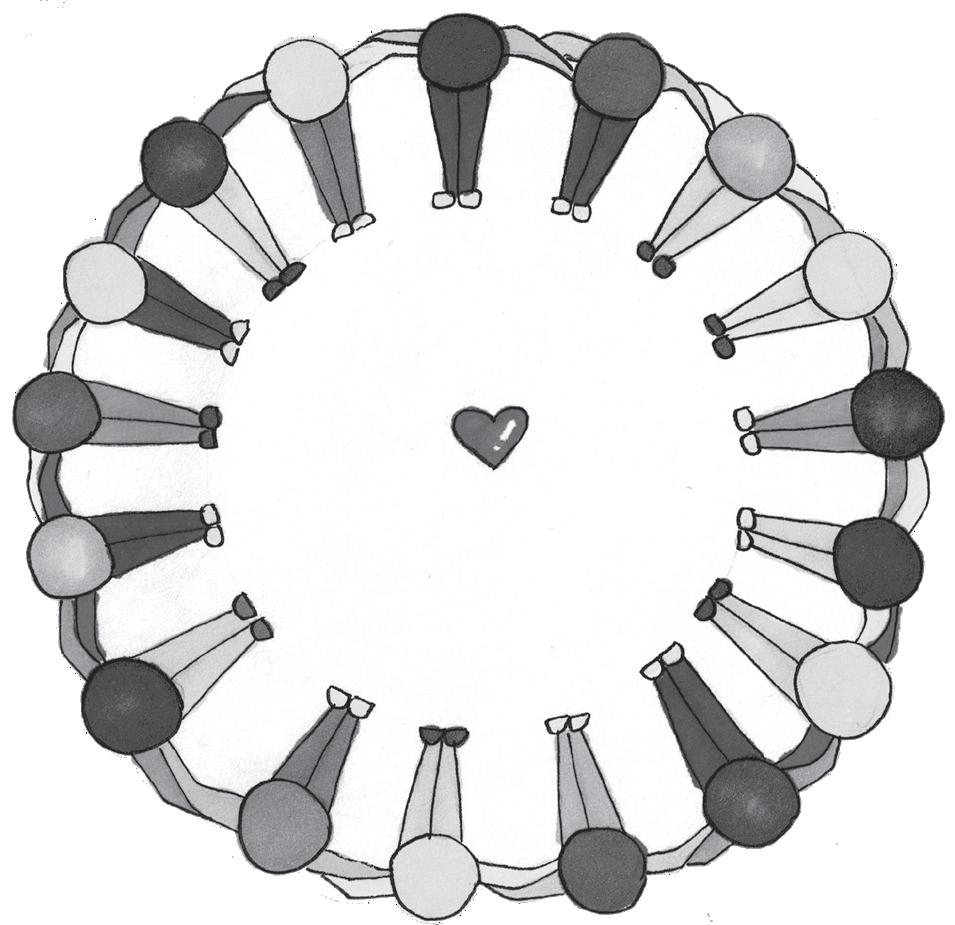
if you grow up seeing violence constantly, like even in cartoons, the point of the humor is that people are getting hurt ... (which) makes it seem funny in the real world too.”
Video games make the issue of glorification of violence even worse. You get to be the one behind the gun, killing thousands of bad guys by pushing buttons, for fun.
The other form of media we consume, the news, also normalizes violence. On the news we are exposed to very real violence that is devastating to real people. Being exposed to this so constantly from the time you are a teenager numbs you to it.
Violence in media will never stop, but the industry needs to stop glorifying violence in the everyday life of teenagers who young viewers look up to. Teens don’t need violence to make an adventure.
Some high schools across the country require students to complete a certain amount of community service in order to graduate. However, at Berkeley High School, there is no school-wide requirement like this — with the exception of requirements specific to certain Small Learning Communities, like Berkeley International High School. Despite this, community service is essential throughout the formative years of one’s life. It aids the local community, helps students develop a sense of belonging and commitment, and is great to put on college or job applications. BHS should
require that students complete community service hours for the benefit of all.
Community service has a great impact, especially at a local level. Volunteers are the backbone of communities, especially underfunded and understaffed places.
With many more high school volunteers, different organizations and places all around Berkeley would benefit. Volunteering also unifies people from many different backgrounds. No matter where one lives or what their economic status is, everyone who engages in community service has the common goal of bettering the community. Self-improvement can come from giving back to the community as well.
Volunteering is a great
way to develop a sense of belonging and selfappreciation, especially for teens. High schoolers often feel as though they’re not good enough or out of place, so volunteering can be a crucial way to lift spirits and mental health.
According to a study done by the National Library of Medicine, “adolescent volunteering may lead to further involvement in young adult volunteering and have a positive effect on school completion.”
The high school years are incredibly formative; creating good habits now transfer on into adulthood. Though some might say that volunteering is useless if a student is forced into it, that is not the case. What matters is the impact that one can have on their community, and the impact their community can have on them. Additionally, these hours could possibly guide students away from negative options, such as substance abuse, because their time would be focused towards helping others.
Through community service, students can learn more about their local community, help to better Berkeley, and build healthy habits. By adapting methods used by other high schools that already have mandatory service hours in place, BHS could become a better place, in turn making the entire city of Berkeley a better place.
OPINION 7 FRIDAY, MARCH 3, 2023
JAY TRAUNER
ELLIOT SCHRAG
Best Places: Locations around the Bay Area to go out on a date
BY YSABEL CHU staff writer
Choosing the perfect location for a date can be a nerve-racking task, so here are some recommendations from Berkeley High School students David Goldstein, Luca Vicisano, Vaiee-Talia Tu’ua, and Emmett Price to help ease the decision.
If you both enjoy art, the San Francisco de Young Museum is a great place to go. “I mean it’s just nice to look at art,” said Vicisano, a BHS junior. “I feel like you get to know a lot about the person based on their interpretations of art. I’ll ask whoever I’m with what their thoughts are on certain
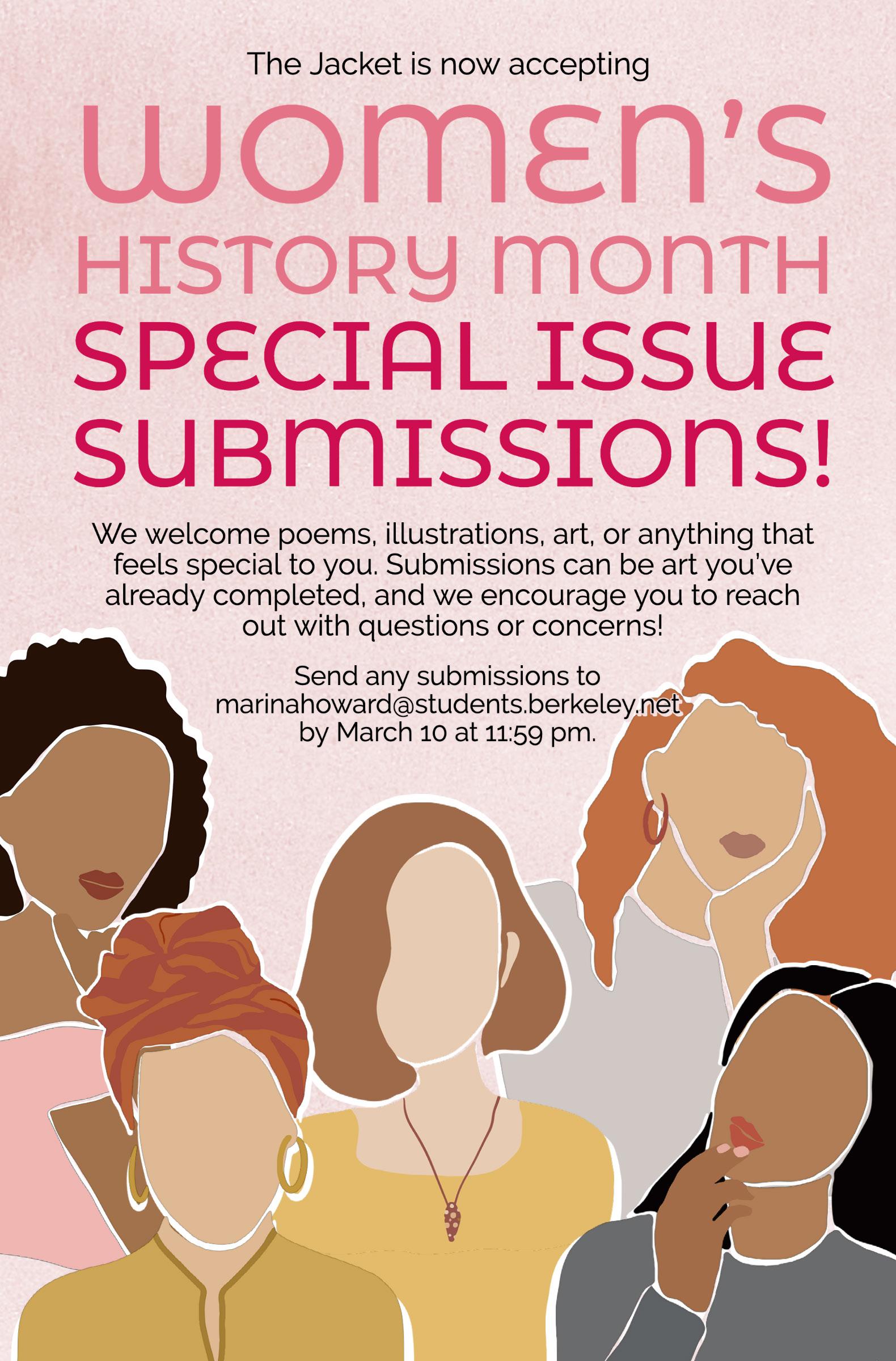
pieces of art, like what they think the meaning is. It’s also fun to just joke around.”
Also in San Francisco, the Exploratorium is a great place to learn about various topics with your date. “(At the Exploratorium) there’s this one activity where you test your reaction time in different scenarios,” said Tu’ua, a BHS sophomore. It’s really fun to see your reaction time especially when you’re in the booth with your partner. There is also another exhibit where you test walking on rocks to see how quietly you can walk. I think those two activities were definitely my favorites.”
Whether you’re an ice skating amateur or you’ve
ice-skated a hundred times, it’s always fun to get to know your date on the ice. At Oakland Ice Center, you and your date can both rent your skates there and enjoy their snack bar.
“I really enjoy ice skating (on a date) even though I’m not particularly good at it,” said BHS sophomore Emmett Price. “It’s a fun thing to do together. I feel like it’s an icebreaker because you’re falling and getting bruised together. But it’s still fun.”
Blake Garden, owned by University of California, Berkeley and located in Kensington, is the perfect place to go on a picnic, take a walk around, and enjoy nature. While it’s only
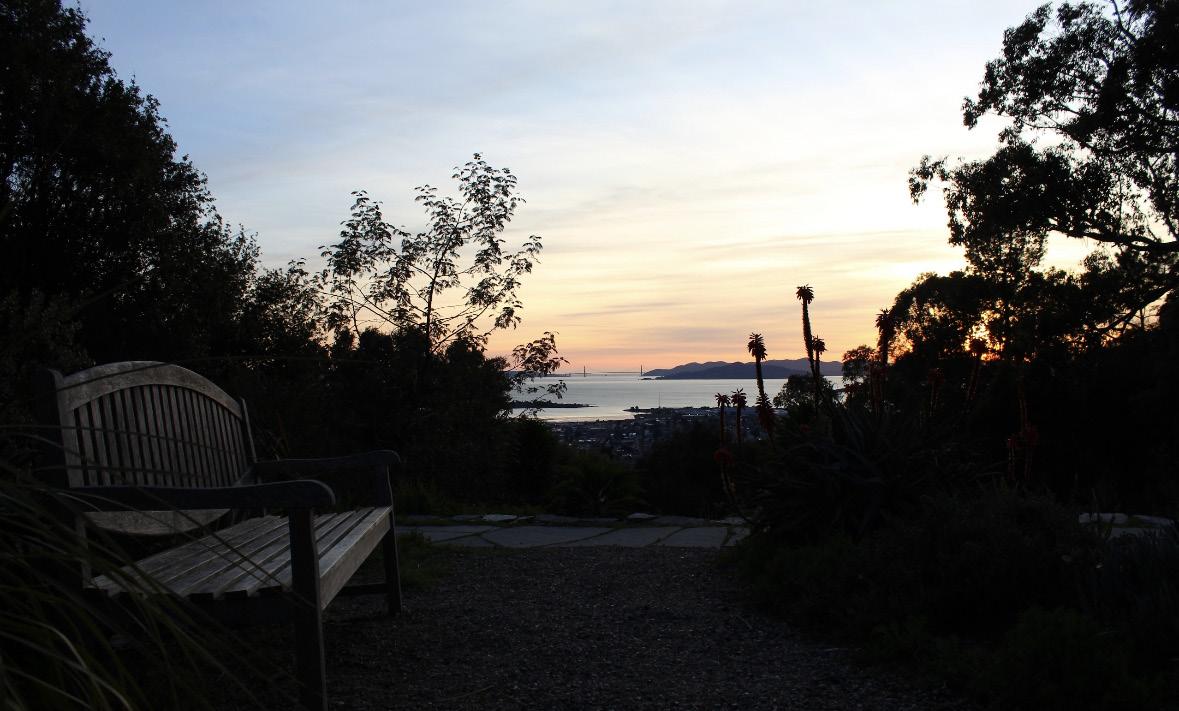
Listen toThe Buzz: What keeps students centered outside of school?
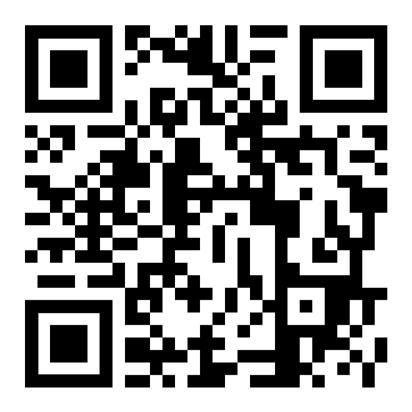
The Buzz spoke with two BHS students about their interests in beekeeping and open-water swimming, respectively, touching on fulfillment and mental health.
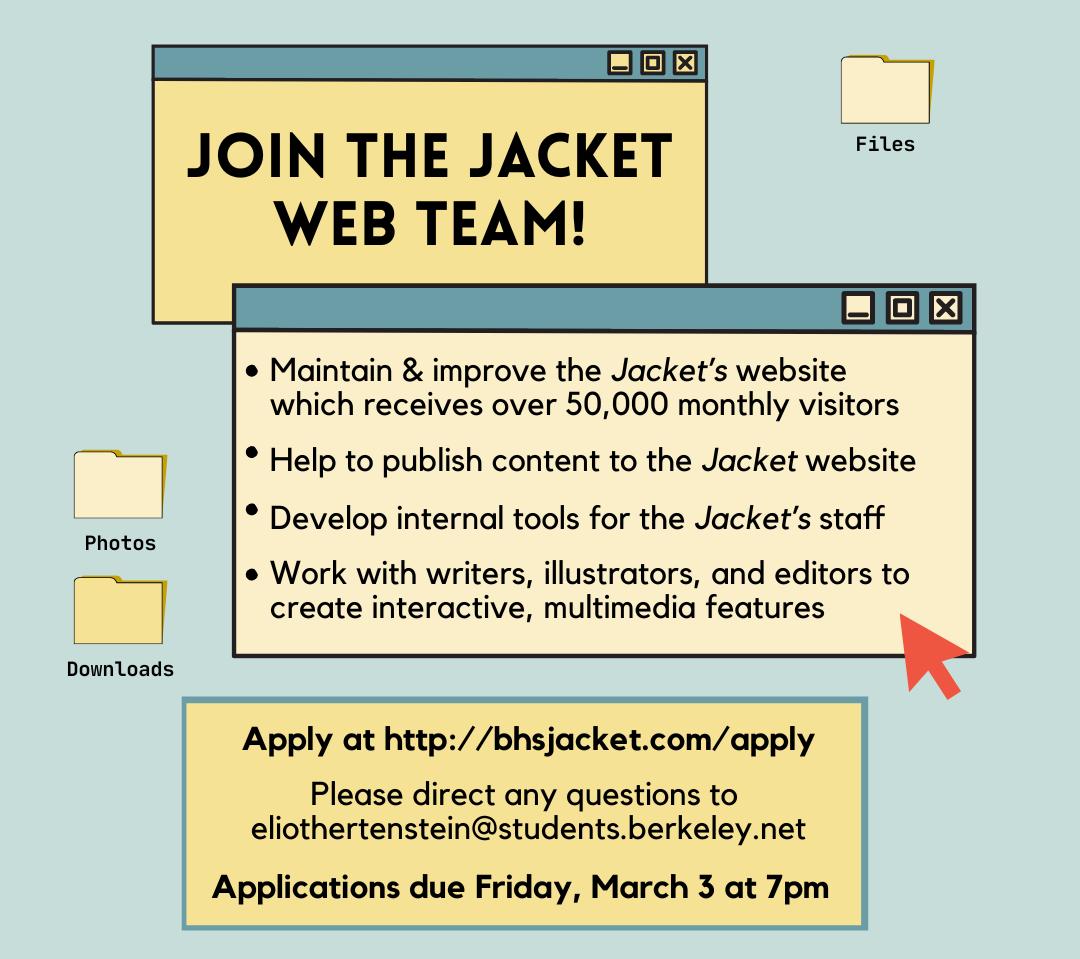
open on weekdays during business hours, it has completely free admission.
“I really like the gardens,” said Goldstein, a BHS senior. “It’s definitely a good picnic spot. They also have a big chess set, and a creek area with redwoods.
It’s very nice, I’m a big fan.”
Goldstein also added that since not a lot of people go there, it’s a great secluded spot.
casual and fun environment.
“If you don’t know your date that well, it’s a good way to get to know them through doing a fun activity together,” Goldstein said. “Or you’re both learning the game, and you have
comfortable enough with each other.”
According to Goldstein, sometimes great dates don’t need to be at one specific location.
“I feel like it’s an icebreaker because you’re falling and getting bruised together. But it’s still fun.”
At Victory Point Cafe you can enjoy food and snacks while playing any board game from their huge collection.
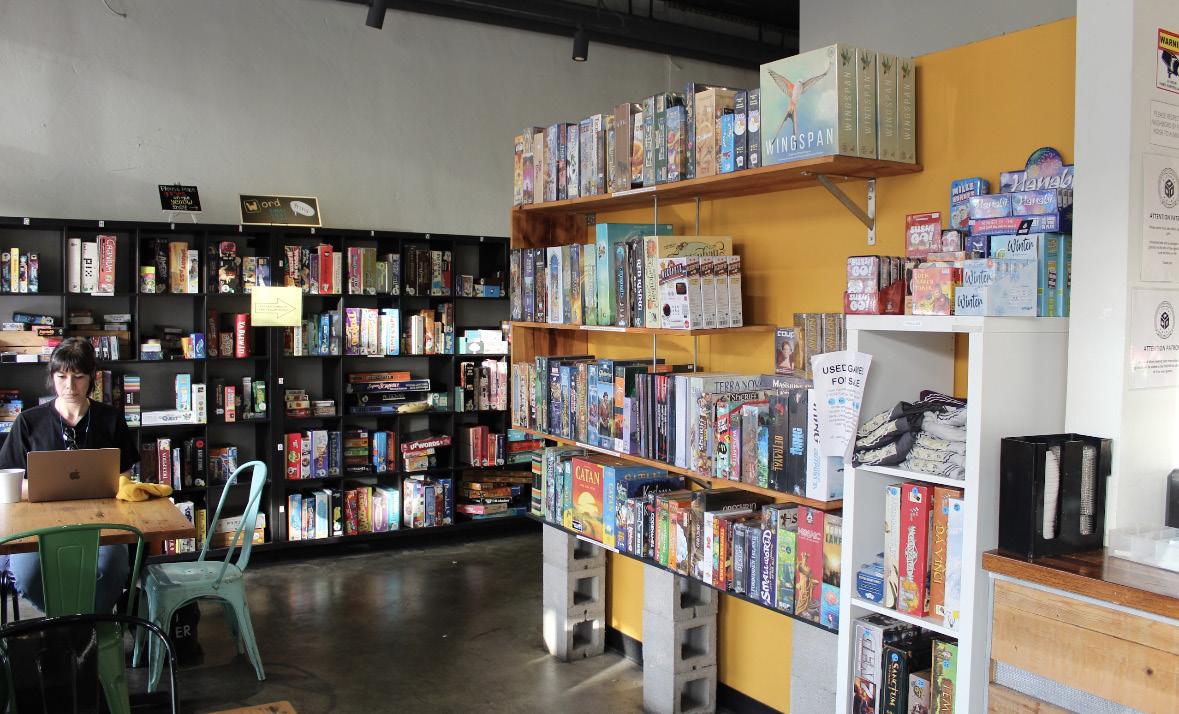
Goldstein appreciates Victory Point Cafe for its
Emmett Price, BHS sophomore
an excuse to sit next to each other. If you do know your date, it’s also super fun because then you’re
“I mean really my best idea for a date is to kind of like wander around,” Goldstein said. “I’ve had plenty of dates where we’re exploring UC (Berkeley) campus or going into Oakland or something. Just kind of wandering around, going to different thrift stores or to different kinds of things where it’s not just one specific place.”
FEATURES
PHOTOS BY SANAM ROZYCKI-SHAH
FRIDAY, MARCH 3, 2023 8
Blake Garden, open on weekdays, has free admission.
Scan to listen! Also available on Spotify, Anchor, and Apple Podcasts
Victory Point Cafe has shelves full of games to play inside.
The history of BHS’s current Small Learning Communities

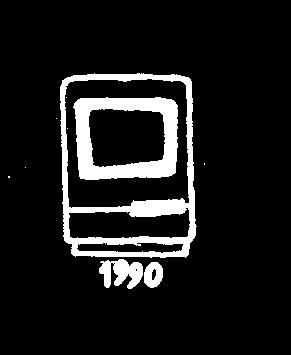 BY SABINE ROSEN staff writer
BY SABINE ROSEN staff writer
In 1985, the California Partnership Academies (CPA) was started by the state, in part to support kids struggling in school. The academies were programs inside schools that students could participate in, and were focused on specific topics.
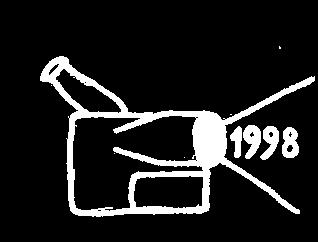
When the Berkeley High School vice principal at the time went to visit one of the CPA programs in Oakland, they came back proposing that BHS create a program of its own. Flora Russ, who was in charge of all computer classes at BHS at the time, said, “They came to me, and they said we'd like to have this academy, this California State Partnership Academy, and we think computers would be a good fit. Do you want to write a grant?”
BHS wrote a grant for the new Computer Academy they received, and in 1990, they got their first class of about 40 to 45 sophomores. From there, the institutions known as Small Learning Communities (SLCs) at BHS began to form.
Eight years after the creation of the Computer Academy, the SLC Communications Arts and Sciences (CAS) was officially created, but the idea had been around for a while. Plans to create another SLC with a media-based focus that was different from the Computer Academy were discussed. However, it was a lot of work.
is


Computer Academy rebranded and attached themselves to public health and medicine, to form what is now known as AMPS.
A group of teachers work to form AHA, which bridged academics and art-based learning.
of BHS staff consisting of Linda Carr, Miriam Stahl, denise brown, who prefers her name left uncapitalized, and Ray Cagen all created a proposal to create an art-focused small school.
“We initially wrote the proposal to become a (small) school because we had students in our classes that were really excellent students but didn’t do too well across the board," Stahl said. "We wanted to see arts and academics bridge, so students can achieve at higher rates in academic classes as well as they were doing in their art classes.”
The art-focused classes that kids take in AHA were intended to allow students to express their knowledge on the material through art.
Around the same time, Academic Choice (AC) began to be tested at BHS. AC was created for students to choose their own paths and focus on their interests.
Before Berkeley International High School (BIHS) was created, students could choose to be in none of the SLCs. After BIHS was established, that option went away.
“We tried to get (CAS) started and the principal was against it,” said Rick Ayers, a former BHS teacher and one of the original creators of CAS. “The administration was against it because they felt it would be a real hassle for them.”
Eventually, though, the school board passed the design. There was a lot of interest in a media-based school at the time, and CAS grew quickly.

Arts and Humanities Academy (AHA) was the next small school to be created. In 2006, a group
Alex Day, a current Universal Ninth Grade BHS teacher, attended BHS from 2002 to 2006 and said, “I remember my history and English classes were in AC but I wasn't all the way in AC since I wasn't in Honors Math.” Before Berkeley International High School (BIHS) was created, students could choose to be in none of the SLCs. After BIHS was established, that option went away.
The final SLC, BIHS, was created by a team of teachers, students, and parents in the fall of 2005, intended to be larger than the other smaller communities. Miranda Thorman, who was part of that team of founders and is a current middle school principal in Alameda, said that
the motivation to create BIHS “was to explore it as a rigorous academic program that was not the standard kind of AP curriculum AC offered.”
According to Thorman, Jim Slemp, the principal at the time, wanted to create another rigorous option for students that had a little more structure than AC.
During the 2013-14 school year, Computer Academy detached from the California Partnership Academy, and rebranded itself to be what is now called Academy of Medicine and Public Service (AMPS). Since Computer Academy was leaving CPA, “We needed to attach ourselves to something specific, like arts or media, but given those were taken we went with public health and medicine. That's how we rebranded into becoming AMPS,” said John Tobias, current co-lead teacher of AMPS.
In 2015, the administration started to discuss the option of creating a Universal Ninth Grade, not requiring students to choose SLCs until tenth grade. This change was in an effort for all BHS ninth graders to learn about the SLCs during their freshman Ethnic Studies classes, and make a more in-depth choice in terms of which SLC they join. Day believes that this change was very beneficial.
“I think students are way more informed about their SLC choice now that we have (Universal Ninth Grade) instead of having just a 30 minute presentation on it in eighth grade, we get to educate the students on it during class,” Day said. In the middle of ninth grade, BHS students make an important decision about which SLC they would like to attend. They rank their choices and their names get put into a lottery where they hope to get their first pick. Currently, there are five small learning community options for students, but it hasn't always been this way.
laurenhuang@students.berkeley.net
BERKELEY HIGH JACKET FEATURES
features editors: Lauren Huang & Amelia WIley Moreira
9 FRIDAY, MARCH 3, 2023
Currently, there are five small learning community options for students, but it hasn't always been this way.
The design for CAS is passed by the school board, and the media-based small school grows quickly.
With a grant written by Flora Russ, Computer Academy is formed with a class of 40 to 45 sophomores.
AC
started and tested, then made official. BIHS is formed a short while after as a rigorous course option different from the AP curriculum.
DESIGN BY REBECCA BIRENBAUM
JULIUS BRAUR
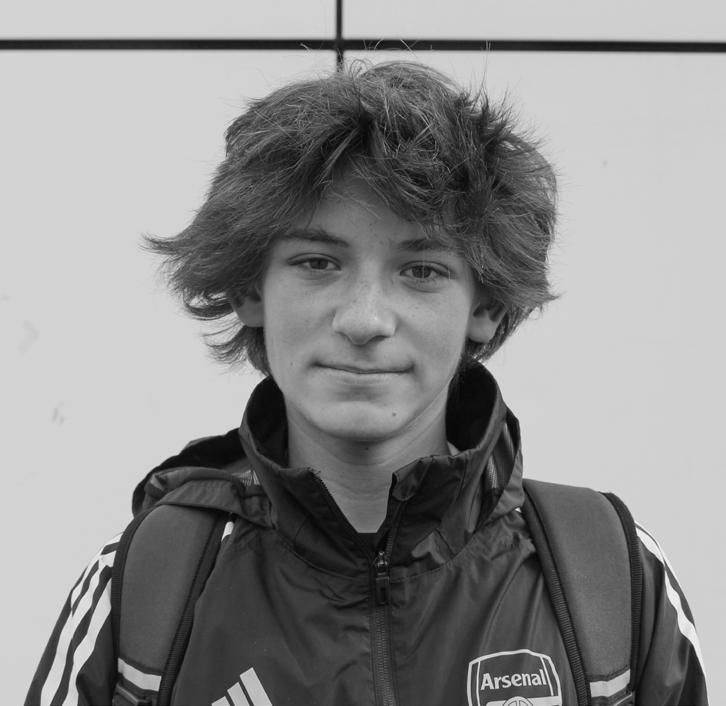
Student teachers pursue BHS careers
BY AMELIA REED staff writer
Project Drawdown is a nonprofit organization that is dedicated to stopping global warming and aiding the world in achieving “drawdown, the point where greenhouse gas levels in the atmosphere start to decline.” Project Drawdown’s website presents a “solution library,” consisting of 93 articles explaining the answers, as well as the drawbacks, to the biggest problems that climate change poses for our future. These articles are classified by the topic area of what the solution aims to achieve, such as buildings, electricity, transportation, land use, agriculture, etc. “Improving Aquaculture”, “Bioplastics”, and “Waste to Energy," caught my eye. The website also presents six educational videos in episode format for easy and accessible information.
In the first episode, called “Setting the Stage”, the narrator explains correlating graphs that help us better understand how aspects of climate change are connected. As the global population not only rises but skyrockets, land occupation and water consumption also increase exponentially. The episode also explains how even though the graphs may indicate our future is certain doom, humans have improved and we can still turn this ship around. The second episode, which is called, “Stopping Climate Change,” explains what the goal of “drawdown” actually is. In the third episode, which is called, “Reducing Sources”, the main contributors to greenhouse gasses are named, like industry, electricity production, food and agriculture, transportation, and more. The fourth through sixth episodes (“Supporting Sinks and Improving Society,” “Putting It All Together”, and “Making It Happen”) are the episodes that provide more focused information on actual solutions, and Berkeley High School students should definitely watch these for themselves to find out some of the most important and hopeful information that Project Drawdown offers.
Some of this information and hope can be found in the 93 articles mentioned in the Solution Library, like aquaculture, bioplastics, and turning waste into energy, which I will give a brief overview of here. Aquaculture is one of the fastest-growing ways of growing food for animals. Ensuring that part of their energy consumption of is based on renewable energy would reduce greenhouse gas emissions. Most plastics today are made from fossil fuels, but bioplastics utilize plants as an alternative source of carbon. They often have lower production emissions and are even sometimes biodegradable. Finally, waste-toenergy processes burn waste to produce heat and/or electricity. This reduces greenhouse gas emissions by reducing dependence on fossil fuels and using up the waste in landfills, which create tons of greenhouse gases. Because of the side products of waste-to-energy solutions is often toxic pollutants in air and water, these solutions are really just a stepping stone towards getting rid of dependence on fossil fuels and coal, and “is not part of a clean energy future.”
Check out the website: drawdown.org/ solutions/. This is a great resource for BHS students to explore how climate change solutions are happening in real time.
“I could not imagine being in an office just sitting in a corner job,” said Elliot Robles, a student teacher at Berkeley High School. He described the best aspect of his work being students’ energy. Robles has been working as a student teacher for Fatemeh Mizbani’s chemistry classes for a little over a semester.
“I wanted to be a teacher in high school, but my parents were very concerned about the pay, which is understandable,” Robles said. “After watching a lot of medical TV shows I thought (that) being a doctor would be alright.”
However, after he took his first biology class in college, Robles realized that being a doctor wasn’t for him. What did stick with him was the subject of chemistry. So, he enrolled in a teaching program that required taking related classes as well as his current position of working as a student teacher. Robles will continue being in this role until the end of this spring, which will put him on track to get a teaching certification. Next year, Robles plans on teaching chemistry at BHS.
Emma Zhao, another student teacher at BHS, experienced similar feelings from her parents about her becoming a teacher. Her
grandmother, father, and mother all taught in some capacity when she was growing up, which was the initial reason Zhao wanted to start teaching. However, her parents still preferred her to move to a different profession. Nonetheless, along with influence from her family, Zhao found teaching to be fulfilling.
“When I first started student teaching, I was really scared of being in the classroom, because I was worried that I would make people uncomfortable, or the students wouldn't really be able to understand me,” Zhao said. “But in every single student teaching experience that I've had, it's been really wonderful in terms of how I've interacted with the students.”
Different from Robles’s program, after Zhao graduated college, she had to student teach for a while.
From Oakland Technical High School, Washington Elementary School, East Bay Innovation Academy, to BHS, Zhao has been a student teacher for four years now, adding up to around 200 total hours of teaching. She plans to finally achieve a teaching credential by the end of the semester.
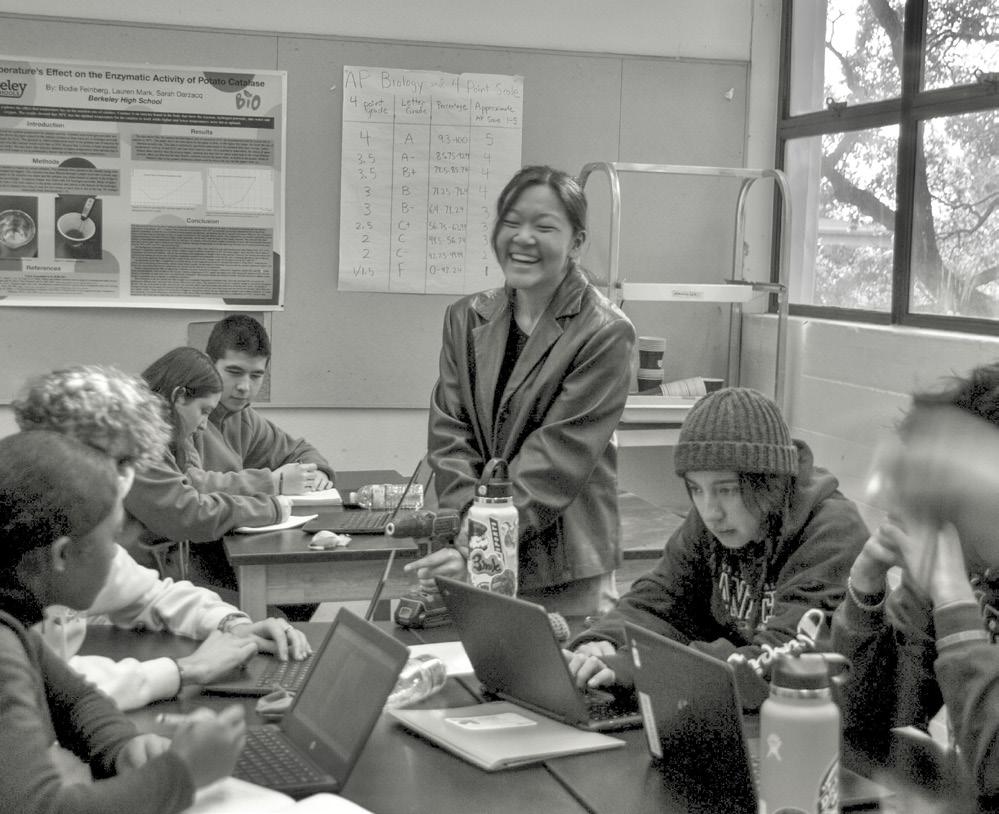
Kainoa Scott is grateful for his time as a student teacher at BHS because of the support he has received from fellow teachers. During the past five months, he’s been a student
teacher for Lyndsey Schlax’s economics class, and has enjoyed the interactions with his students. Now, he’s focusing on using the support he has to learn how to become a better teacher.
“I (want) to just gain confidence in my teaching and get more comfortable with it (and) get more comfortable producing my own lessons and curriculum,” Scott said.
So far in the time he’s been a student teacher, Scott has found himself a lot busier than he used to be, due to the classes he is taking at St. Mary’s College along with student teaching. “I’ve never been this busy … There’s a lot of pressure,” Scott said.
Along with stress that comes from his busy schedule, dealing with student behavior is something Scott has come to dislike during his time as a student teacher. Robles shares these sentiments with Scott, saying, “I’m not about confrontation, so having to be stern is really tough work right now.”
For Jason Biloch, student teaching has allowed him
to do two things he enjoys: teaching and music. Before working in Richard Conn’s American Government class this semester, he worked at a nonprofit theater organization called Castro Valley Dramatic Arts Academy where he taught music lessons for about 10 years. Now Biloch finds himself wanting to either teach theater or world history.
“When I was in high school I wanted to be a history teacher,” Biloch reflected. “And then I was like, you know what’d be more fun, I want to be a musician … I got lucky and was able to teach things … like teaching theater or teaching music, but I also just really liked the teaching part of it,” Biloch said.
Student teaching is a required step for becoming a teacher, allowing people to gain experience and learn how to teach. Although there are some struggles with being a student teacher, having the chance to interact with students and help learn outweighs the negatives for many of these student teachers.
Reemajah Pollard’s memory leaves impact
CONTINUED FROM PAGE 1
challenges that he had grown up with, something that made An want to love and support him even more along his journey.
Despite the personal challenges he faced, he was described as “one of the funniest you'd see at Berkeley High.” According to Mary Jacobs, a former counselor for the College and Career Center at BHS, “he’d sing and dance and it gets you through those stressful situations.”
When Genevieve Mage received Pollard as one of her Academy of Medicine and Public Service (AMPS) English students during his junior year, Pollard quickly showed that he was highly driven, intent to make his dreams a reality.
Mage discussed how Pollard impacted the AMPS community, his fellow classmates, and his teachers through his sense of levity in the classroom. “I think he was a great inspiration to a

lot of kids, especially given his life circumstances. You didn't need to know a lot about his personal life to know that he was coming from a lot and he could find joy even in the darkest corner,” Mage said.
Pollard faced difficulties, however he fought hard for his successes despite the disadvantages he faced. An said that in a life where the odds were constantly stacked against him, Pollard succeeded in many ways and worked hard to reach these achievements.
Pollard endured many challenges in his personal life, and the lack of mental health resources available for Pollard left him isolated during the COVID-19 pandemic, according to Mage.
“Part of the impact that I hope he leaves is that we need to take better care of people,” Mage said. “And it's not any individuals fault, but (Pollard) could have had an incredible positive impact on this world and
because so many systems failed him we will now be forever in deficit.”
He was a leader in his community, and while he had many goals of his own, he never failed to help out his classmates and offer his support, according to Jacobs. She explained how
the entire counseling team rooted for Pollard and wanted him to achieve his goals.
“I used to joke that we were part of ‘Team Reemajah.’ There were so many adults who supported him … He was such a ... lovable person.”
FEATURES
10 FRIDAY, MARCH 3, 2023
DECONSTRUCTING
Student teacher Emma Zhao checks in with students. LARSEN PORTER
DRAWDOWN
ALEXANDRA MORGAN
Lack of diversity isolates Black students attending private schools
friend groups.”
Scott struggled with being singled out, never growing accustomed to scenarios in class such as being the only Black person during discussions that surrounded topics such as slavery, police brutality, and racial violence. This put an immense amount of stress and pressure on them — they’d sometimes be treated like a delegate for their entire racial group. Once, when a non-Black teacher used a racial slur in front of their class, they felt “an indescribable frustration having to sit there and listen to a white teacher explain history and your culture incorrectly, while battling the anxiety of becoming the spokesperson of
your community if you decide to intervene,” Scott said.
Reflecting on their high school years, Scott believes they missed out on a key aspect: experimentation.
“For one, I think I’d definitely have more Black friends and friends of color,” Scott said. “Just that one factor would have changed my entire high school experience in ways I probably don’t even know … I would’ve experimented with my hair more.” Scott refrained from style variety in high school, fearing that if they tried something new, and someone
commented anything less than positive, they’d begin to dislike their own hair. Now, Scott feels their hair is the main aspect that they love about themself. It was hard to venture outside of the box, when Scott already felt disconnected from other members of their community. “I think if I had
gone to a public school it would’ve been easier for me to find other people that I can truly connect with deeper than race,” Scott said. “There weren’t many people who understood my neurodivergence, or people who I could have affinity with in terms of gender and sexual identity. There were queer people at my high school, but even then, intersectionality matters and the feeling of displacement was still present, even in club meetings.”
This feeling of singularity is difficult to navigate. A current freshman at Maybeck High School, Maissa Zairi went to public school her entire life until this school year. Having been used to seeing ethnic diversity at school all throughout her life, the student population being largely white completely threw her off when she arrived in the first couple of months. “It kind of singled me out in a way … Being one of only three mixed kids in the freshman class makes me feel
uncomfortable.”
Zairi recounted how people have denied her identity, claiming she didn’t “look Black” when she described her ethnicity. “If I did go to a public school, I think I would definitely feel more comfortable talking about these kinds of things with others, but right now I’m a little closed off about it.”
“There are ... times where I feel conflicted about my Black identity because it’s hard to have a solid understanding of who I am when I’m surrounded by people of vastly different backgrounds for the majority of my day,” said Mason Jones, a sophomore at The College Preparatory School. “I’m almost always the singular or one of two Black students in history and English
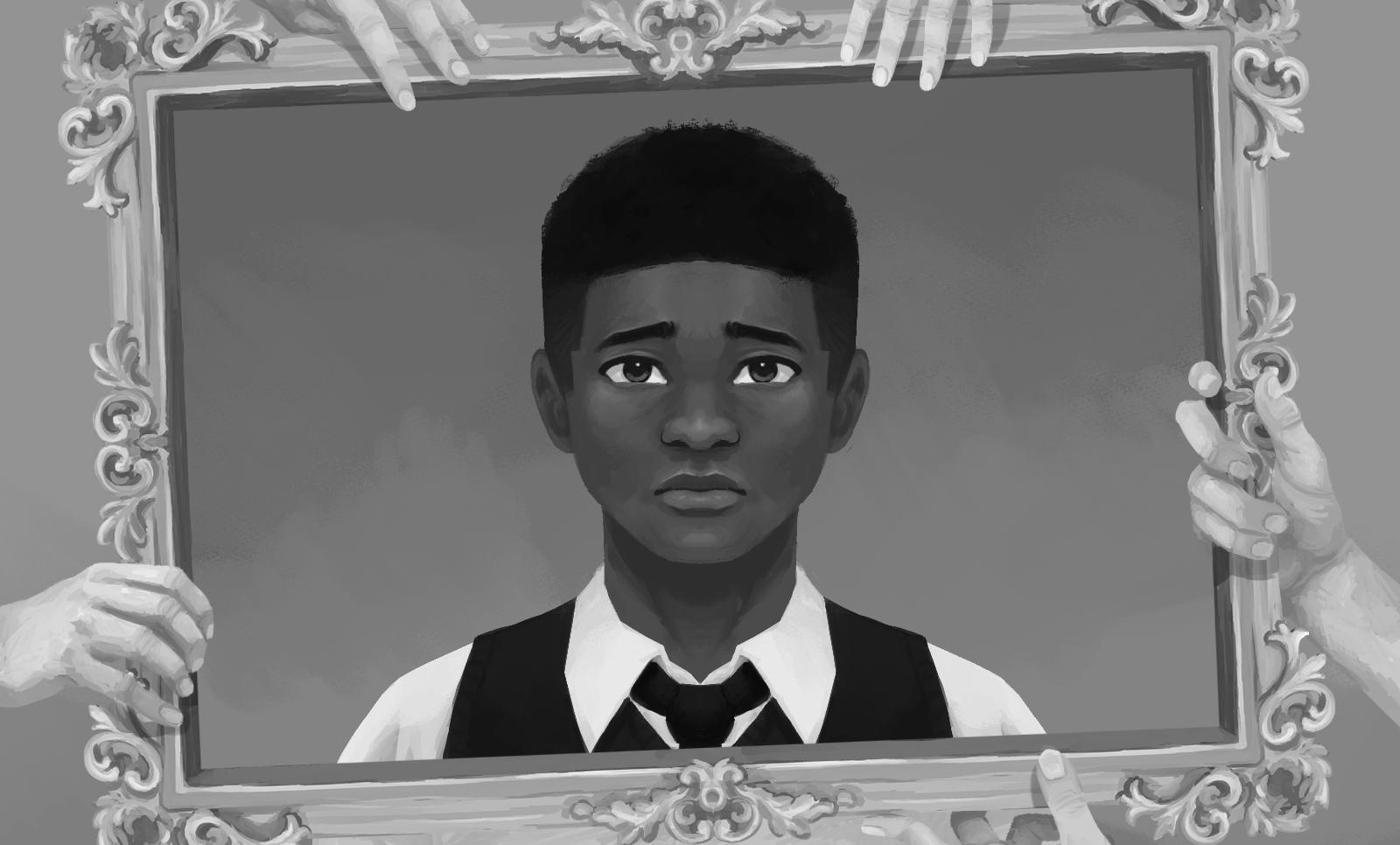
the end of the day, this is unfortunately something I’m used to.”
However, some schools have made an effort to incorporate affinity spaces.
Damiana Harper, a junior at Lick-Wilmerding High School in San Francisco, finds them crucial in creating a place to connect with others. “The affinity spaces are a place (where) I do not have to pretend whatsoever, which is relieving for everyone there.” She added that affinity spaces are wellfunded. Lick-Wilmerding also hosts Family Networks, run by student clubs such as the Black Student Union to connect families with similar cultural backgrounds within the high school community. These spaces for communities with less representation at school are used by students to connect with each other and find cohorts. Scott had difficulty connecting with others.
J HORSLEY
classes which can make things tough. Especially since this year in my history and English classes, we’ve been discussing the Transatlantic Slave Trade and Black literature from the Harlem Renaissance. At
“My social experience was pretty negative. I made a few really good friends but overall it took me a long time to find people who I truly connected with,” they said. “There were a lot of people who I really liked but our cultural differences always seemed to stand out to me.”
Teachers and students reflect on discontinued electives at BHS
BY SAGE
Berkeley High School’s course offerings are constantly and subtly shifting; new classes spring up with much fanfare and older classes are quietly retired. Some core classes, like English or math, have solid bets that although their curriculum might change, the class itself will remain. Other electives and alternative courses, like Dana Moran’s Asian American Pacific Islander History class from 1997, have much less security. Required classes are guaranteed a comfortable influx of students each year, but electives have no such luck.
Joseph Omwamba currently teaches Universal Ninth Grade English, but used to teach Kiswahili from 2004-15 as a world language, along with other classes under the African American Studies umbrella.
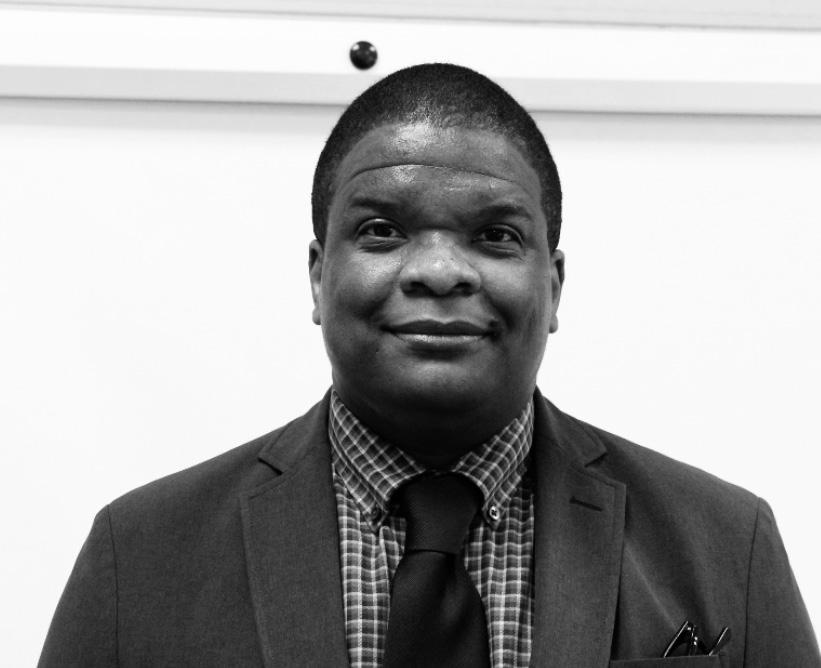
“The (Kiswahili) curriculum was mostly syntax … but I used it to talk about African culture,” he said. Having an avenue to talk about his heritage and introduce students to a new culture was quite meaningful to Omwamba. “It was important to me to have … that connection to my roots … and to (present) something
that is spoken in most parts of Africa to my American students,” he said.
The language was discontinued due to a declining amount of students.
“The numbers had dwindled … (the administration) was not content with one teacher teaching five students,”
Omwamba said. Still, the relationships he formed with the pupils he had were lasting ones. “Some of them are my friends on Facebook … They can write me a message in Kiswahili and wish me a happy birthday.” One even recently reached out and bid Omwamba a happy New Year.
“I would be very glad if it came back,” said Omwamba, who derived great joy from seeing his students learning Kiswahili and interacting with his culture.
The current Asian American Pacific Islander Literature curriculum has a spiritual predecessor — Dana Moran’s AAPI History class, which the current Ethnic Studies teacher taught in 1997, at the beginning of the year. It was a semester-long elective, taught by Moran for
its first two years, then by other teachers for its last two. “It started with (a discussion of) immigration patterns … then it pivoted to current issues … (like) affirmative action and
of the class of 1998, who with Moran’s guidance helped get the class adopted. “We wrote the proposal together, suggesting curriculum and readings, fundraising and letter-writing in support of the class,” said Mah, who took the class in 1997, the first year it was offered. She helped focus the class on immigration and the Asian diaspora in the United States.
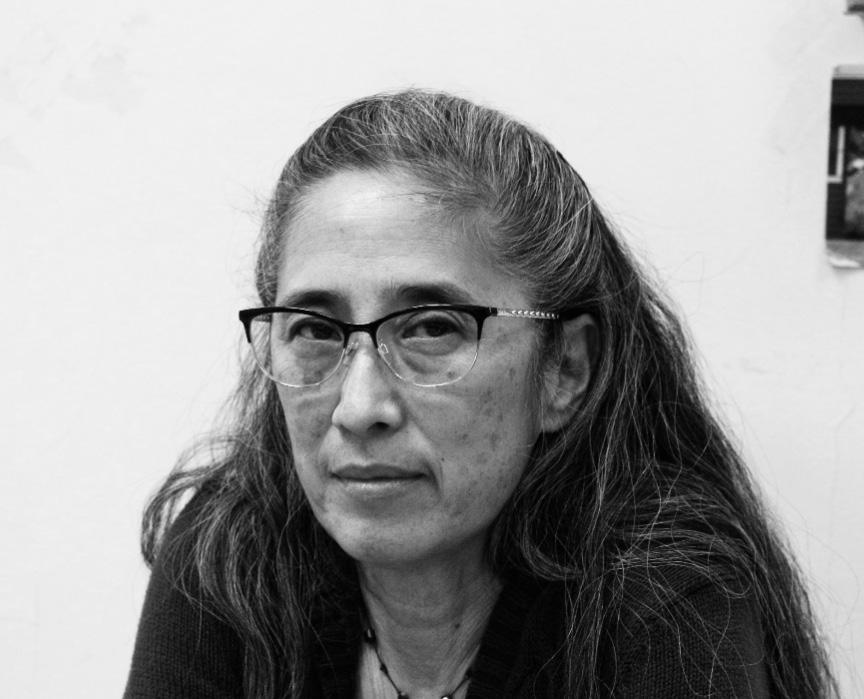
that Asian Americans had immigrated from,” Mah said.
the pitting of Asians against other groups,” Moran said. The curriculum and the class itself came out of a proposal, led by Kiri Mah and Nina Ichikawa
“I remember the class began with learning Asian geography — everyone was required to pass that geography test … to make sure we all knew the countries
It was the only time Moran would teach an elective, and she enjoyed leading a class where all the students had opted-in, already interested in the subject. Moran appreciated “the sense of community and the things that really bound the kids together.” Mah echoed Moran’s sentiment, excited to have been part of a group of students interested in their backstory. “I loved that class. My memories of it are that of … so many super engaged students excited to learn about their history,” she said.
Unfortunately for the future of the class, Moran already had a full teaching schedule, and so she had to
hand it off to other teachers. A lack of staffing contributed to the class’s discontinuation, but so did a lack of student interest: “We had to recruit pretty heavily for it,” Moran said. Additionally, AAPI History’s unique structure as a semester elective meant that when BHS phased out that type of elective, the class was left high and dry. Moran tried to combine the history class with Chicanx Studies to create a year-long program, but to no avail.
“It felt pretty magical when I took the course,” Mah said. Moran’s AAPI History class and Omwamba’s Kiswahili class continue to resonate in the minds of the students who took them years earlier.
FEATURES PHOTOS BY JAHAN INGRAHAM 11 FRIDAY, MARCH 3, 2023
FELDMAN staff writer
“...an indescribable frustration having to sit there and listen to a white teacher explain history and your culture incorrectly, while battling the anxiety of becoming the spokesperson of your community,”
Alex Scott, Former Bentley student
Joseph Omwamba taught Kiswahili for 12 years.
“It’s hard to have a solid understanding of who I am when I’m surrounded by people of vastly different backgrounds for the majority of my day.”
Mason James Sophomore at The College Preparatory School
“The (Kiswahili) curriculum was mostly syntax … but I used it to talk about African culture.”
Joseph Omwamba,
Former
Kiswahili teacher
CONTINUED FROM PAGE 1
Dana Moran taught AAPI History beginning in 1997.
ERASE, EDIT, OR REMAKE?: MOVIES WE’RE MEANT TO LOVE
CHLOE CARUTH
The history and impact of sneaker culture
BY TASNIM AIT DJEBARA staff writer
“Lady Bird” is a 2017 movie that has been called a feminist masterpiece. While I believe that the director, Greta Gerwig, created an excellent movie with strong feminist themes, the source of inspiration this movie draws from is often left out. The 2002 drama comedy “Real Women Have Curves,” an older movie with many similarities to “Lady Bird,” is an often overlooked movie. Both movies are about teenagehood and a mother-daughter connection. They examine how our relationship with our mothers shapes how we view the world and ourselves. They aim, in part, to help people empathize with their mother and view their mother as a human being. We so often see our mothers as an extension of ourselves and our own needs. Humanizing mothers is important, yet often forgotten.
However, the movies also teach us to give ourselves grace and allow ourselves to heal from our fractured self image caused by our mothers. Because part of being human means you aren’t perfect, moms make mistakes, and sometimes those mistakes can stay with their children for the rest of their lives. While both mothers make comments about their daughters’ appearances, their children react differently. In “Lady Bird,” the main character’s self image and self worth are impacted by her mother’s comments. In “Real Women Have Curves,” the main character rebuts her mothers comments and actively works to find self acceptance.
“Real Women Have Curves” features a Mexican family, but in “Lady Bird” they are replaced with a white family. Whitewashing in the media is a very unfortunate yet common occurrence. The most famous example of this is the 1961 movie “West Side Story,” an adaptation of the Romeo and Juliet story with a ‘50s teenage gangster spin in which the Puerto Rican characters were all played by white people in brown makeup. They even darkened the skin of the only Puerto Rican actor, Rita Moreno.
“Lady Bird” didn’t bring attention to “Real Women Have Curves.” Instead it retold the story in a palatable way for general white audience. There are so many similarities between Lady Bird and Ana — the main character of “Real Women Have Curves” — it feels eerie. They want to leave their private California high schools for prestigious East Coast colleges, but are both faced with the challenge of their parents’ financial struggles and familial issues. “Lady Bird” did have aspects that aren’t usually seen in the media, but they were also shown in “Real Women Have Curves.”
By whitewashing the story, “Lady Bird” loses some of the original feminist meaning that Greta Gerwig was trying to showcase. “Lady Bird” shouldn’t have gotten the recognition it did without talking about “Real Women Have Curves.”
The polarizing 1960s were the beginnings of what is now known as contemporary sneaker culture. A subculture emerged amid numerous protests, the Vietnam War, and the civil rights movement. Sneaker culture continued to grow in the late 1970s, thanks to the burgeoning hip-hop movement. As a result, sneaker culture grew to be significant in African American fashion. It created a community of creativity, expression, and individuality during times of hate and fear.
celebrity endorsements skyrocketed the success of these shoe companies. When Nike released their first pair of Air Jordans in 1985, they made a series of ads linking the shoes to Black youth culture. Sneakers began to symbolize the impactful influence that Black culture has over broader American culture.
levels of creativity, there is a way to express your style and your opinions on fashion. I use my sneakers to channel my thoughts,” Yabusaki said. “My interest in sneakers started with my friend, Marquis, and my cousin who was a reseller.”
to my community and are a way for me to celebrate Black history,” he said.
Sneakers began to symbolize the impactful influence that Black culture has over broader American culture.
Although sneakers may just seem like pieces of melted rubber and cloth to some, they’re actually a massive part of Black culture in the United States. Sneakers have been marketed within the basketball — a Black dominated sport — since the late 1960s, when a majority of the players in the National Basketball Association were Black. Sneaker companies began branding their shoes in connection to famous basketball players and began expanding sales. Black
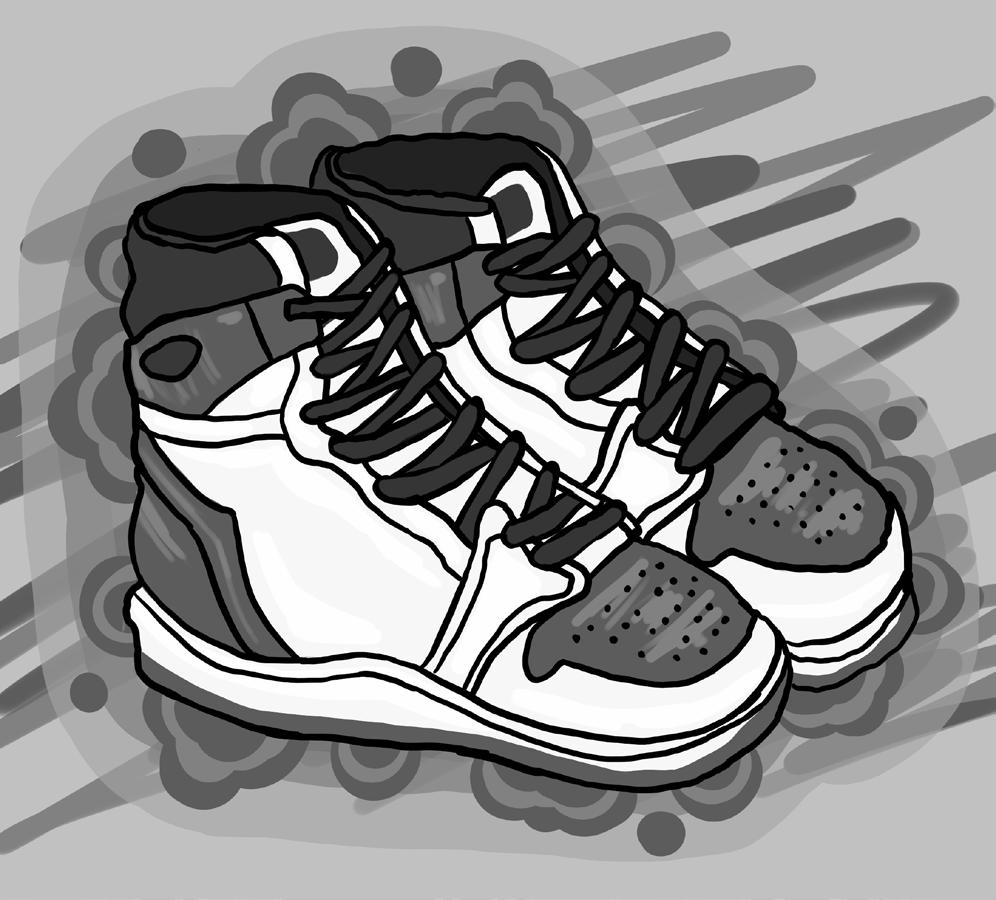
Sneaker culture back in the ’70s, ’80s, and ’90s was used as an outlet for expression. As this complex culture has evolved it has also grown rapidly all over America and the world. New terms such as “hypebeast” started and more and more collaborations between famous artists and favorite brands began to emerge, faster than ever before. As sneaker culture continues to grow today, people question whether the central values have changed. Berkeley High School freshman with a love for sneakers, Josh Yabusaki, explained what his shoes meant to him.
“To me, shoes are your personality and bring out
He explained that he started collecting sneakers in eighth grade with the help of his friend. “Throughout the rest of eighth grade I would buy half authentic and half replica shoes to expand my collection,” he said. Yabusaki talked about the connection he feels between sneakers and his heritage as well.
“Sneakers also connect me
Many other students at BHS share similar feelings towards sneakers, such as freshman Jordan Salgado. Salgado said, “Sneaker culture is generally really inclusive and cool. It doesn’t matter who you are, everyone’s welcome. Sneakers are a way I feel connected to a lot of people.” Similar to Yabusaki, Salgado became connected to sneaker culture through family. “For example, my old cousin sells and collects shoes and it gives me and him this sort of connection we wouldn’t have without shoes. It makes us a lot closer,” he said.
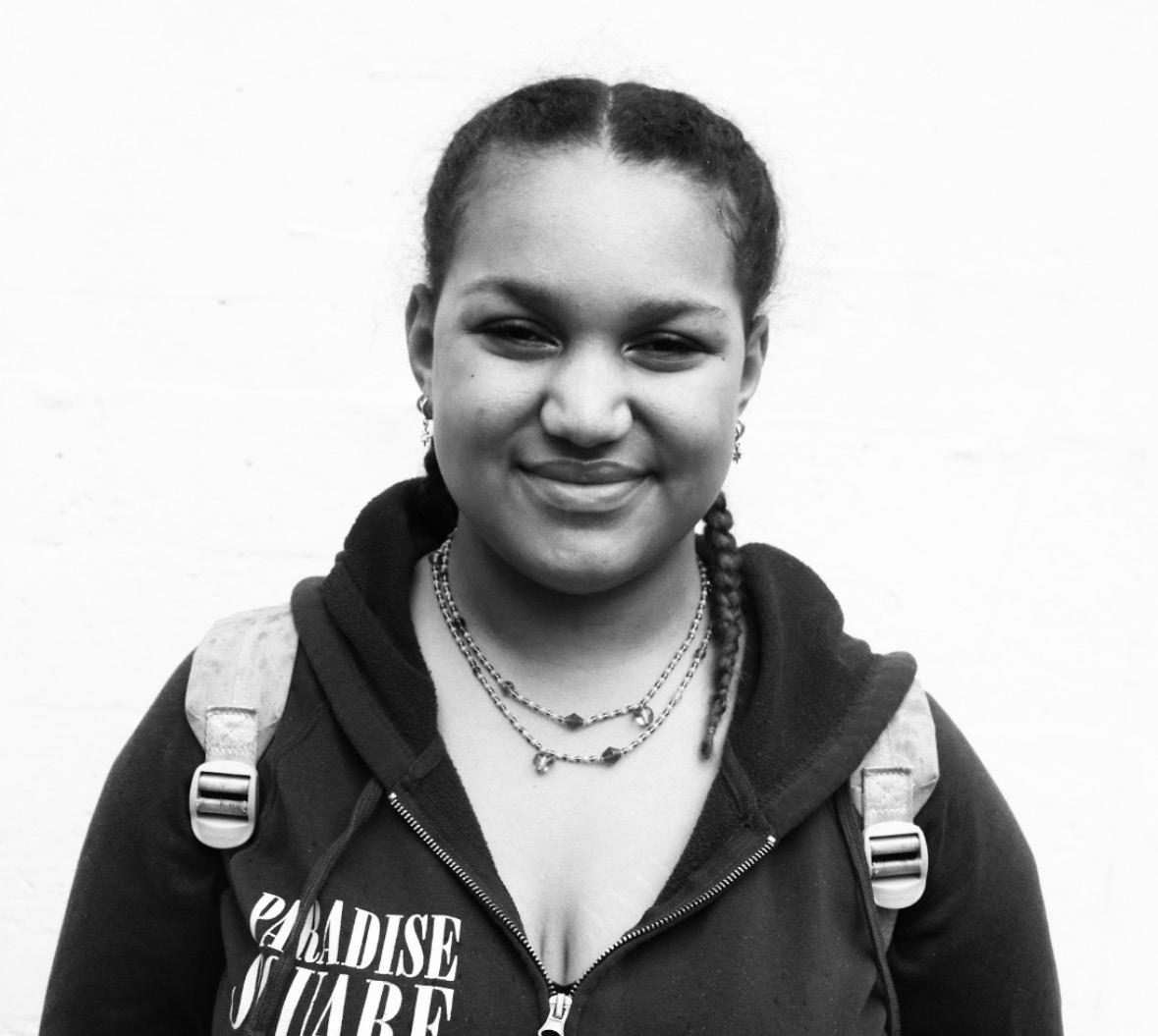
ARTIST SPOTLIGHT
overall style, and what she names the piece. One such piece is a necklace she created based on Anne Boleyn, one of the wives of King Henry VIII. In this piece, Distasi carefully selected red beads amongst the white to somewhat resemble bleeding from the neck. These small touches, along with the cause she works for, are what make her art so unique.
Distasi started curating jewelry when she was about 12 years old, but only started selling it in the past year or two. Following the Supreme Court’s decision to overturn Roe v. Wade, Distasi felt a renewed sense of dedication to the cause she was supporting. While she felt she didn’t have enough money to personally contribute at the time, she decided to take another path rather than abandoning the cause altogether.
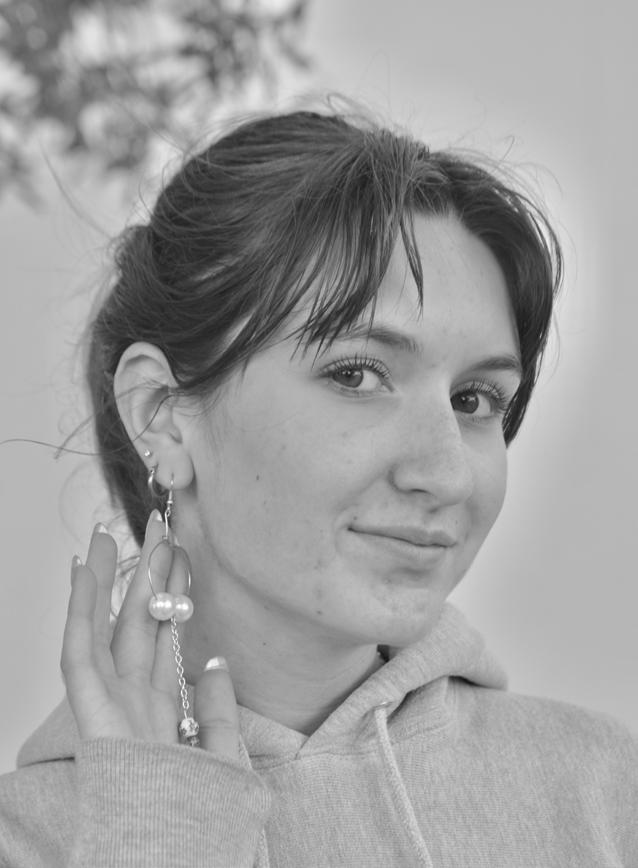
Jewelry is versatile. Ava Distasi, a BHS junior, provides an example of one of its many uses. She creates jewelry for a purpose: charity donations.
All of the money Distasi makes is donated to the National Network of Abortion Funds. The pieces she creates are each modeled after people she is influenced by, whether they’re close friends or idols. This includes the nuances she adds, the
“It’s something that I really care about, and even if I’m just donating the little money that I make from my peers buying my jewelry, it’s still something that I can feel good about and I feel like I’m contributing at least slightly to a cause that really matters to me,” Distasi said. “Just doing whatever I can.”
— Hannah Groth-Reidy
RubyFreedman@students.berkeley.net
BERKELEY HIGH JACKET ENTERTAINMENT FRIDAY, MARCH 3, 2023 12
Entertainment editors: Ruby Freedman & Marina Howard
EDEN MIDDLESWART
PENELOPE GILLIGAN
Lil Yachty abandons his SoundCloud roots in ‘Let’s Start Here’
BY OSCAR WALLENSTEIN staff writer
On January 27, Lil Yachty opened the listening party for his surprise new album, “Let’s Start Here,” with the words that many eclectic fans of modern music have been forced to hear again and again: “I really wanted to be taken serious as an artist.” He continued with, “Not just some SoundCloud rapper, not some mumble rapper.”
As one of the biggest faces in the SoundCloud era of rap, which peaked from 2015 to 2019, Lil Yachty bought his mom a house while still in high school. Through all of his first seven albums, Lil Yachty incorporated his achievements as a key theme. These projects elevated Lil Yachty to a youthful stardom, and defined his playful role in the landscape of popular music. Until now.
Many Yachty fans were not excited to hear his words at the listening party. Mainstream rappers’
departures from their genre are usually unsatisfying, given that they already have a specific public image that is often rooted in rap culture. If Lil Pump, for example, were to attempt a singer-songwriter or folk album, it would most likely not do well commercially, regardless of its musical quality. He would have a difficult time coming off as the Lil Pump many know and love within the constraints of a genre so far from his musical origins.
Yet, contrary to the arguments many Lil Yachty fans make, the quality of Lil Yachty’s newly released 14 tracks is beyond acceptable. In fact, it’s packed with A-list pop orchestrators. Patrick Wimberly, Jacob Portrait, and Justin and Jeremiah Raisen are all names well known in producing and songwriting circles for their abilities to make catchy music with an air of sophistication when subjected to closer listening. The problem with the album came with the concept. When Yachty told
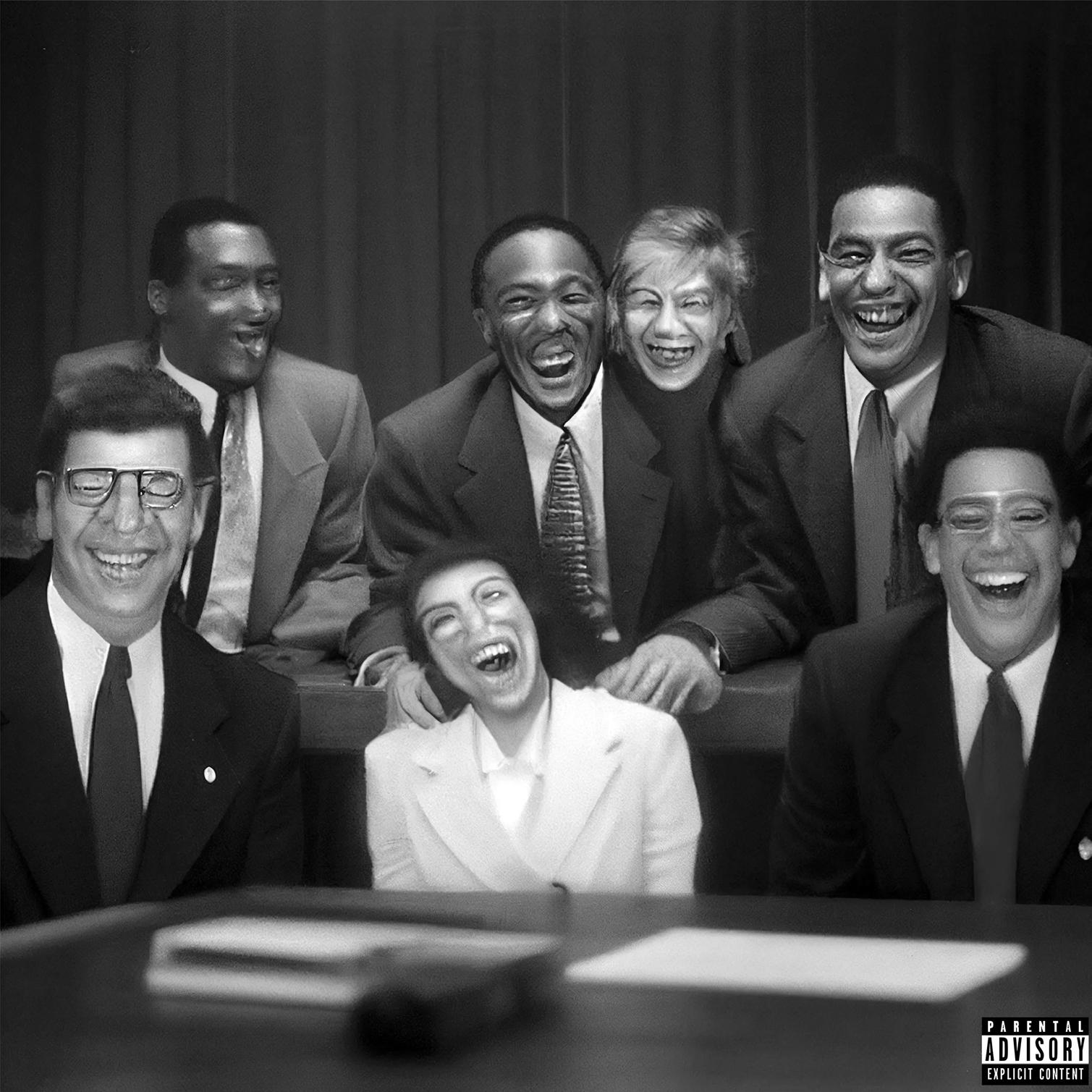
us that he wanted respect as a musician, it became clear that wanted respect from a specific audience. His words indicated his abandonment of the indifferent and often confrontational attitude towards criticism that is integral to mainstream rap culture. Whether that criticism is coming from fellow contributors to the genre or from people culturally distanced, who are often white and of another generation, rappers tend to put an emphasis on their immunity to disapproval.
The Tame-Impalameets-Silk-Sonic sound featured on “Let’s Start Here” is what taints the validity of the album. With its heavily reverb-ed synths and singing hidden behind layers of high-end production devices, the bubblegum hooks are able to escape the stigma which accompanies most modern pop, allowing fans the ego boost that can come with listening to “psychedelic rock” or “alternative dance,” without the chordal experimentation of those
genres.
The album was sold as an experiment, pushing boundaries while testing Lil Yachty’s creative prowess,
but the sound employed is instantly listenable. Yachty is already respected enough in the rap community, and he seems willing to trade
his status in the culture to which he owes a large part of his success for a notion of a Tyler-the-Creator-style transition to pop stardom.
BHS students perform community stories in ‘Our Monologues’
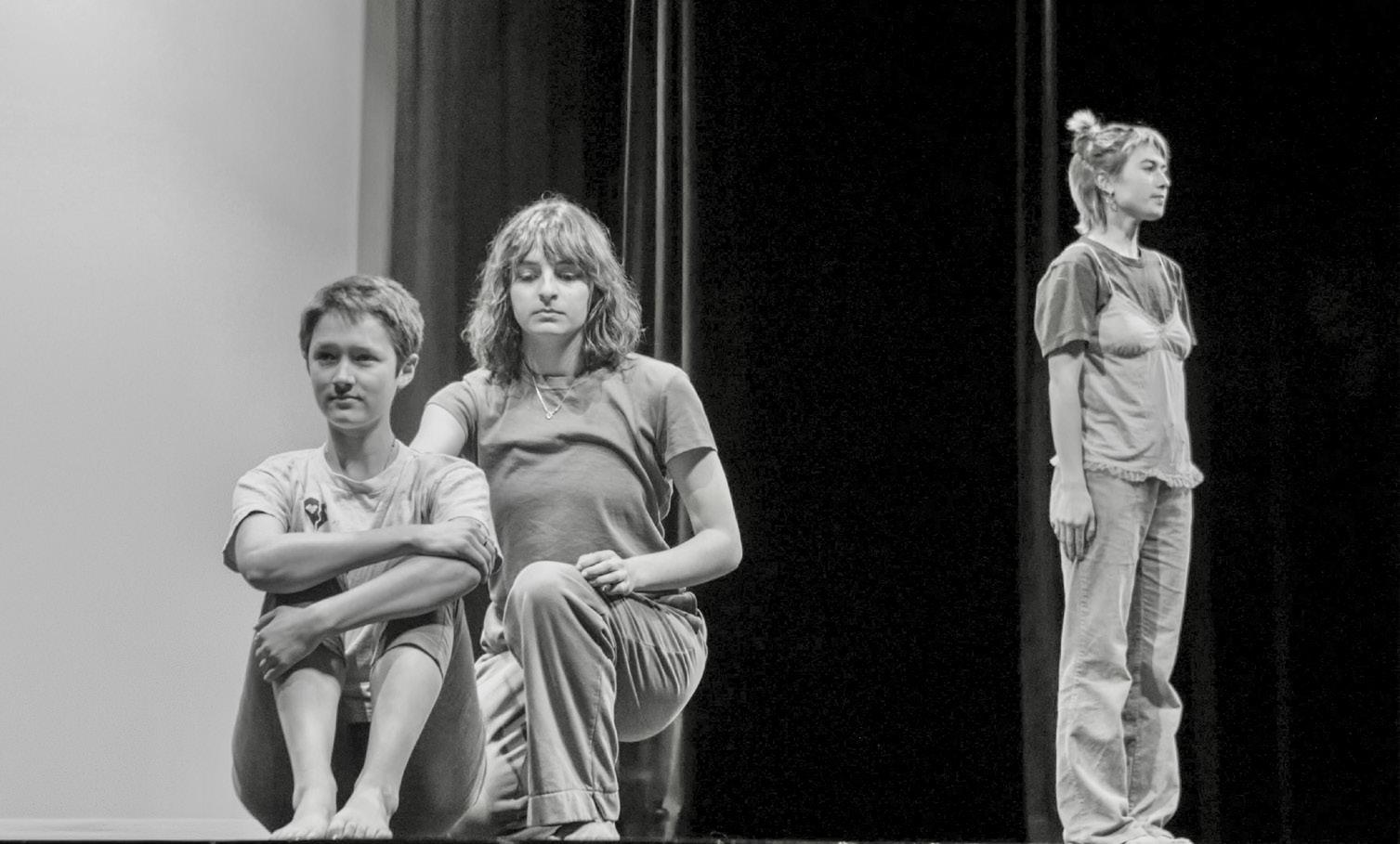
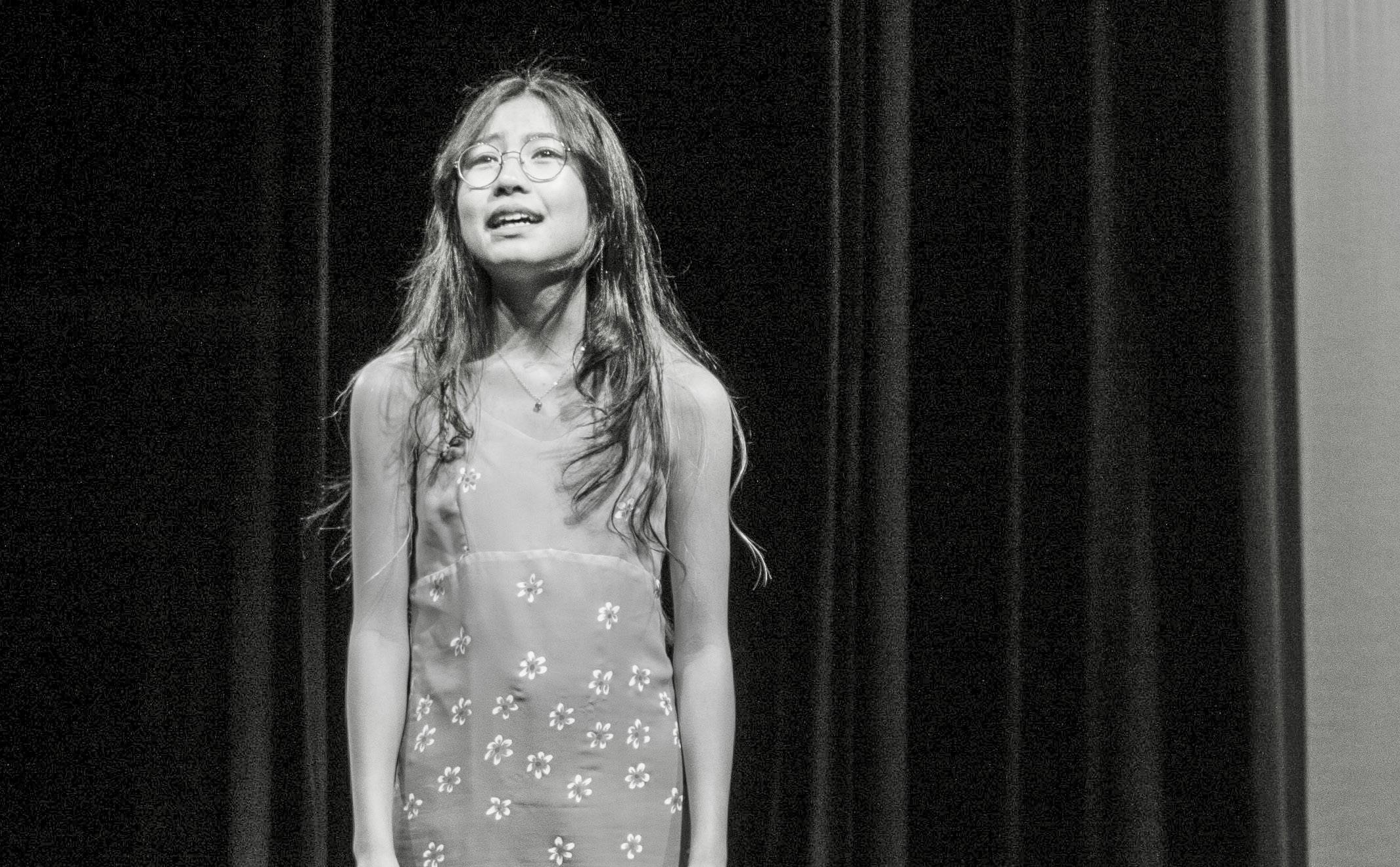
the full picture of Berkeley High school, of our community, or of the person who’s performing,” she continued.
Each monologue in the show was written and submitted by a BHS student, many of which were submitted anonymously.
When monologues are anonymous, “we have to craft a story with very little context about the person … so we have to find a way to honor the story and get the actor involved with their own interpretation (in order to) embody the piece,” Dorado said.
Eloise Biddle-Gottesman, a BHS sophomore and “Our Monologues” cast member,
has deeply considered her role as the performer of the anonymously submitted monologue “I Should Have Known.” The monologue delves into the pain and guilt that can take place after a loved one attempts suicide. “I didn’t write it, but I know that someone at Berkeley High (who might) come see the show wrote
the community’s story.”
Biddle-Gottesman uses a variety of approaches as a performer in order to stay true to the author’s piece.
this monologue,” BiddleGottesman said. “It’s not some far off playwright, so I really have to do it justice because this is someone in
“I try to get a lot of feedback from people, especially in the cast,” she said. Biddle-Gottesman continued, “(Although) it’s not my monologue, it’s definitely a monologue that I can relate to, so I try and think about how I relate to it when performing.” Each rehearsal, the members of “Our Monologues” check in with each other from anywhere between twenty minutes to an hour, talking about their lives and how they’re doing.
“It’s not only (about) getting ready for a show, it’s also getting to know a whole
group of people who you may have never met before,” said Maya Hill, a BHS senior and cast member, dancer, and choreographer. “I think that that bond between us makes us have such good chemistry as a whole cast.”
Because of the many sensitive topics spoken about within the performance, trust between cast members is a crucial part of “Our Monologues.”
“I know I have people I can fall back on consistently,” Hill said. “Even beyond this show, we’re going to stay as friends, and it’s a great community to be a part of,” they said.
In addition to being a vital outlet for student creativity at BHS, “Our Monologues” provides a space for the audience, writers, and performers to acknowledge their emotions and heal.
“It’s not just like a show for
the audience. It’s also for the actors, and it’s a way for us to process things,” said Biddle-Gottesman.
Cast members wrote and submitted their own works in addition to outside submissions, adding vulnerability to the show.
“When we’re performing our stories or someone else’s, it’s healing,” said Dorado.
“Performance is a part of it, but (‘Our Monologues’) is also about the community and just being able to share your story.”
In Hill’s eyes, “(‘Our Monologues’) is really important to Berkeley High because it demonstrates stories from people often not heard.” They added, “Having a judgment-free place where people can learn about something they may not have known someone was facing (is) really important for the people at Berkeley High.”
Performers and audience members step out of their comfort zones in the performance.
“Hopefully (when) you come to the show … there (will) be pieces that make you feel heard, and also pieces that challenge your thinking and make you see the different people around Berkeley High in different, more human ways,” Dorado said.
The final two performances of “Our Monologues” are from 7 to 9 p.m. on Friday, March 3, and Saturday, March 4. Tickets can be purchased online at ourmonologuesbhs. wordpress.com or in person at the BHS Little Theater.
Disclaimer: Various Jacket staff members are involved in Our Monologues but were not directly involved in the reporting or publication of this story.
ENTERTAINMENT 13 FRIDAY, MARCH 3, 2023
COURTESY OF CONCRETE/QUALITY CONTROL MUSIC
“It’s not just like a show for the audience. It’s also for the actors, and it’s a way for us to process things.”
Eloise Biddle-Gottesman, BHS sophomore
PHOTOS BY EMILIA FREILICH
Meilin Jokela, Maya Hill, and Medina Lam perform “Beyond the Passionfruit Vines.”
1
Jessica Hipona performs the monologue “I’m Not a Culture Vulture.”
CONTINUED FROM PAGE
‘Last Of Us’ adds humanity and emotion to the zombie genre
 BY ELTA TRACY staff writer
BY ELTA TRACY staff writer
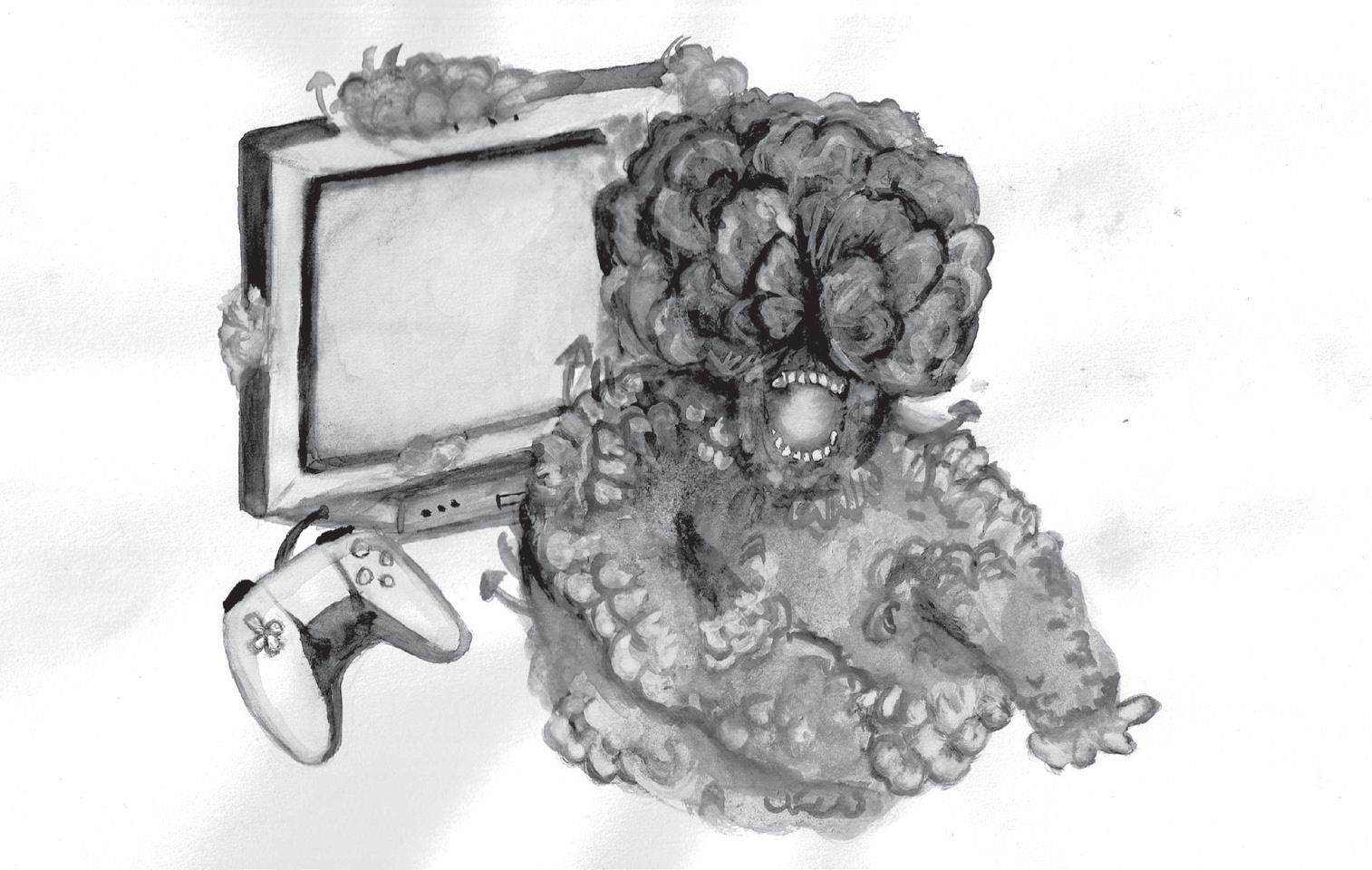
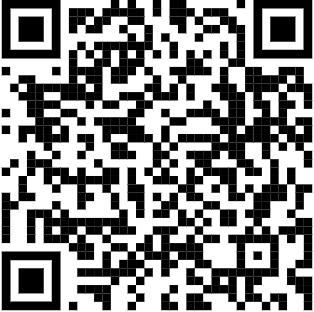
We all know the zombie genre; gory, lumbering, mindless monsters that attack bands of scruffy survivors after an apocalypse. Sometimes slow moving, sometimes fast, always bitten and stupid, the zombie has been used countless times for thrilling, if not basic, entertainment. It seemed that the material that came with it had dried up in recent years as productions like “World War Z,” “The Walking Dead,” and “Dawn of the Dead” appeared to have covered all the bases. However, on January 15, HBO released its major hit “The Last of Us,” a zombie series that took the monster theme but gave it a uniquely human angle. While this show is about the undead, it is character and story
driven, featuring themes of single-parenting, pandemics, and chosen family. “The Last of Us” brings humanity to the classic monster genre.
The show starts out with an intense pilot, featuring a pandemic-centered apocalypse where the very real ophiocordyceps fungus mutates to take over human bodies due to rising global temperatures and climate change. The infection causes people to brutally attack and bite others without a mind of their own. It is a classic zombie model with a current twist of climate change and a pandemic theme. The timing of the show’s release hits especially close to home as the world is emerging from a pandemic and climate change becomes a more prevalent problem. This just adds another shade of realness and relativity to the show.
Beyond the
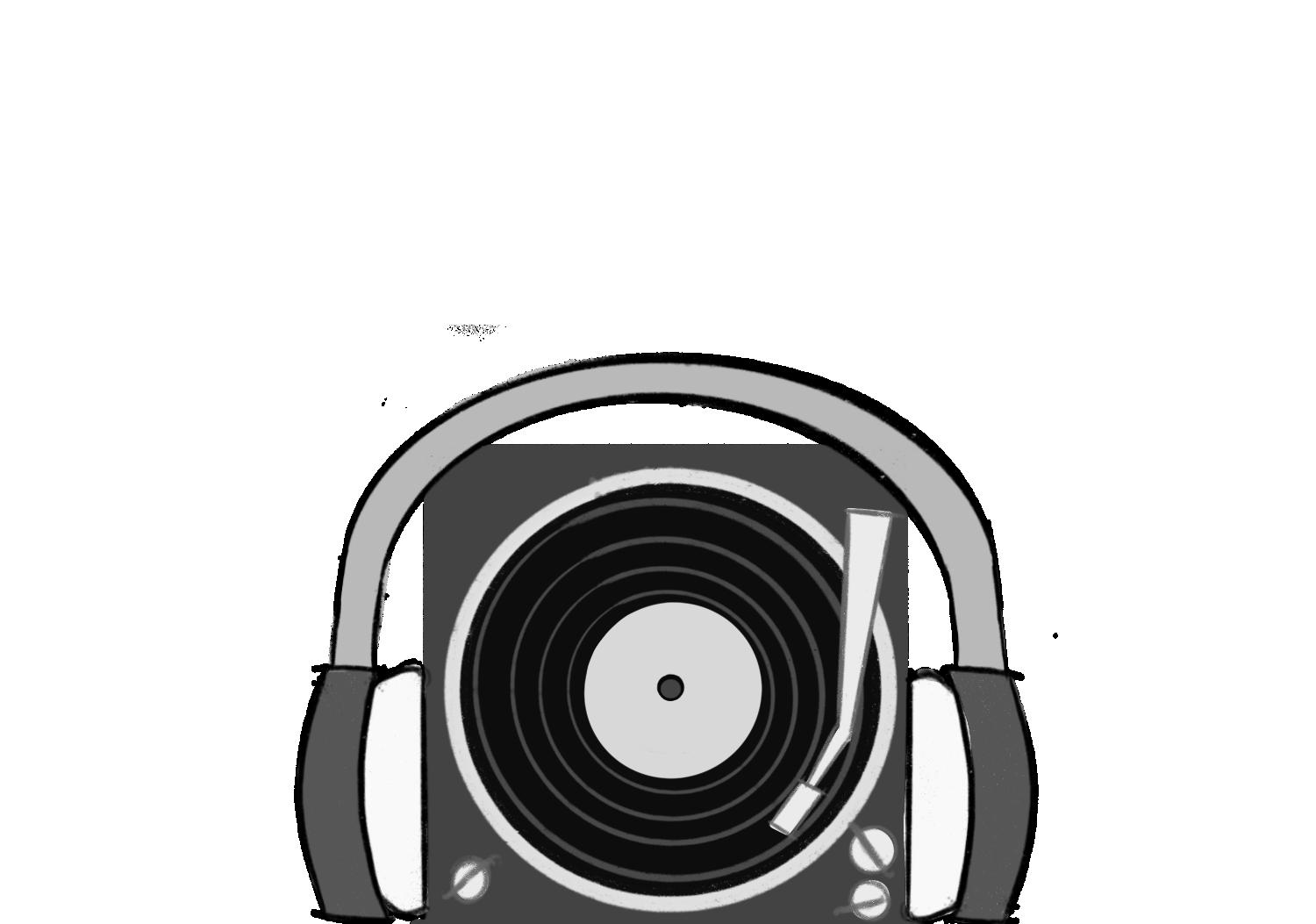
uncomfortable relatability of the series, what makes “The Last of Us” powerful is that the characters are at the heart of the show, not the monsters. While there are plenty of violent battles and bizarre zombies, the true magnetism of the show comes from the two leads, Joel (Pedro Pascal) and Ellie (Bella Ramsey). Their connection and playful dynamic is what makes viewers care about them enough to hold their breath during every battle. Additionally, the introduction of other side characters, and the in depth exploration of their backstories adds a completely new aspect not only to zombie movies but to television in general. The third episode takes a detour from the main pair, telling the love story of two seemingly irrelevant men during this apocalyptic setting. Nick Offerman and Murray Bartlett display the lives of
THE CROSSWORD

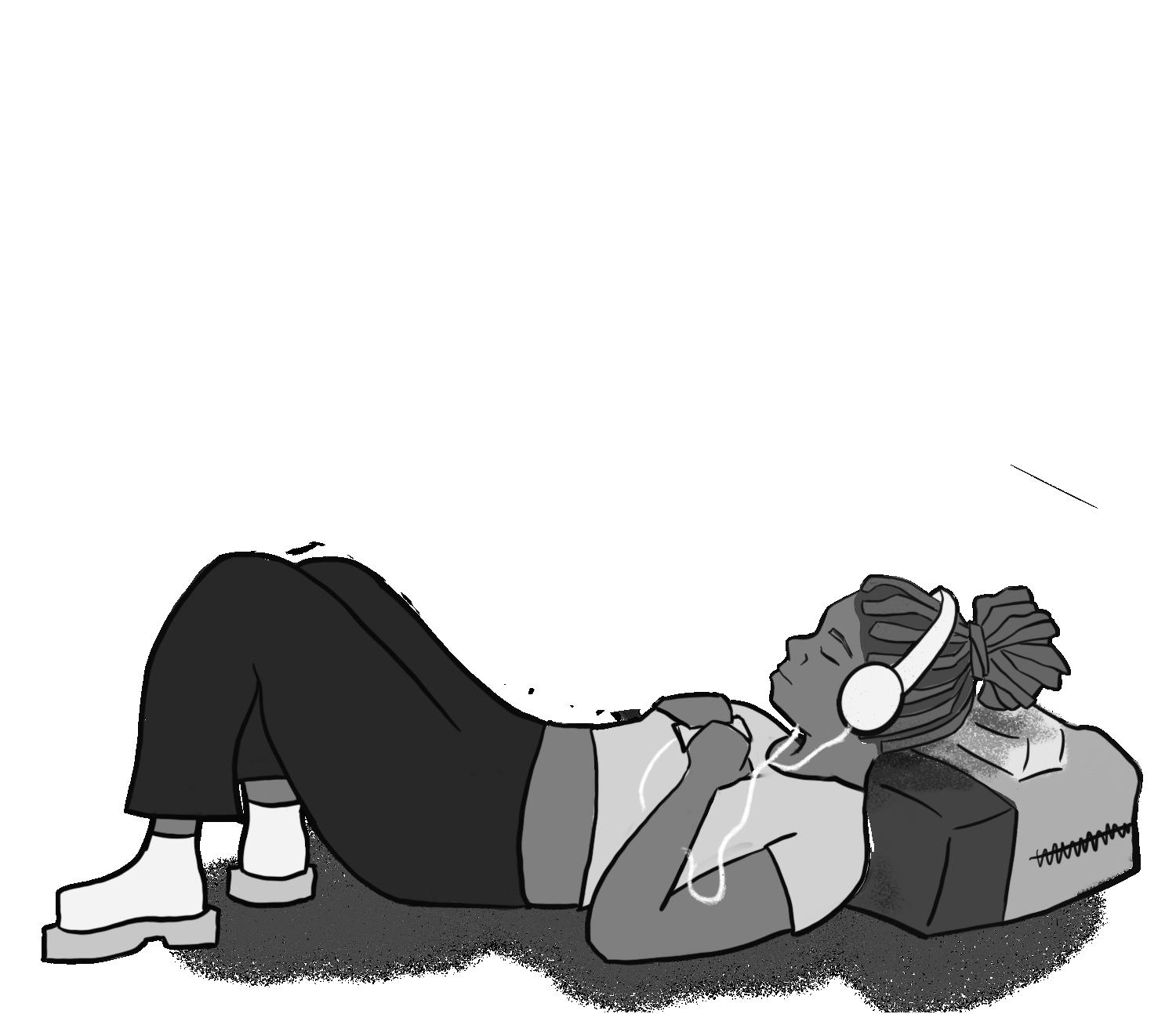
two middle aged men who meet after the outbreak and fall in love on Offerman’s character’s well-equipped survivalist homestead. This episode brings something unique to the apocalyptic framework of the show by creating a moment of immersive peace while we explore the lives of two characters who seem unrelated to our main ones. Their romantic story ends when they both peacefully end their lives, and the show shifts back to Joel and Ellie. In another instance, the most recent episode followed Ellie’s
experience with her past love interest, Riley (Storm Reid), and how that loss set her on her path.
This deep dive into emotions, love, and human connection is unexpected given that the show is based on a video game. Most television like this is more action driven, like its video game counterpart. But “The Last of Us” refutes that stereotype by representing diverse stories and voices some of which, like Ellie’s love interest, Riley, weren’t even represented in the video while
also featuring an action driven plot.
“The Last of Us” brings to life an ageold plot but with deep connection both between the characters and the viewers. The real world issues it represents make it relatable, while its apocalyptic setting makes it the right amount of escape from daily life.
“The Last of Us” sparks laughter, raises awareness, and redefines the zombie movie genre by raising the bar and daring other shows to be as heartbreaking, hilarious, and captivating.
— Raven Fonseca Jensen
— Nicholas McGlashan
ENTERTAINMENT 14 FRIDAY, MARCH 3, 2023
ACROSS 1. Walked back and forth worriedly 6. Text message service 9. Wide-ranging 13. Saudi ___ 15. Bird closely related to the chickadee 16. Thing often represented by a lightbulb 17. Kneaded, massaged 18. Favoring one political party 20. Baseball stat 21. Morse code unit 23. Memento ___ (Latin) 24. American, nickname 26. Cooking instructions manual 28. Employment stimulus loan program, abbreviated 31. Caribbean sorcery 33. Web browser or savannah journey 35. Stop briefly 38. One ___ 40. Legal proceeding 41. First Greek letter 42. Middle school English curriculum, abbreviated 43. Ancient Anatolian region that gives its name to a column design 44. Writing material 45. State Department security arm 46. Use an oath 47. Punishment with a fine 49. Own, in Dortmund 51. Rolls of grass 52. Aptly named city in Illinois 54. Bankman-Fried and Smith, for example 58. Berkeley-born hip-hop and media exec 59. Japanese belt or sash 61. Payment to a professional for services 62. Parachute behind a boat 66. Himalayan nation 68. Quite a bit 69. Shady Department of Defense intelligence agency 70. Mountain songs 71. Information about world happenings 72. Educational talk series 73. Handbag DOWN 1. Deflect, as a sword 2. Dutch constituent country in the Caribbean 3. Birthplace of Abe Lincoln 4. Recede, as the tide 5. Passed away 6. Standard conditions for experimental measurements 7. Home of the Heat and Marlins 8. Razor sharpeners 9. 8, to Octavian 10. TV program interruptions 11. Caspian or Black, for example 12. Make into leather 14. Dote on 19. Formally written work 22. Made fun of 25. Food that fits Jewish dietary restrictions 27. The Clintons’ daughter, or a London soccer team 28. Writer Thomas of Common Sense 29. Capital of Cape Verde 30. Ernest Hemingway’s boat, or one of his protagonists 32. Young grizzlies 34. Upside down smiles 35. The Mamas & the ___ 36. Mission to be remembered, famously 37. Increased, as stakes 39. Vegas attraction 48. Off-target 50. American gymnast Douglas 53. Capital of Idaho 55. Succeeding 56. Eating times 57. Some people claim to have a sixth one 58. Consumes 60. Breakfast restaurant chain 62. Peter ___ 63. Tipple 64. Propel a shell 65. British boy 67. Nigerian percussion jug PLAYLIST:
POP GABRIELLA BUSANSKY OLIVIA HIBSER Submit to next issue’s Folk playlist here!
BEDROOM
SLOW DANCING IN THE DARK - Joji Goodie Bag - Still Faire Semblant - Graybles. Good Advice - Khai Dreams Hours - Again&Again Your Soul - Forest., Biskwiq Still Beating - Mac Demarco Bags - Clairo Peach - Kevin Abstract
BHS hosts WACC wrestling championships
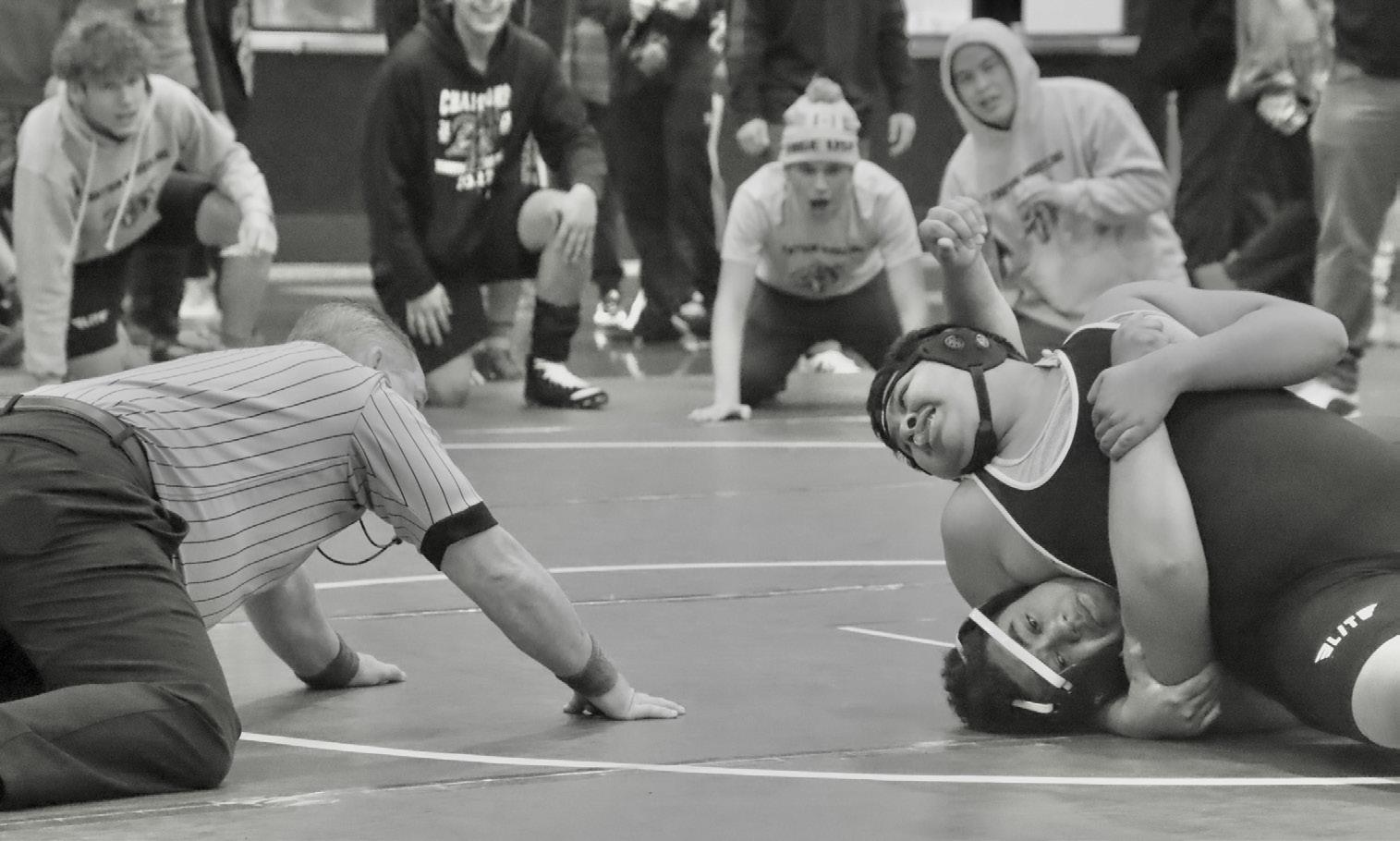
awesome.”
BY SIMON POLICY staff writer
The sheet of drizzling, gray clouds, and the sharp, cold wind disappeared behind the Berkeley High School wrestling team as they entered the Donahue Gym on February 11. The sound of friendly chatter and squeaking shoes bounced off the walls, creating an atmosphere of good-natured competition that lasted throughout the day. The gym held three large wrestling mats, each occupied by wrestlers from nine different schools as they geared up for the seasonending championship.
The West Alameda
County Conference (WACC) is a county-wide wrestling tournament for boys and girls, with over 150 matches taking place throughout the full-day event. The male athletes who won at least three matches qualified for the largerscale North Coast Section (NCS) championship, whereas the female athletes automatically qualified. The exceptional winners of the NCS championship are able to compete in the higherlevel state championships.
Shiella Paredes-Akimoto is a BHS senior and cocaptain of the wrestling team. While the championship was just beginning, ParedesAkimoto shared her predictions regarding the
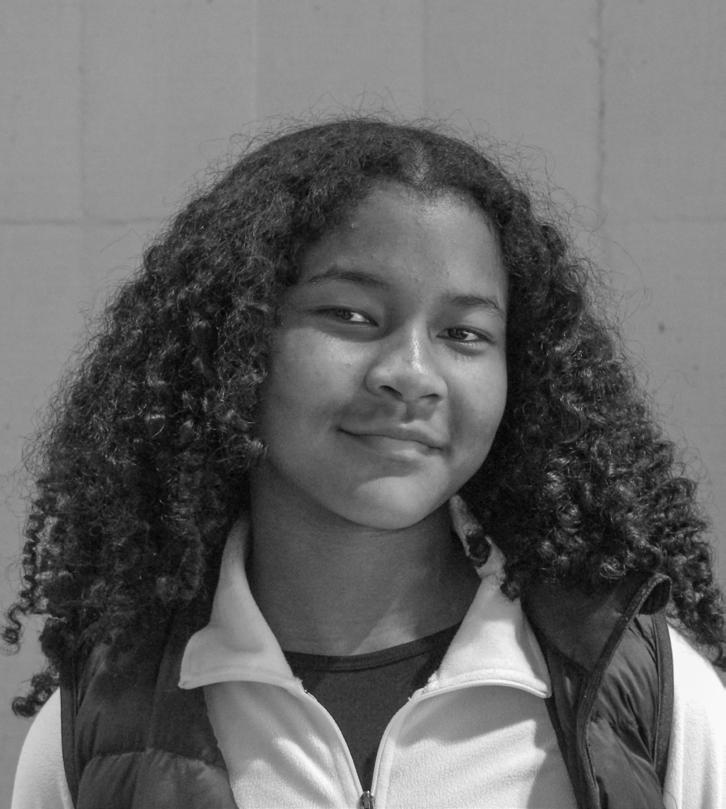
“I think our wrestlers are definitely going to do pretty well,” she said. Paredes-Akimoto explained that “the biggest thing that leads to winning matches is wrestling smart … Wrestling smart is just having good situational awareness.”
Senior and wrestling co-captain, Gabe Ross, was enthusiastic about the results of the championship.
“I think that I did great, first of all,” he said. “In my first match, I was stumbling a lot. You can see that in the video of the match. But in my second match, I had my head in the game and I was able to beat a Castro Valley kid that actually beat me earlier in the year. That was
Unfortunately, according to Ross, “there were more injuries this year than I’ve ever seen in any other year.” Several of the boys varsity players couldn’t compete in the conference tournament due to injuries. The Berkeley High boys varsity team scored a total of 51 points throughout the championship, placing them in seventh place out of the nine competing school teams. Regardless of the varsity team’s placement, many of the BHS wrestlers undoubtedly brought their A-game. Ross highlighted some of the outstanding athleticism of his teammates, stating that “Shiella (Paredes-Akimoto), the girl’s co-captain, Metztli (Olague Guerrero), a sophomore girl in her first year on the team, and I all got conference champion for our league.”
Along with the three aforementioned athletes, several other BHS wrestlers qualified for the NCS championship which occurred the following weekend.
The WACC championship showcased the comradery and talent of the BHS wrestling team. As Ross put it, “Everyone did great, and I’m really proud of my team.”
Boys volleyball welcomes two new coaches
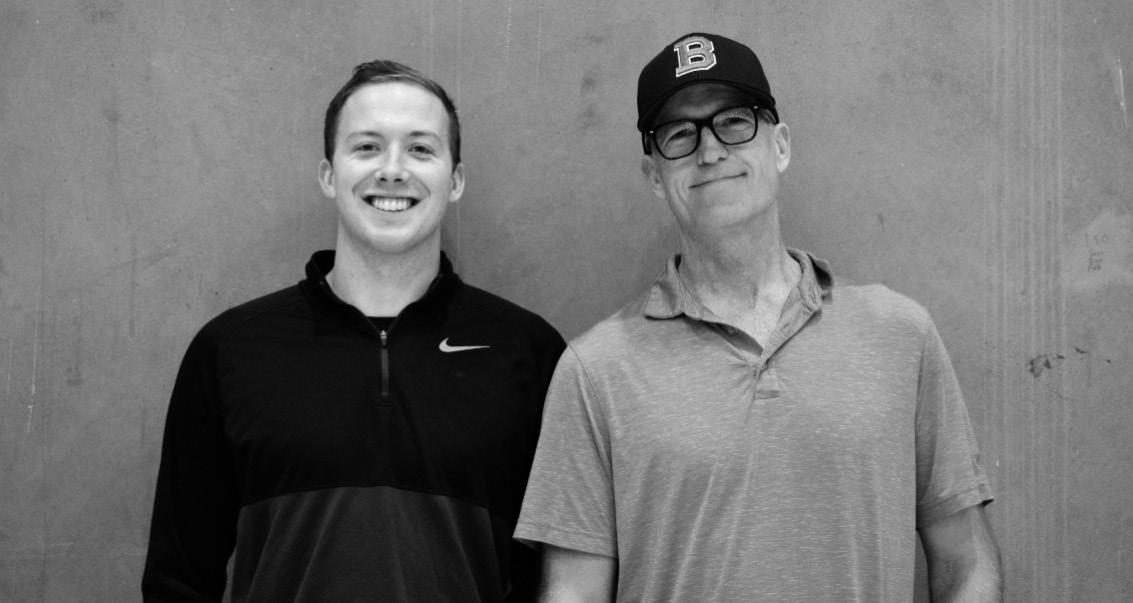 BY LULI GALINSON staff writer
BY LULI GALINSON staff writer
As the Berkeley High School boys volleyball team gears up for the spring season, they will be equipped with two new coaches for the varsity and junior varsity teams. Both coaches, Silas Everett and Colton Stone, are long-time players and former college athletes.
Silas Everett, BHS alumni, will be the head varsity coach this year, and hopes his history at the school will help him connect with his players. With 30 years of volleyball experience under his belt, he still holds fond memories of when he first started playing on a club team his freshman year. BHS didn’t have a boys volleyball team at the time.
“I played club for Golden Bears. And we went to the Junior Olympics three times. And I really enjoyed participating in that experience,” Everett recalled.
He continued his career playing volleyball for four years at Tufts University in Massachusetts, where his team went to club volleyball nationals, ranking in the top 10.
“I was selected as the club all-American at that time, and that was just a real honor,” Everett said. Postgraduating, Everett began coaching for Golden Bears for a few years and then started to travel abroad and, “picked up volleyball here and there.”
Everett sees a lot of potential in this year’s team, noting, “What’s exciting for me is that we only have one returning player so the rest of the players now have a chance to step in and fill some really big shoes on the varsity court.”
The aforementioned returning player, junior Oliver Shrieve-Herzog, noted that the new coaches have created “a welcoming
environment. And that’s really the biggest thing for volleyball.” He also sees great potential in the new players. “I think in volleyball, you can really become good, faster than any other sport. So I think if people really like it, like the new freshmen and sophomores, they can improve,” he said.
The new junior varsity coach, Colton Stone, has an equally impressive volleyball resume. He began playing volleyball during his freshman year of high school in Virginia, and by his senior year was named state player of the year. He continued playing in college at Purdue Fort Wayne at the Division I level.
“We were pretty bad my
freshman year. But then we worked super hard and got to ninth in the nation,” Stone added. He currently coaches for the Bay to Bay volleyball club.
Stone finds on the volleyball team that, “There’s a lot of work to be done. But I feel like everyone here has the common goal that they want to be successful this year. So everyone’s just working super hard right now.” Stone looks forward to helping the bounty of players who are new to the sport develop.
“I definitely see myself in some of the freshmen and sophomores just like asking a ton of questions coming in, having some great energy, lots of smiles,” said Stone.
CARINA THOMAS
It’s crazy how much changes as you grow up. You make new friends, discover new hobbies, upgrade your style … but you’re unprepared for how your relationship with food changes.
The “that girl” TikTok trend is a very popular concept. This trend showcases an extremely romanticized, perfectly productive lifestyle where one wakes up at 6 a.m., hits a workout at 6:15, and journals at 6:45 — basically the perfect teenage morning routine — a.k.a. the “that girl” lifestyle. I participated in this trend in hopes that it would improve my lifestyle and thus, my self confidence. But little did I know, these toxic routines and diets would lead me onto a very dangerous road of disordered eating and exercising habits.
I began to change and restrict what I ate. Breakfast became a smoothie. Lunch became eggs and berries. Dinner became small portions of what my mom made. Snacks? — not an option. I began exercising to punish myself and burn the calories, telling myself that anything less than these diets would make me a failure. Eventually, these eating and exercising habits became extremely obsessive — I limited myself like crazy, completely disregarding my deteriorating physical and mental health.
One day, after completing a 30 minute run on the treadmill, followed by two 20 minute HIIT workouts, my body finally began giving up on me. My vision dimmed and I became light-headed as I sunk to the ground, my sight still dark and blurry as I took deep breaths in, in an attempt to revive myself. My breaths became quick, heavy, and scared. Very scared. After that moment, I knew I had to fix my habits or else I would descend down into the deep grave of physical and mental destruction that I had unknowingly been digging for myself ever since I decided to become “that girl.”
While I’ve started to heal my relationship with food and exercising, the after effects of months of abusing my body and mental health still linger throughout my everyday life. Picking what to eat for a snack is a daunting struggle, as I tend to be extremely indecisive and anxious over choosing between the lowest calorie option or the option that I actually want. There are still times I feel guilty after completing a regular meal. Sometimes, I can’t help but think about the little girl who could once eat a stack of pancakes with maple syrup and a chunk of butter on top without feeling anything other than a valid, healthy, and happy human being.
Feeling guilty after eating creates a negative relationship with food, and that negativity is not worth the ever-lasting distorted view on what is healthy. Just accept what you eat, enjoy it, and move on. There’s no room for regret in a truly healthy lifestyle.
Too often, we allow social media trends to determine our personal goals and desires. What many of us teenagers deal with are the detrimental thoughts that cause us to over analyze our intake of food and exercising habits. Balance is key — nutrition and happiness should be treated as equal. Choose to lead a healthy lifestyle by prioritizing physical and mental well being over unrealistic standards constructed by the internet.
SEBASTIAN FLETCHER event.
SPORTS BECOMING ‘THAT GIRL’
15 FRIDAY, MARCH 3, 2023
Colton Stone and Silas Everett, pictured left to right, bring new energy to the volleyball coaching staff. MEI SAPHIR
Wrestlers match up on Feb. 11 at the West Alameda County Conference championships.
BHS SENIOR NIGHT RECAP
BY CLARA TJEN & LULI GALINSON staff writers
Longer versions available at
GIRLS SOCCER
On their February 9 Senior Night, Berkeley High School’s girls soccer started out strong with a starting lineup packed by their 10 seniors. Berkeley began with a goal 53 seconds into the game scored by senior Rosie Bessette and ended with a 2-0 win against San Leandro High School. “We have ‘family’ on our back, but it’s something that we all really mean, and we say it every day. It’s just the number one thing that makes this team different from anything else,” said senior Ruby Hill, captain, and four year veteran of Berkeley High School’s girls varsity team. She, and many of her fellow seniors, hope the non-seniors on the team are able to carry on the family legacy and community amongst new players each year.
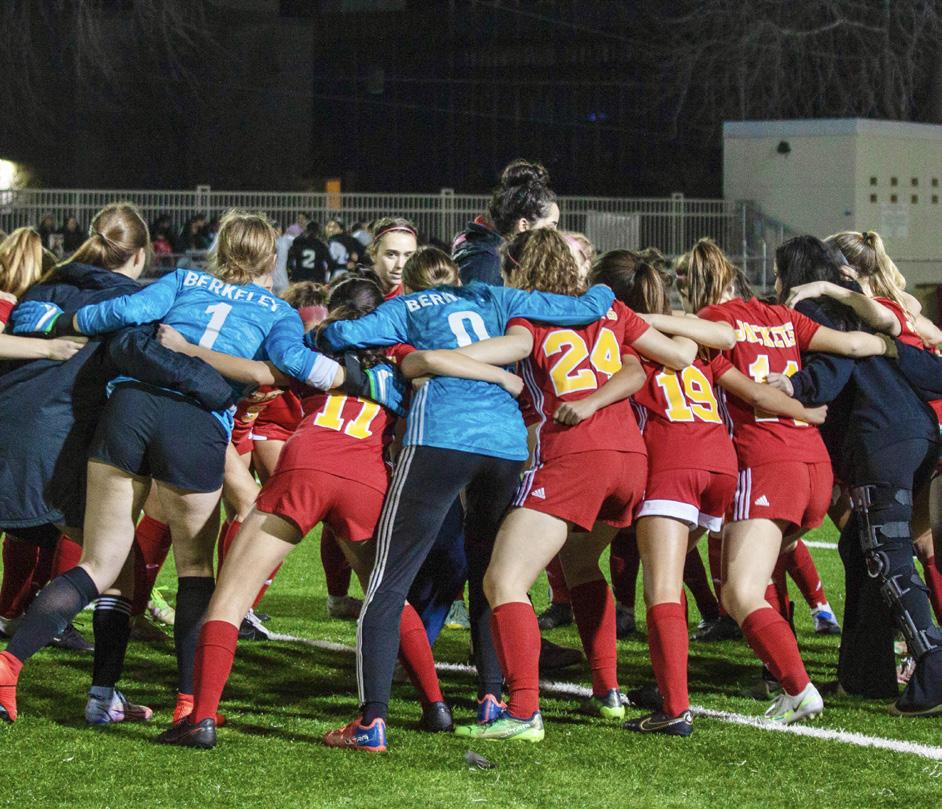
GIRLS BASKETBALL
On Wednesday, February 1, girls varsity basketball had their Senior Night game against San Leandro High School. Although they lost 33-48 to San Leandro, the fun night honored the seven seniors at the end of their season. The signature yellow and red balloon arch welcomed the seniors as they entered the court and received flowers and gifts from the other players on the team. One senior, point guard Liz Sanchez, felt as though the season ended on a good note, saying, “All of our family, friends, and supporters were out there, so we just played our hardest.” Sanchez noted that she will miss the energy she feels on the BHS court, “whether it’s my teammates, or the audience in general, and just the support of the community.”
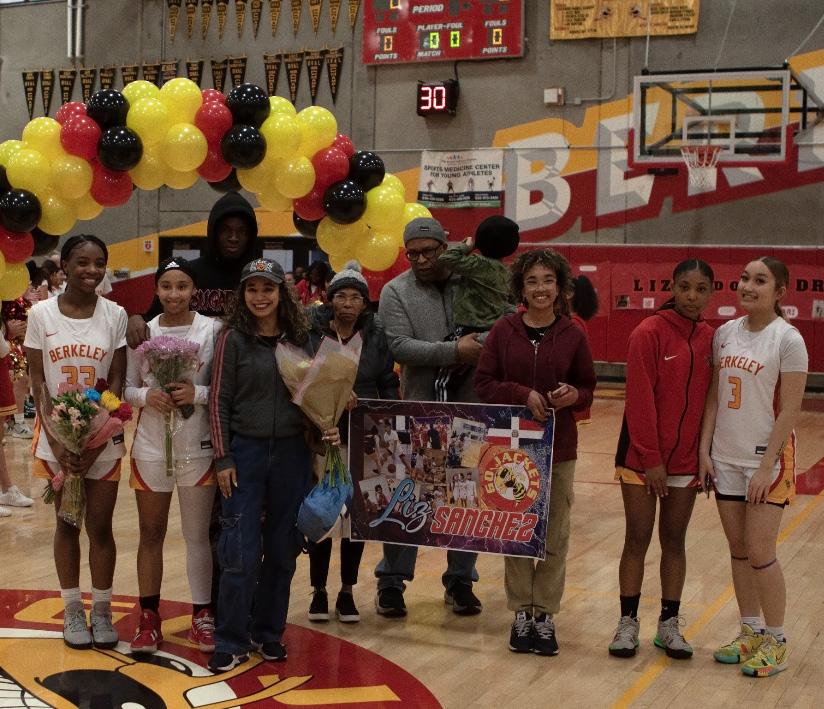
BOYS SOCCER
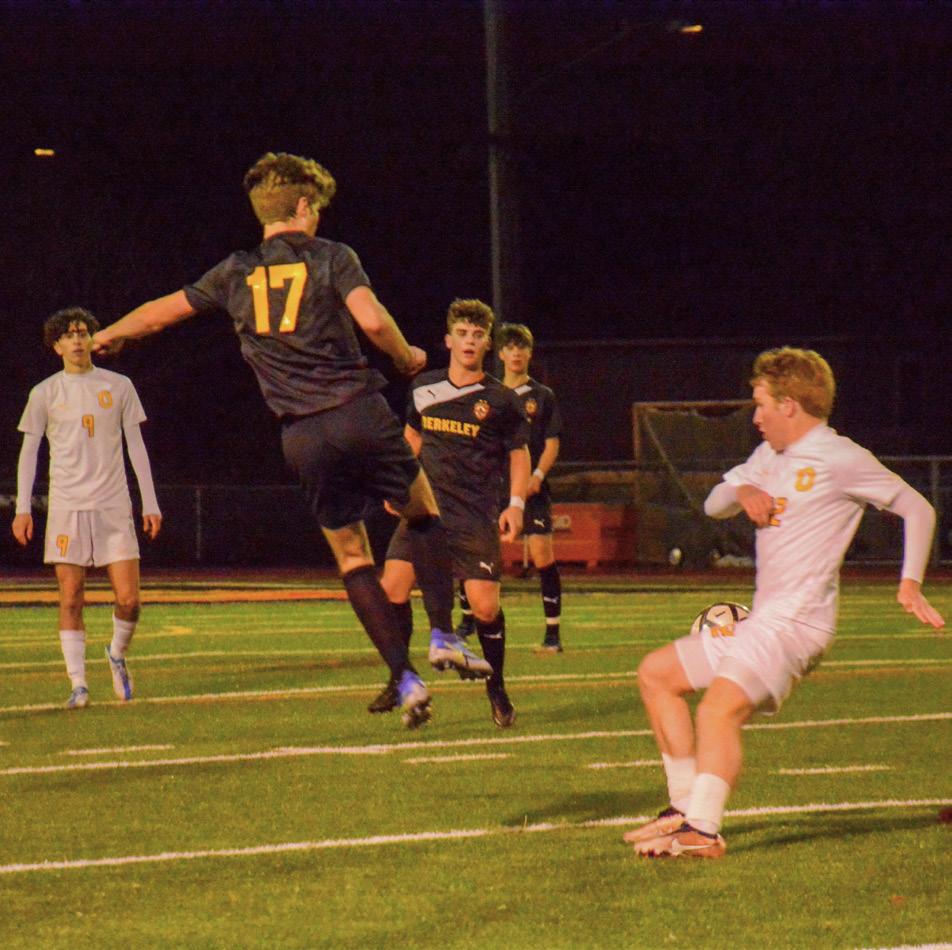
On February 10, Berkeley High School’s boys varsity soccer team suffered a difficult 1-0 loss against their rivals, Bishop O’Dowd High School. It was especially disappointing to the seniors on the team because it was their last home game as BHS players and their Senior Night. The night began with a ceremony honoring the 10 graduating seniors joined by their family members. One of the seniors, Joey Hall, shared, “I remember looking at the seniors when I was a freshman, sophomore, junior and (thinking) ‘Oh, that’s gonna be me one day,’ and then I was like, ‘Wow, that is me right now,’ and it was quite euphoric.” Jaiyah Fuksman, a captain and senior this year, echoed this sentiment, reflecting on one of his fondest memories playing for BHS when he “made a save against O’Dowd. And then they started chanting my name.” Fuksman emphasized that he is going to miss the brotherhood of the team.
Athletes preview BHS spring season
BY ZADA SANGER staff writer
Track and field had a massive tryout turnout of 300 people following their last season, when they sent one of their 200 runners to state championships.
Senior runner Jackson Harris spoke on the 2023 team, saying, “There are lots of competitive kids that want to get better and go to (North Coast Section) and state. The team culture is rebuilding as we have more coaches this year, as well as more commitment and focus throughout the team.”
The Berkeley High School softball team was league champion last year with a league record of 9-1. Senior Paola Gunier, a varsity catcher, said that she hopes “to keep building off what we had last year, which was a really solid team. We lost a few strong seniors but we have some younger players stepping up into these positions, and who are doing great so far.”
Their debut game against Dougherty Valley High School is at home at 4:00 p.m. on March 3.
Girls lacrosse took fourth in the league last year. They had a high tryout turnout
this year of 52 players, and a final varsity team of 18.
Senior player Piper Owsley emphasized that this season they are “focusing on being a more cohesive team. We have girls from different club teams and levels of experience so it’s really important that we work to come together.” Their next home game will be at 7:00 p.m. on March 10 against Washington High School.
The BHS girls swim team won league in 2022 for the first time in 20 years. There are 30 varsity swimmers this year. With new coaching staff, new access to resources like Swimcloud, the BHS swim team hopes to establish a long-lasting reputation this year. “Since we were freshmen, the swim program has improved so much,” said senior and captain Lily Welsh.
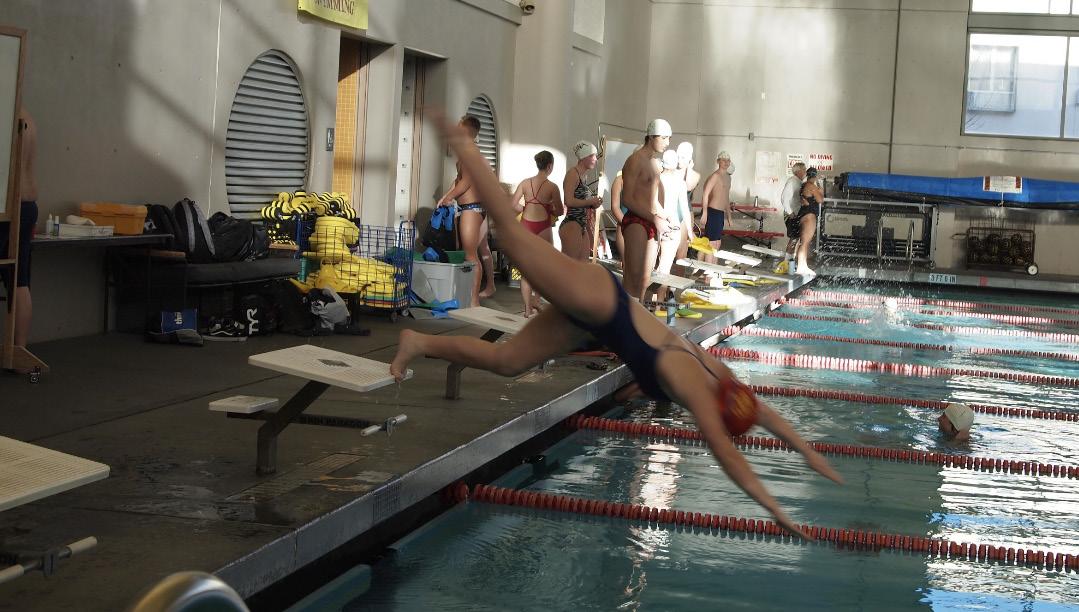
Boys lacrosse took third in league in 2022. Senior goalie Max Cherbini, on the team’s goals, said, “We want to have fun, win games, and create a strong bonded community. We also hope to build off our season last year and make the NCS playoffs again.” Their next appearance at home will be on Friday, March 3, at 5:30 p.m. against Granada High School.
ATHLETE PROFILE
Jamaia Harrison, a junior who plays shooting or point guard on the Berkeley High School girls basketball team, has played basketball seriously for around seven years, starting with her friends in elementary school and joining a club team in middle school.
Now, in addition to playing at school, she’s been able to visit other states for tournaments with her club team, Legacy United (formerly West Coast United). This has given her the opportunity to experience activities and environments outside of California. Harrison, who is 5’4”, finds that differences of height don’t bother her. “It’s your skill that helps you do what needs to be done in the game … There’s so many people smaller than me that play basketball,” she said. Unfortunately, Harrison has been injured since December, when she sprained her ankle after “being guarded by a girl who was 6’4” the whole entire game.”
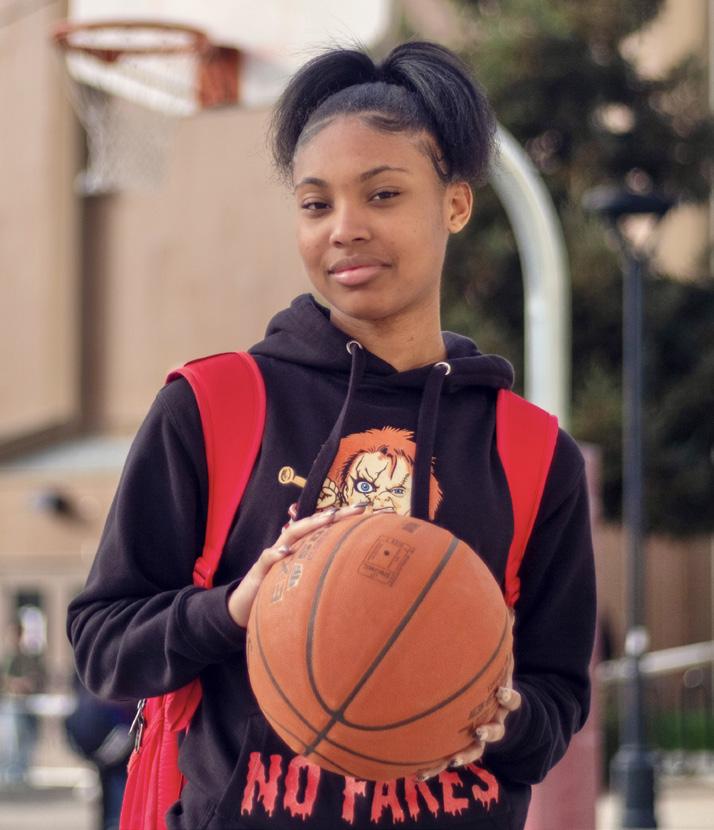
norahlee@students.berkeley.net
BERKELEY HIGH JACKET Non-Profit Org. US Postage Paid Oakland, CA Permit No. 8334 Berkeley Unified School District Berkeley High Jacket 1980 Allston Way Berkeley, CA 94704 16 FRIDAY, MARCH 3, 2023
MALINA MEISSNER
sports editors: Luisa Bertolli & Norah Lee SPORTS
Senior Joey Hall, suspended in the air on Senior Night.
EMILIA FREILICH
EMILIA FREILICH
BHS swimmers dive into the 2023 spring season. MORGAN OSTRER
NOLAN WHITEHILL
— Mateo Tsai
Girls soccer huddles for a cheer on Senior Night.
bhsjacket.com.
Girls varsity basketball held senior night on February 1.

 BY MADELYN PHILHOWER staff writer
BY MADELYN PHILHOWER staff writer
























 BY SABINE ROSEN staff writer
BY SABINE ROSEN staff writer
















 BY ELTA TRACY staff writer
BY ELTA TRACY staff writer







 BY LULI GALINSON staff writer
BY LULI GALINSON staff writer




